

Ivana Stefanovic – 13 900 words
China is a country of immense contrasts and possibly the most geographically diverse place in the world. The old Chinese empire had long been the world for itself, the world that many people today wish to explore and understand. My rail journey allowed me to see different aspects of this country: from modern cities, futuristic constructions, exclusive shops selling expensive luxuries, to little huts made of metal and plastic, life on the countryside where land is still cultivated by hand, and chaotic markets selling animals. However, no matter how well you think you’re prepared for the adventure in China, some parts of this country and experiences along the way will still leave you feeling a bit ‘lost in translation’.
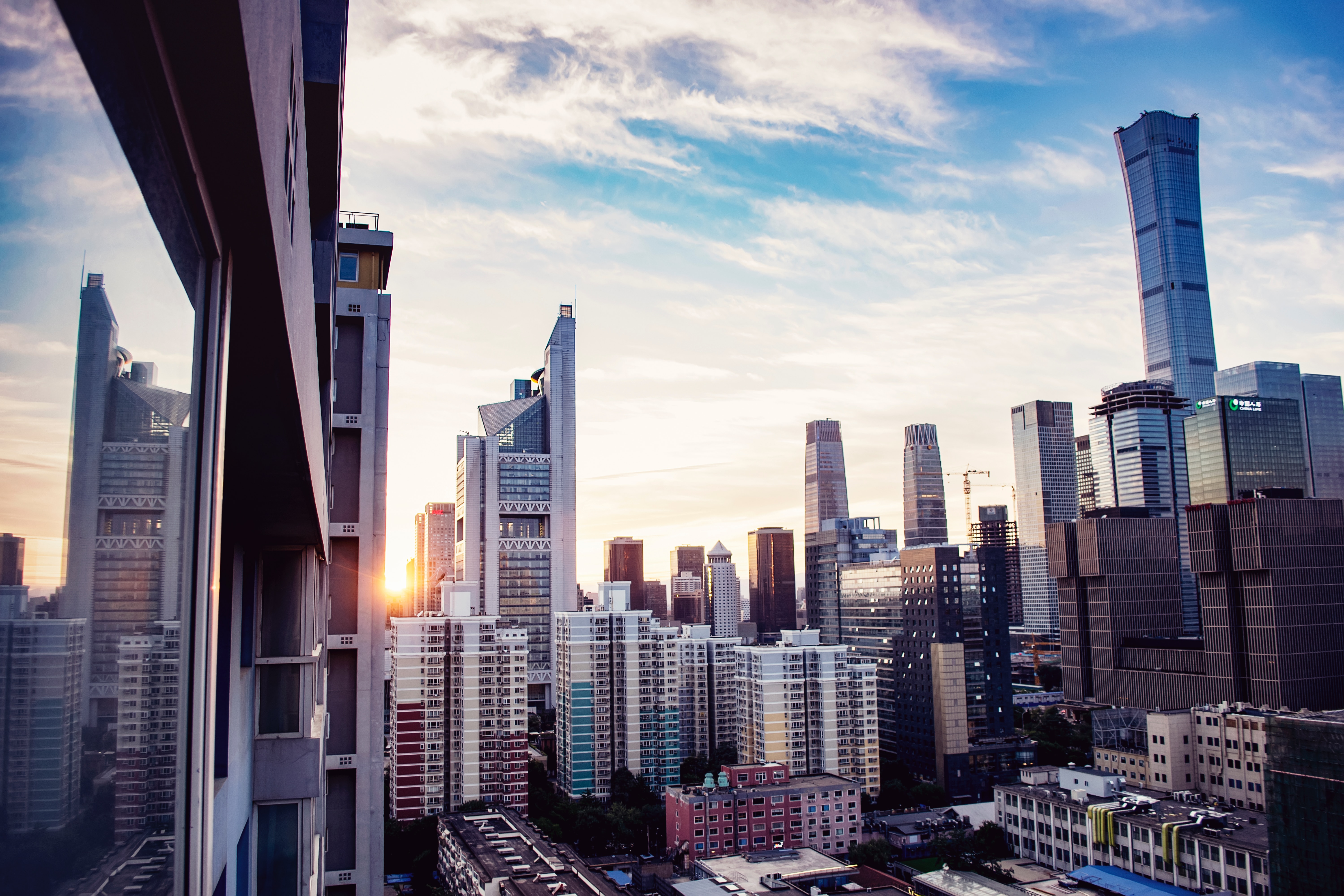
When thinking about China, it’s impossible not to notice how the country gradually became a powerhouse of trade, thus creating enormous opportunities in the market. Beijing, one of the leading centers of business and economy, has seen many people moving to the city. Furthermore, Beijing is a city where the ancient culture meets the modern civilization, offering tourist attractions that bring tens of millions of visitors to the capital. Set on Beijing Time, which is also the only official time zone, I started my journey in China’s capital, a home to the Great Wall. The last time I was in Beijing, I visited the Forbidden city, so this time I decided to marvel at the ancient Chinese architectural art in the Temple of Heaven.
Built in 1420, the Temple of Heaven served as the holy place for emperors of Ming and Qing Dynasty. The main building of the temple complex is the Hall of Prayer for Good Harvests, where, as its name suggests, emperors prayed for good harvest and good year. Supported by 28 pillars, this circular, three-tiered hall is made entirely of wood without the use of nails. Described in the World Heritage Sites List as a masterpiece of architecture and landscape design, the Temple of Heaven is rich in symbolism.
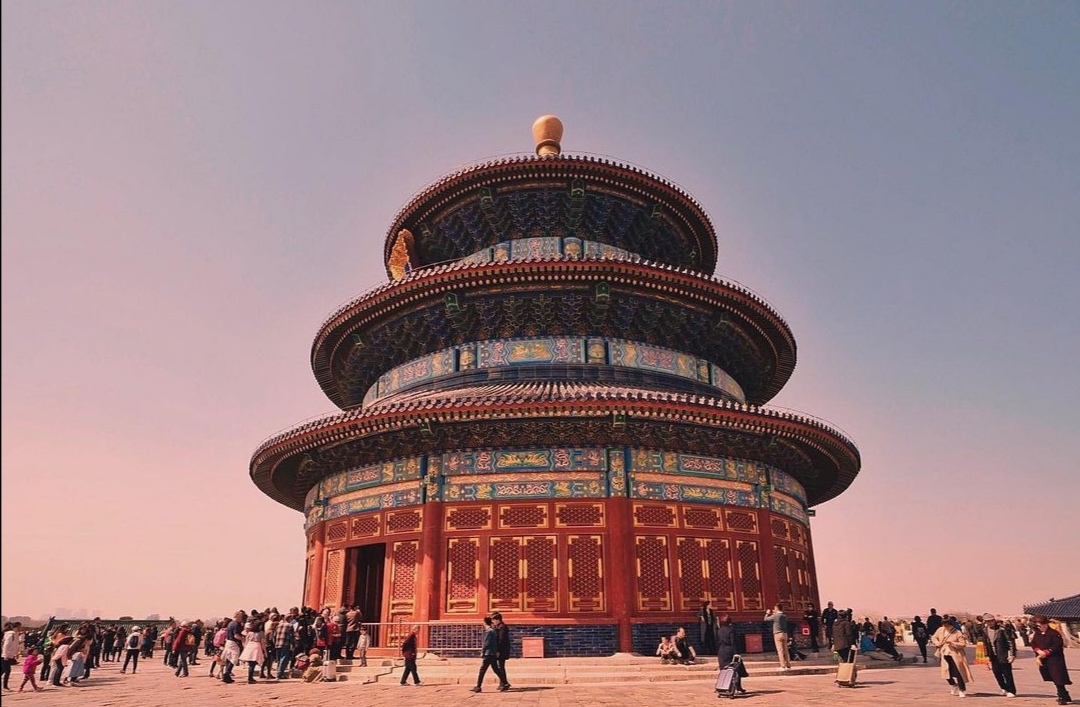
The layout of the Temple of Heaven shows that the structures (Altars) are round and their bases square. This is a pattern that has roots in the ancient Chinese belief that heaven is round and earth is square. Both the Chinese understanding of cosmology and numerology played a big part in design. The number nine was considered to be imperial and represent eternity, which is why the slabs forming the Round Altar were laid in multiples of nine. Furthermore, twenty-eight pillars are divided into four central pillars to represent the seasons, twelve middle pillars to represent the months, and twelve outer pillars to indicate twelve periods of a day.
Although in imperial times only ‘sons of heaven’ (emperors) were allowed to be at the temple, now everyone can enjoy this beautiful space. Seeing local people doing morning exercises is an interesting experience. Normally, I’m used to seeing people in parks running or doing exercises on their own, but at the Temple of Heaven, almost everyone was part of a group.
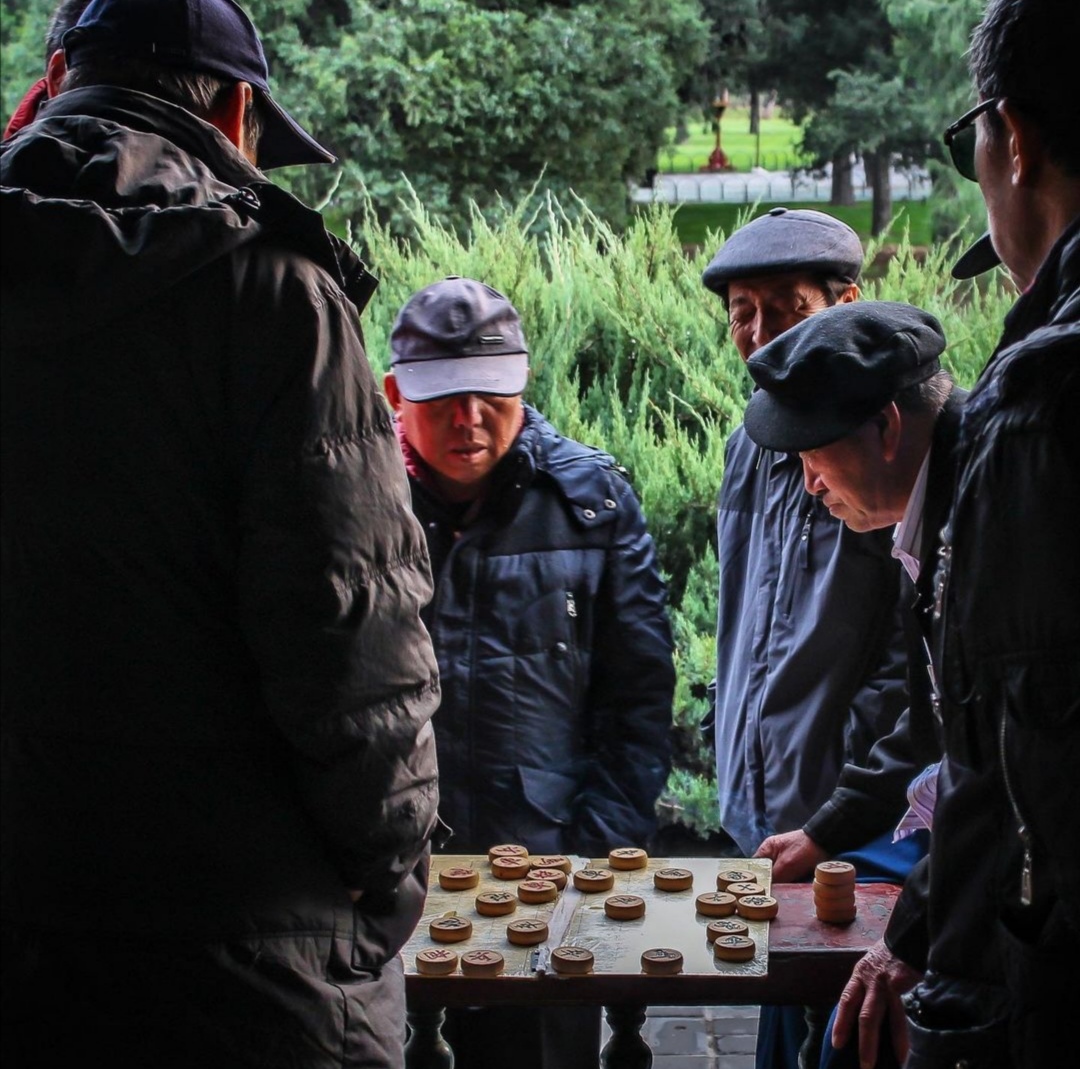
You can see different groups practicing dance, kung fu, playing instruments, board games, or learning the martial art of sword fighting. Another surprise was seeing people of all ages in one group, children next to older people, all practicing tai chi, mastering the slow and flowing movements in total synchronicity and harmony. Everywhere I looked, I could just feel their collective spirit.
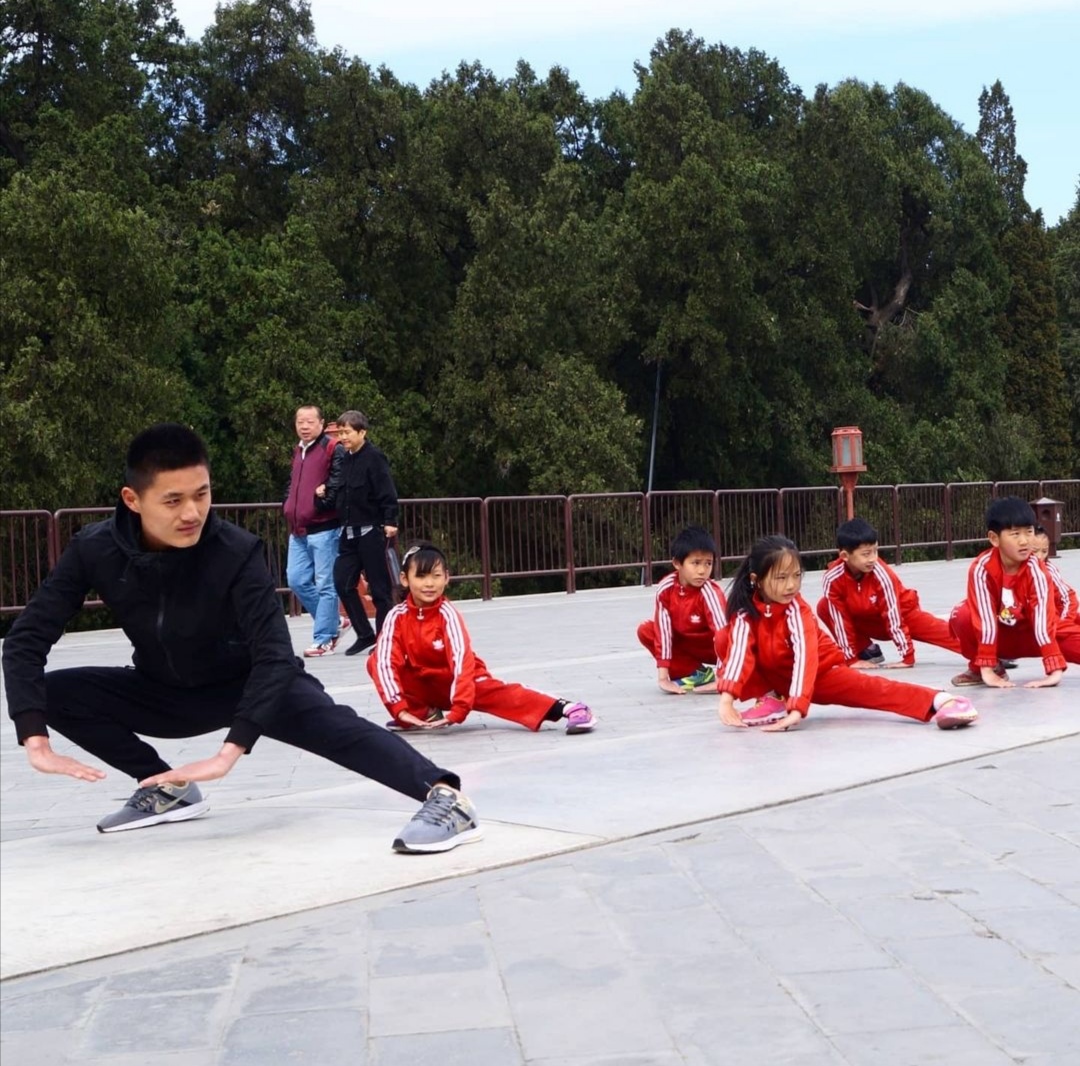
To stay in royal mood, you can add the Summer Palace to your list, the largest and most well-preserved royal park in China. Built in 1750 as a summer retreat for imperial families, this vast complex of gardens, palaces, lakes, and temples is one of the places in Beijing where tranquility and harmony with nature help you distance yourself from constant traffic jams and pushy crowds of people. Constructed around the Longevity Hill and Kunming Lake, the landscape needs to be enjoyed with a slow pace, either on foot, boating on the lake, or both.
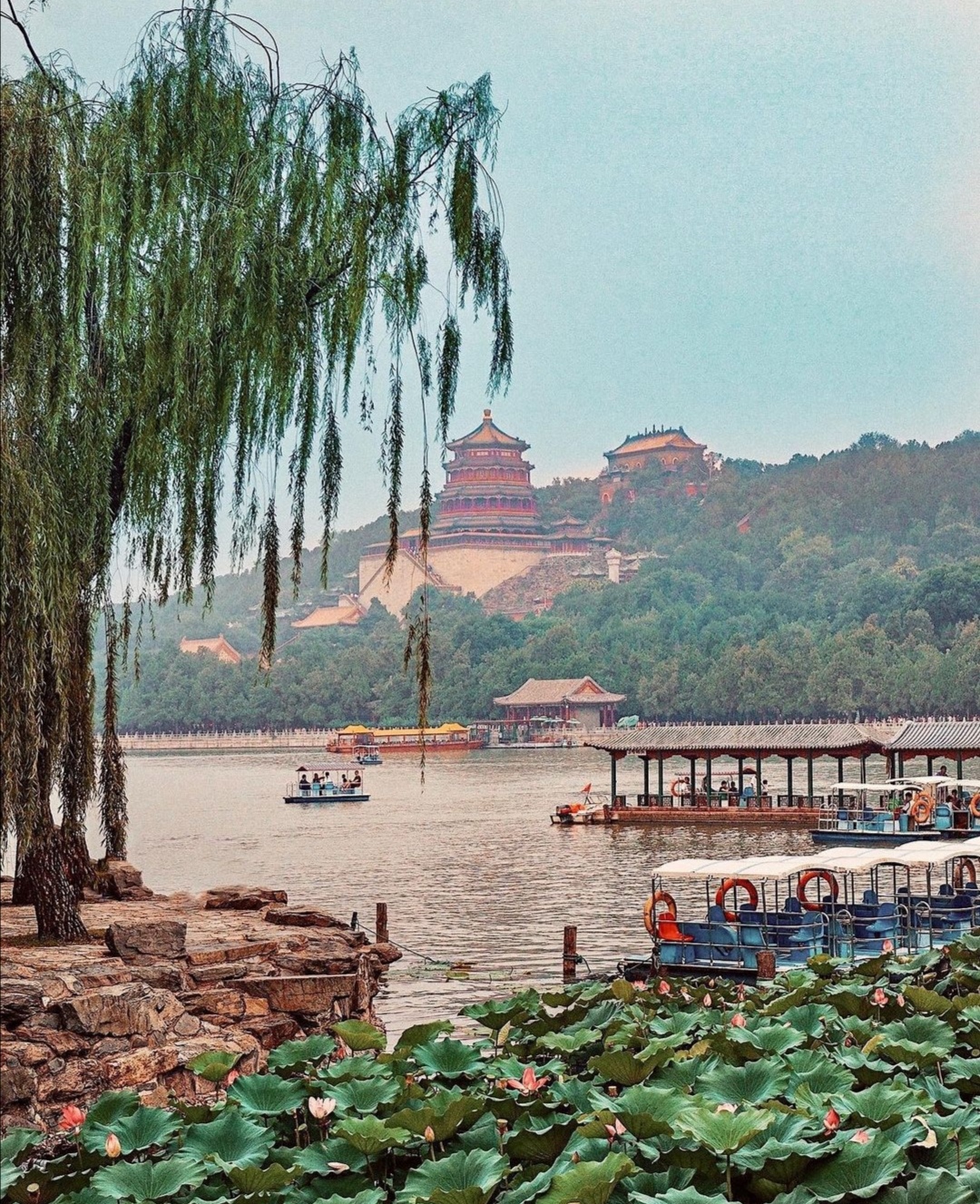
Listed as World Heritage in 1998, UNESCO reported the Summer Palace to be "a masterpiece of Chinese landscape garden design”. While surrounded by natural scenery, you get to discover a great cultural and artistic value of this place. The longest covered promenade known as the Long Gallery (or Long Corridor), is a unique 728m long art gallery built entirely of wood, featuring more than 14,000 pictures of landscapes, flowers, birds, historical figures and stories on its beams and ceilings. Paints that were made from the raw colors of minerals protected wood structures from depredation by insects, rain, wind and sunlight. These works are true treasures of art, which is why the abundance of colored paintings, as well as the length of the Long Gallery were the reasons for including it in the Guinness Book of Records.
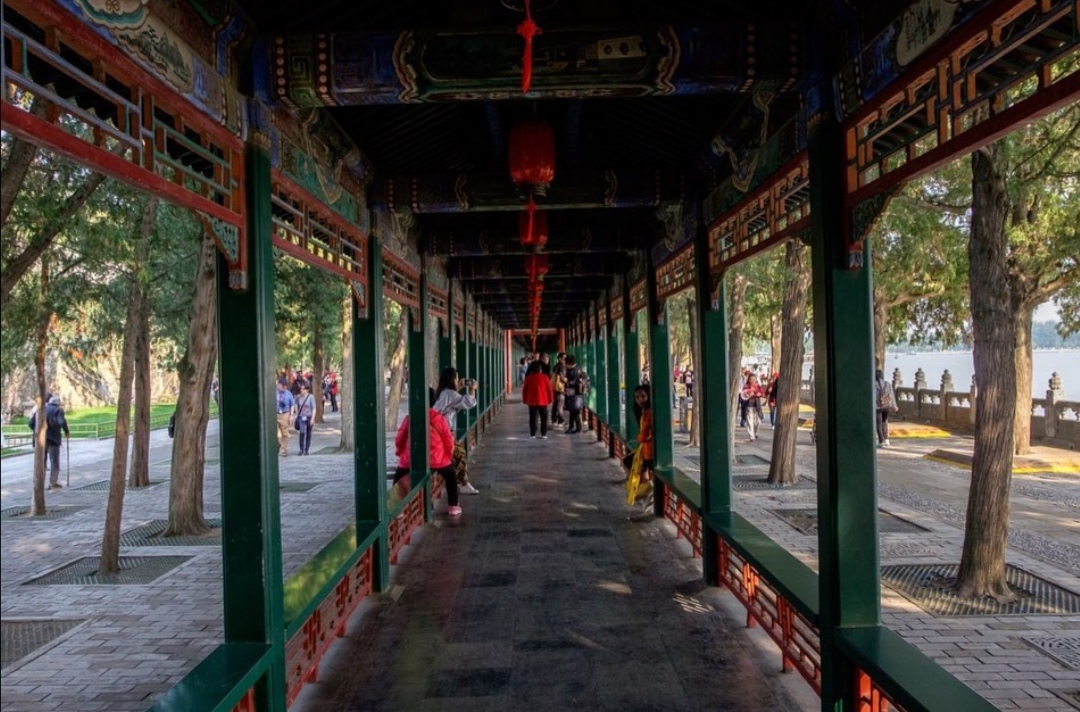
Escaping from the never-ending traffic, noise, and construction on the city streets, my exploring took me to the heart of old Beijing and the Temple of Confucius. I wanted to find out more about a major representative of Chinese thought who lived from 551 to 479 BCE, a contemporary of the Buddha in India and of the pre-Socratics in Greece. I believe that if any person in the world was to name one great Chinese thinker, we’d all say Confucius; however, I admit that my knowledge on Confucianism, its birth, and its place in modern Chinese society today was quite limited. I’ll try to summarize as shortly as possible my findings on Confucianism, at least some basics I found necessary in order to understand better the people and the country I was about to discover.
The fall of Zhou Dynasty gave rise to the chaotic era known as The Warring States (c.481-221 BCE) during which the seven separate states of China fought each other. Social anarchy and collapse of the central government made Confucius think that there had to be a better way, so he started to formulate philosophies that could alleviate the sufferings of the people. He was a big admirer of the order that existed under the dynasties, especially during the glory days of Xia dynasty, acknowledging the importance of tradition and customs as a means to keep people together. He saw the opportunity to bring change to his people by establishing new customs, which would take time to be accepted by various people and systems. He became a teacher because he knew that even though people wouldn’t listen to him, his students would. Honored as the ‘Great Sage’ and ‘First Teacher’, his teaching on ethics, good behavior, and human-centered virtues were transmitted by his disciples after his death. With human nature capable of improving through constant learning, the central idea is that of becoming and making oneself a human being, which comes through our relation to others.
He believed that one needed to strive to become “Chun Tzu” – ideal or superior person. Becoming “Chun Tzu” was possible through cultural practices and relationships established, with the idea that we are all the relationships that we are part of. For example, I am my relationship to my family, to my friends, my community, to the nation, and all of the humanity. We live within all of these contexts and we are the sum of the quality of our relationships. So, the true value lies in a person being a social being, where every person has a responsibility in a relationship, and needs to show respect. The core idea is that a person isn’t just independently existing; rather, one is always connected to and influenced by what happens to other people. For such reason, focus needs to be on the importance of personal ethics and morality. To sum up, the main idea of Confucianism is the importance of having a good moral character, which can then affect the world around each individual.
A strict code of ethics one should adhere are known as the Five Constants and Four Virtues: Ren – benevolence; Yi – righteousness; Li – ritual; Zhi – knowledge; Xin – integrity; Xiao – filial piety; Zhong – loyalty; Jie – contingency; Yi – justice. All of these were equally important, but they started with filial piety as a priority. The idea that family needs to be honored and kept together by showing respect for parents and ancestors was seen as an important part of the teaching aimed to stabilize society and bring China together. Confucianism has been and remained one of the most influential philosophies in China. Through history, it has gone from the official state ideology to existing alongside Buddhism and Taoism as one of the religions, from being repressed by dynasties and regimes in the not-so-distant-past to being revived again. I’m sure that the great thinker couldn’t have imagined having this much influence in the 21st century, let alone having the Confucius Institute founded in 2004 and many more opened in counties and on college campuses around the world.
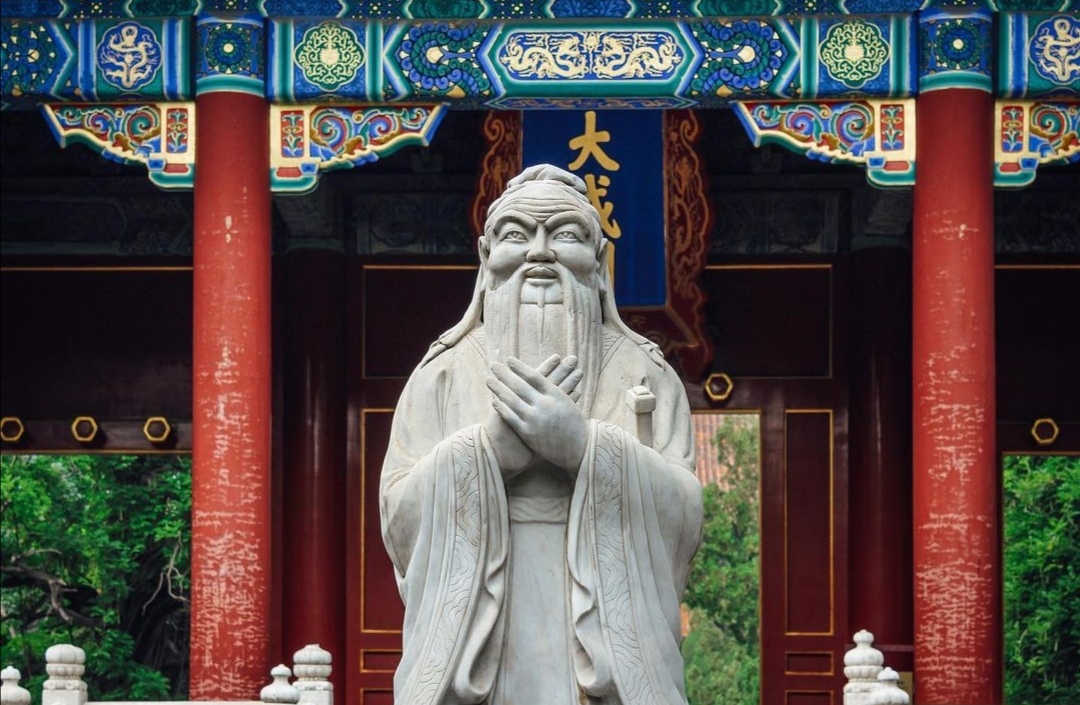
The Temple of Confucius in Beijing is the second largest in China, first one being The Temple of Confucius in Qufu, his birthplace. Dating from the time of the Mongol rulers of China, the temple has seen all three of the great dynasties rise and fall. It was founded in 1302 during the reign of Temür Khan, second emperor of the Yuan Dynasty (1271 – 1368 CE) and grandson of Kublai Khan. The main constructions to be visited are: Xianshi Gate (Gate of the First Teacher), Da Cheng Gate (Gate of Great Accomplishment) preceded by two ramps and a set of dragon steps, with the central staircase divided in the center by an elaborate carving of hornless dragon, Da Cheng Hall (Hall of Great Accomplishment), where the memorial ceremony for the sage was often held, and Chongshengci (Worship Hall).
Occupying the center of the Da Cheng Hall, the main hall of the temple, is the shrine to Confucius himself. Adorned with rich golden drapes, a simple spirit tablet represents the great teacher. Before him, there are the ceremonial offerings and representations of a sacrificial ram and pig. The Twelve Philosophers, Confucius’ disciples, have shrines on the left and right of the main hall, six on each side, with the same animal sacrifice statues.
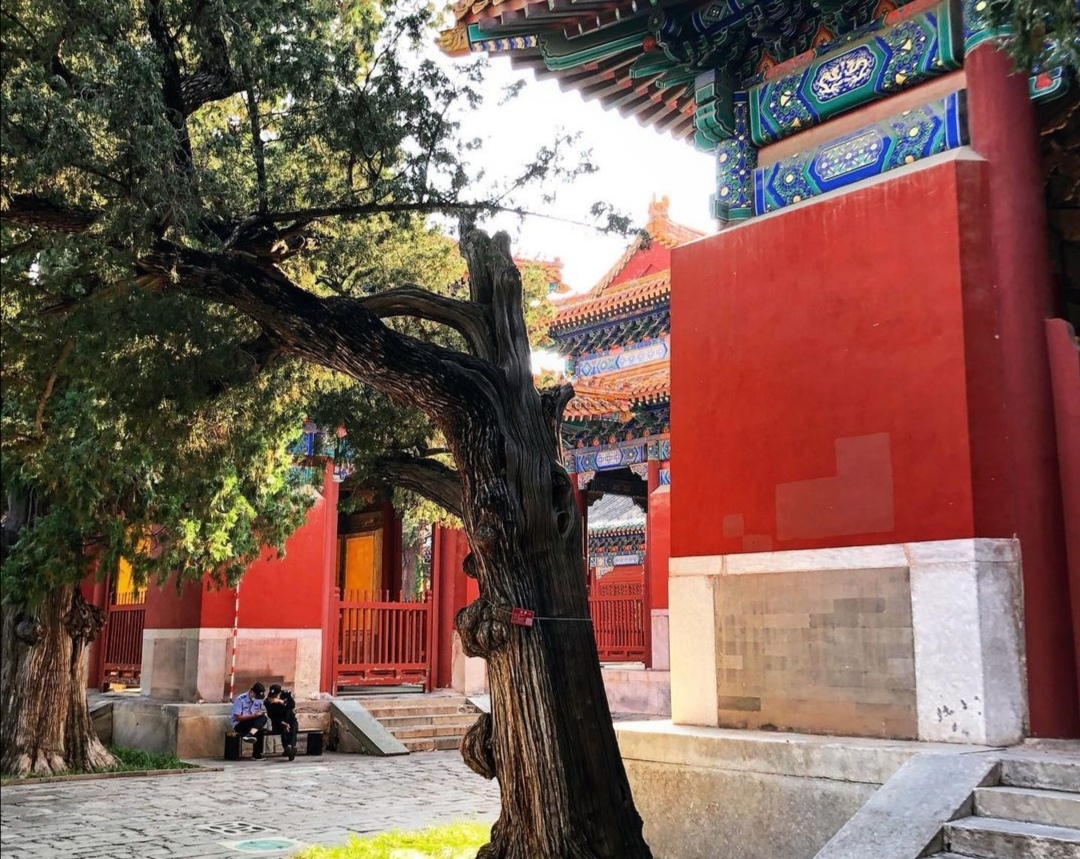
Inside the temple there are 198 stone tablets with 51,624 names of the scholars from the Yuan, Ming and Qing dynasties. Also, there is a 700-year-old cypress tree to keep an eye out for, because the tree is believed to have the power to distinguish virtuous from evil people. The legend says that a branch of this tree knocked off a hat of a despised and corrupt superior official during the Ming dynasty. As you pass by the tree named “Touch Evil Cypress” you take the test and see whether you truly are a virtuous person.
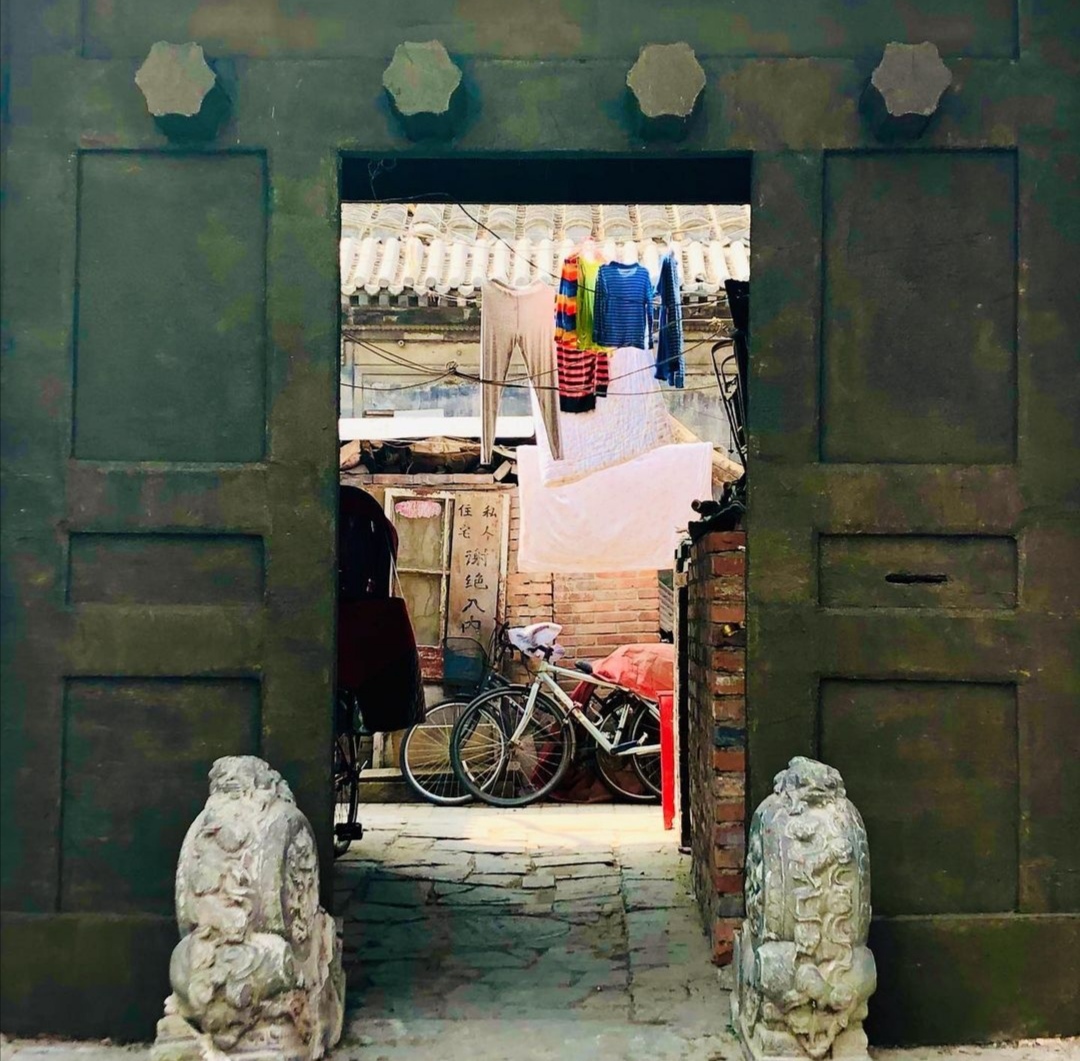
There, in the heart of Beijing and close to the temple, a different insight into Beijing culture is offered in the traditional living quarters of this city. First constructed during Kublai Khan’s reign, hutongs are comprised of narrow alleys, winding streets, and square courtyards with old dwellings. Hutongs are considered as one of the main tourist attractions associated with street food, bars and shopping, but they are much more than that. Entering the maze of lanes gives you a real feel of everyday life of the local people. It is a community-based lifestyle that has lasted for centuries, with neighbors spending time together, talking, and often playing mah-jongg (a tile-based game played by four people).
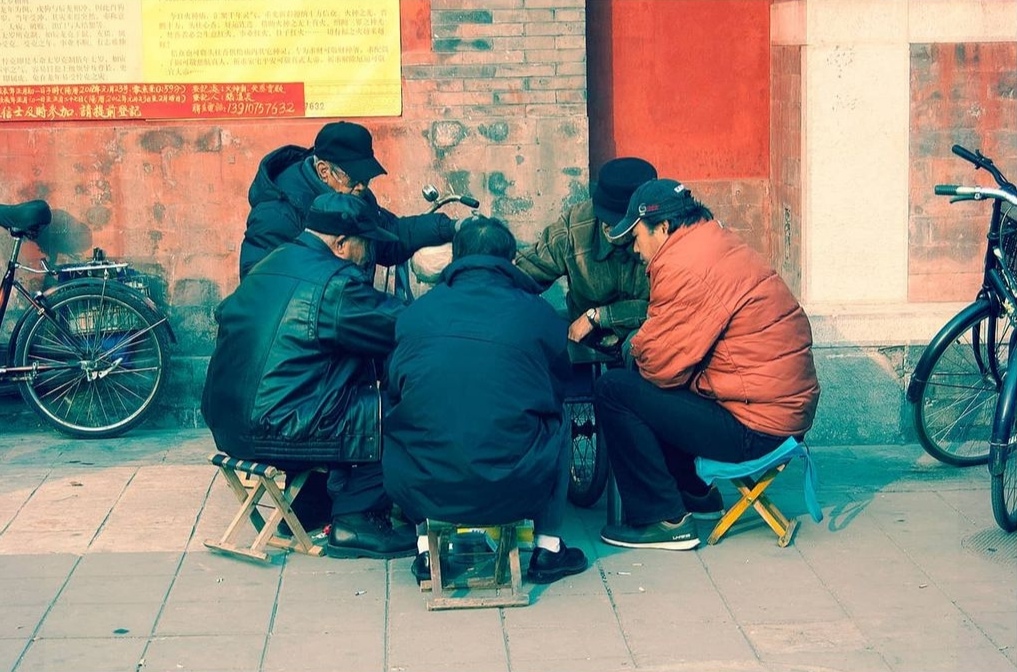
As I was told by my local guide, economic development and political decisions to transform Beijing into a modern city have led to the number of hutongs decrease rapidly in just a few decades. Old buildings are replaced with modern-looking residential complexes and restaurants, which being in the center where the land is worth the most, are accessible only to those with deep pocket, while forcing the families whose houses got destroyed look for a new home far out of the city. However, the recent years and dramatic fall in number of hutongs got more and more people united in their effort to protect what they consider to be one of the symbols of Beijing. The future of hutongs is uncertain, so if you visit Beijing, make sure you pay a visit to this historical site. You’ll enjoy in the atmosphere, as well as some exotic aromas and flavors.
My exploration of ancient China took me to the next city on my route, the city of Pingyao in central Shanxi Province. From Beijing you can reach Pingyao either by high-speed bullet train in about 4-5 hours, or by normal-speed overnight train in 9-10 hours. Traveling by train in China leaves you always with lots of options in terms of trains to book and departure times. It’s up to you to choose how fast you want to arrive at your destination, as well as the level of comfort you wish to have. Regarding the high-speed trains, on G and D trains, you can book Business-class seat, First-class seat or Second-class seat. On an overnight train, only two options exist, a soft sleeper with four berths in a private compartment and a hard sleeper with six berths in an open plan compartment. However, for a nine-hour journey, I’d say you’re better off with a soft sleeper; on top of that, if you book a whole compartment, privacy is guaranteed.
One more thing to have in mind when booking a train ticket are train stations. Train stations operating high-speed trains and overnight trains are usually at different locations, so their distance from the city center varies. Therefore, one more reason why I chose an overnight train on this route is that Beijing Railway Station and Pingyao Railway Station are closer to the center, latter one even being within walking distance to Pingyao Ancient City, whereas Beijing West Railway Station and Pingyaogucheng Railway Station (both operating high-speed trains) lie farther away from the center.
Having a whole compartment to myself was definitely a good choice because once I locked the door on the inside, I wasn’t bothered by people getting on the train throughout the night. A compartment was decent, with bed sheets and pillows provided, and with LCD TV for each berth. Some trains offer soap and towels, but on this one, maybe because it was an old sleeper, no toiletries were included. So, make sure you have your own when going to the washroom and toilets. In the carriage with soft sleeper compartments both western-style and squat-style toilets can be found. Also, each carriage is equipped with a hot water dispenser because the opinion of Chinese people on facilities or organization is based on whether or not hot water is accessible at all times. If we take the train for example, I would normally judge it by the level of comfort of berths, cleanliness of toilets, selection of food provided, but to the Chinese, apparently what comes first is hot water. So, by the Chinese standards, this train passed the test. Both times I went to pour some hot water into the thermos, I found that there was plenty of hot water to serve everyone traveling in the carriage.
I was curious about China’s obsession with hot water, so later on during my trip I discovered that in the ancient times, hot water helped the poor people stay warm and dry. Cold water and iced drinks were reserved for the dynasty members and officials of the high rank. As traditional Chinese medicine was getting accepted across society, the Chinese started to believe in the beneficial health effects of hot water. After a sever outbreak of cholera many people in the northern part of the country died, while the south remained untouched. The explanation was found in the southerners drinking more hot water than the people in the north. By the time the epidemic was explained by a study showing that it got spread northward by boats going between Shanghai and Beijing, people had already started believing in the power of hot water. Consumption of hot water was even promoted by the government in different campaigns in the 50s, which led to the question of hot water reach the status of national policy.
I arrived early in the morning and it took me only 15 minutes to reach the old town area in Pingyao Ancient City. Built over 1000 years ago, this old walled UNESCO listed town hasn’t changed much since the Ming and Qing dynasties. Many buildings remain from the period, which is why the city is considered to be one of the oldest and best-preserved cities in China. You can expect to see colorful buildings, narrow alleys, towering city walls, and lively merchant shops, as well as historical landmarks worth paying a visit. Unlike other cities in China that have become urban and modern looking, here I really got transported back to the China I always wanted to discover and in a certain way expected to find. In the entire Pingyao Ancient City, separated by defense walls that were built 2700 years ago, you feel as if time had stopped long time ago. The walls are open to walking, and the view of the city from the walls is not to be missed, especially if you set the time of your visit around sunset.
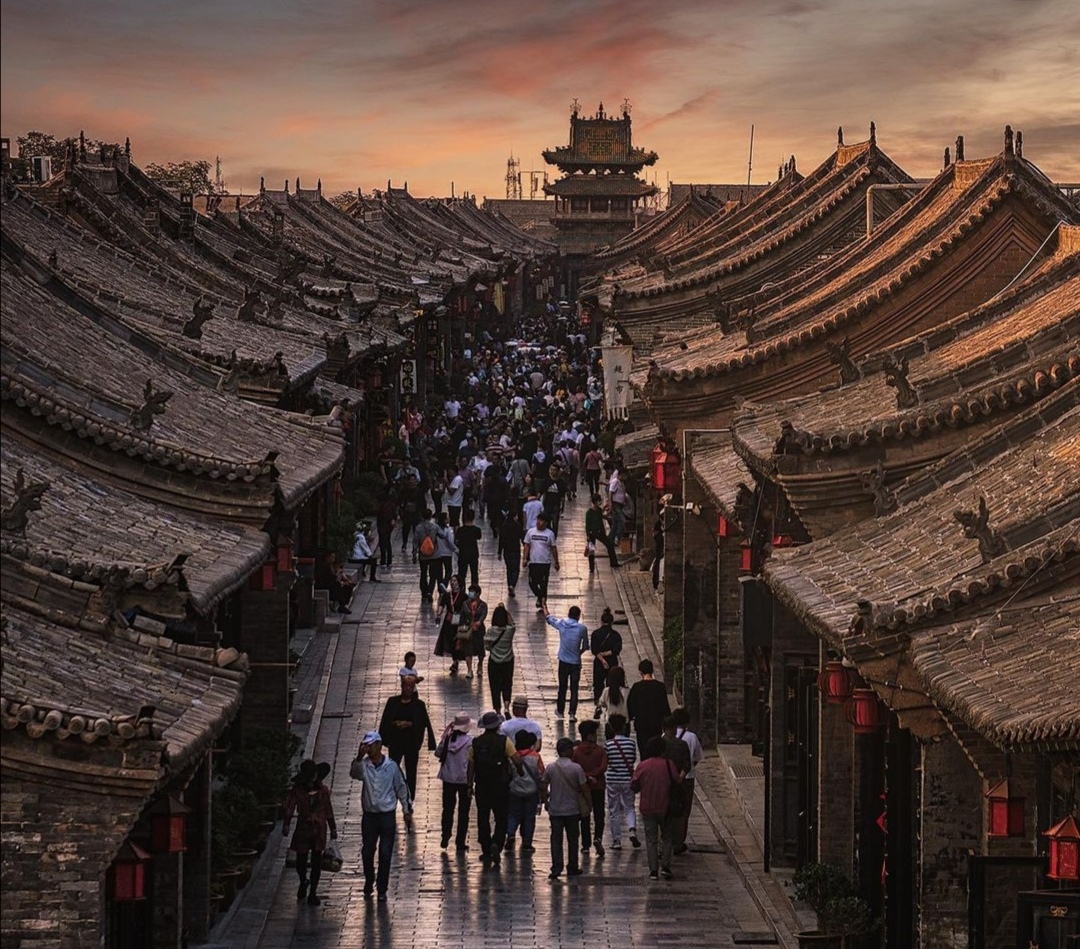
Since Pingyao was a banking capital in the past, one of the places on my to-see list was the Rishengchang Bank, also known as the first bank of China. As an important institution that led to the economic and financial growth of China, this was the first bank in China that started to give out loans and deposit savings for local business owners based on honesty and promise. I can’t imagine getting a loan based on a promise today, but what you can get at the Rishengchang Bank House Museum is a Chinese check issued for you as a souvenir.
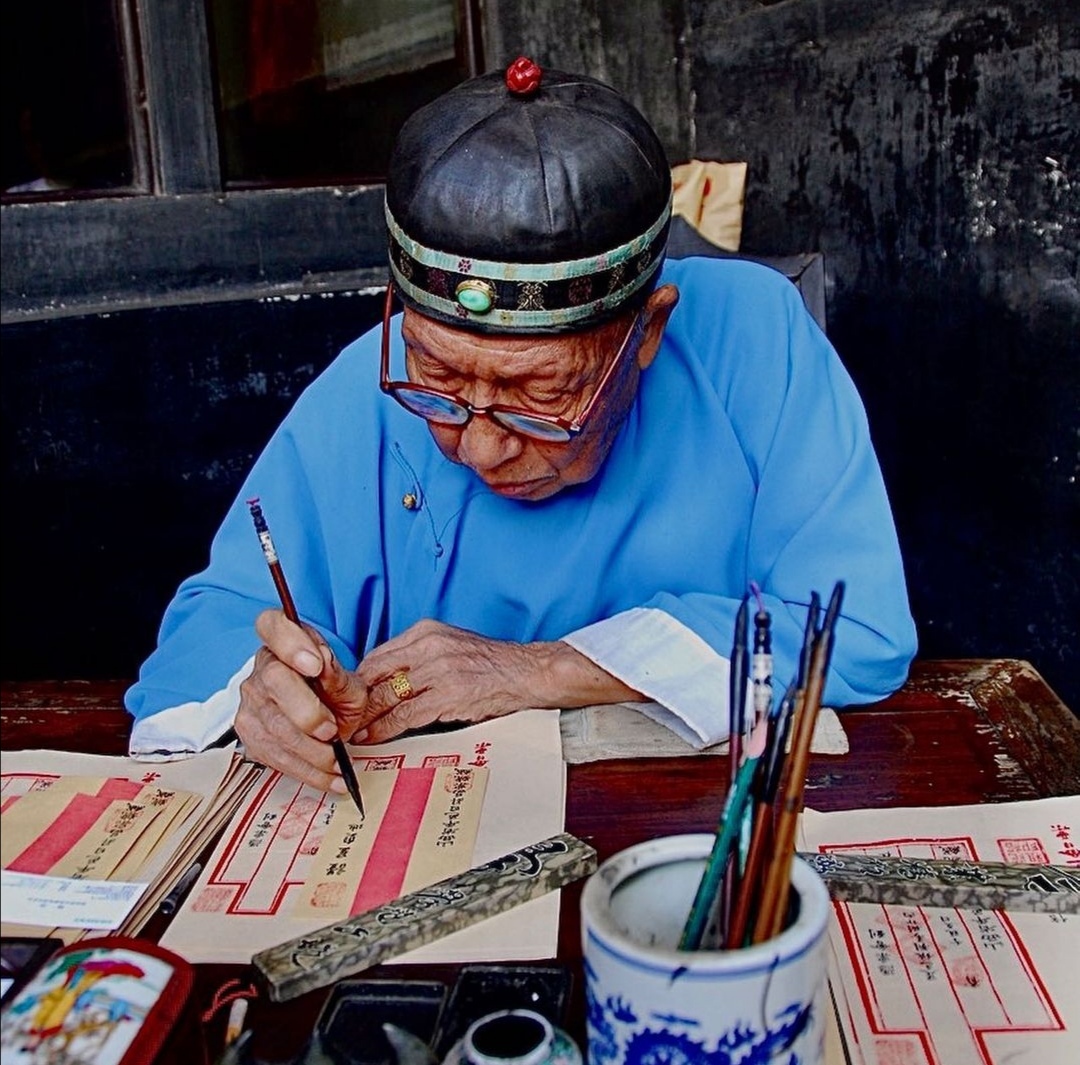
I found the real beauty of visiting Pingyao town in just wandering the maze of wonderful ancient streets and getting lost in Ming and Qing Street, the busiest one that used to be the commercial center of Pingyao ancient city. You’ll find lots of local handicraft stores and restaurants offering unique cuisines and flavors, which I couldn’t resist to try. I was surprised to find out that one of the special ingredients used in Pingyao is vinegar. I got used to eating noodle-based food in different forms, yet having noodles served with vinegar as a base was a new moment for my palate to discover. It’s the infusion of flavors and the complex aroma of the aged vinegar that I never would’ve expected to taste so good in any of the meals served. I tried the Pingyao beef, their top-rated dish, as well as some local snacks, that were all really delicious.
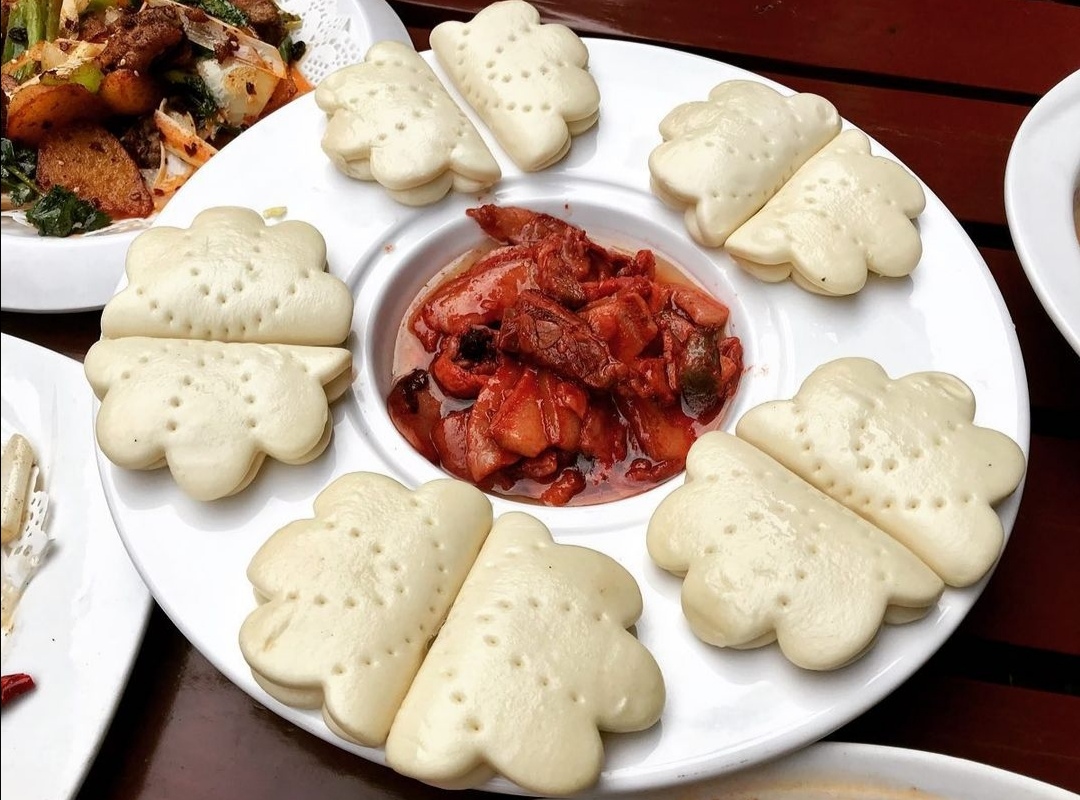
After a really great day, I needed to get an early night because the next morning I was going on a day trip to the Mianshan (Mian) Mountain, located about an hour and a half outside of the Pingyao Ancient City. This scenic mountain area is filled with spots that will take your breath away. The temples are built into the side of the mountain and the views are just stunning. It’s interesting that with a history dating back some 2,500 years, this 2560 meters high mountain, also called Cotton Mountain, was made accessible to the public only in 2000.
You will probably find it impossible to visit everything in one day, but if you start early, one day will be enough to explore some parts of this beautiful mountain, its nature, enjoy the scenery and some of the temples. In Qixian Valley, you can hike up through a winding gorge, with chains and footings set into the side of the mountain enabling you to climb. You can explore and walk in the nature, or you can try to visit as many temples as possible. You will find temples built into the side of the Minashan Mountan, on cliffs or even inside a cave.
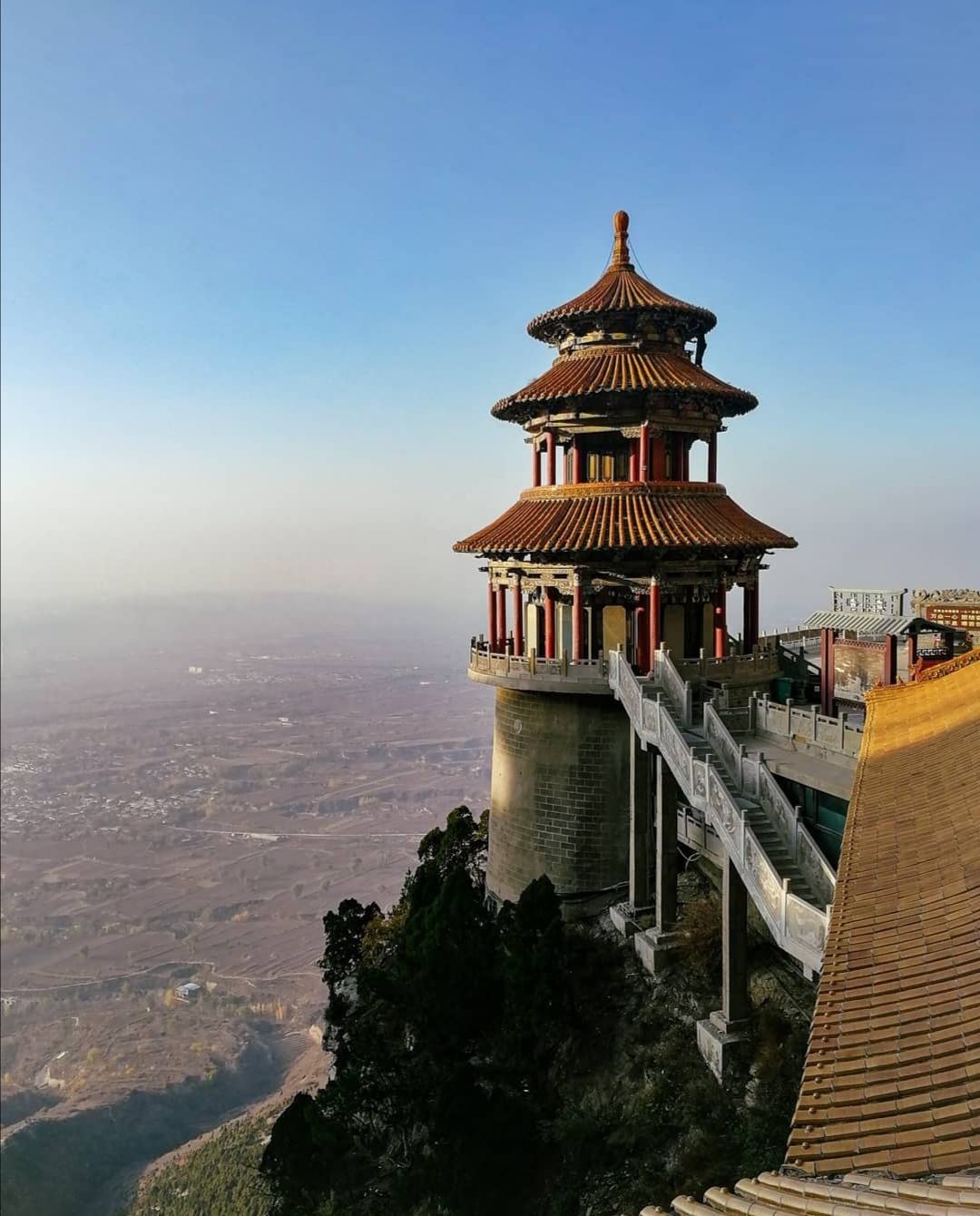
I visited the Daluo Temple, the largest Taoist temple in China that has around 13 different levels making it very tall and grand. In Taoism, the heaven contains 36 levels, the highest level being called Daluo. The Daluo Temple holds over 300 statues and artifacts including a library that is home to ancient Taoist books.
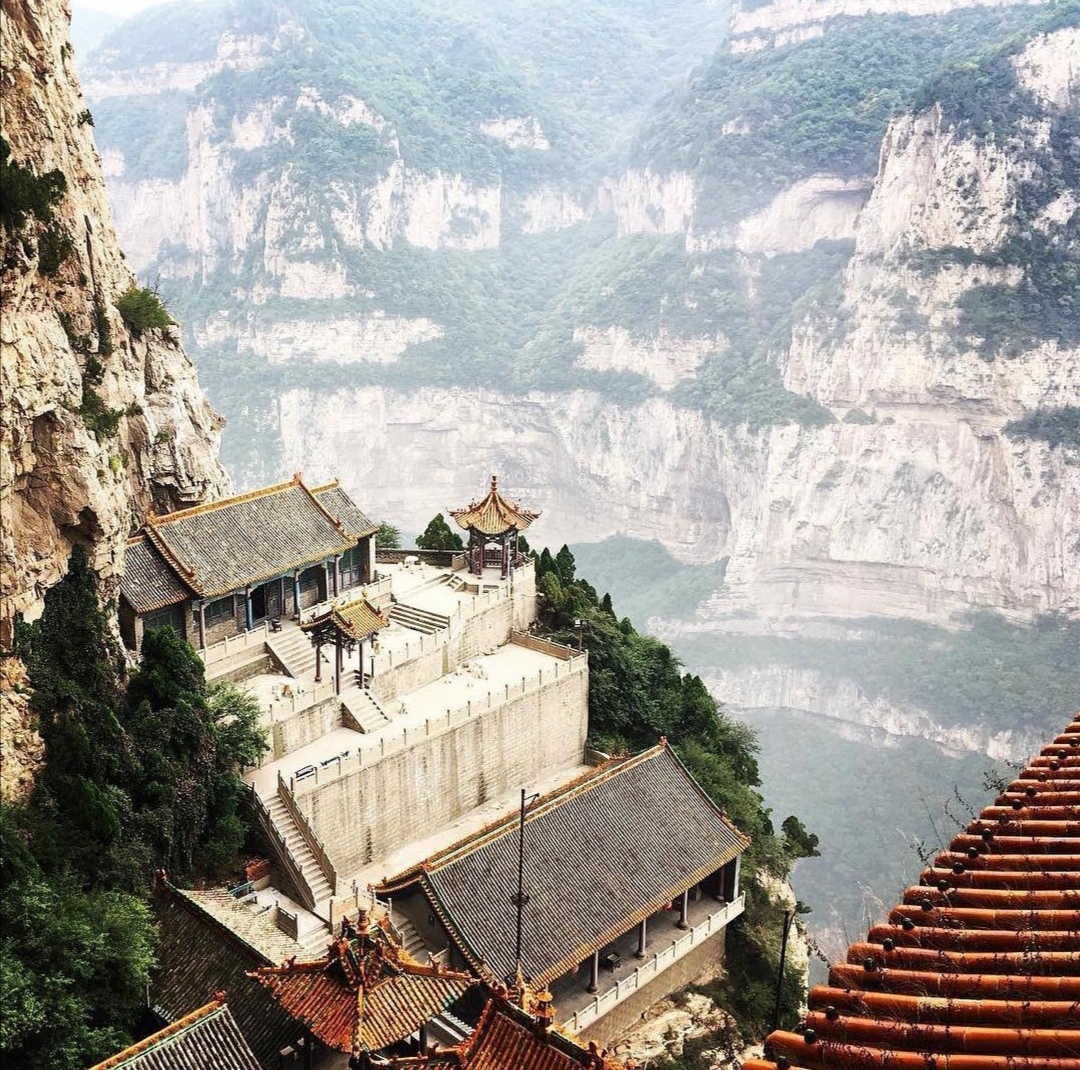
Another interesting temple was the one built inside a giant cave - The Yunfeng Temple. This cave in the Taoist religion represents a woman’s womb, so this is a temple where people can go to pray for fertility and children. It’s possible to go into this cave and explore different temples found there. Except for people praying, you’ll also see young monks here in their traditional clothing.
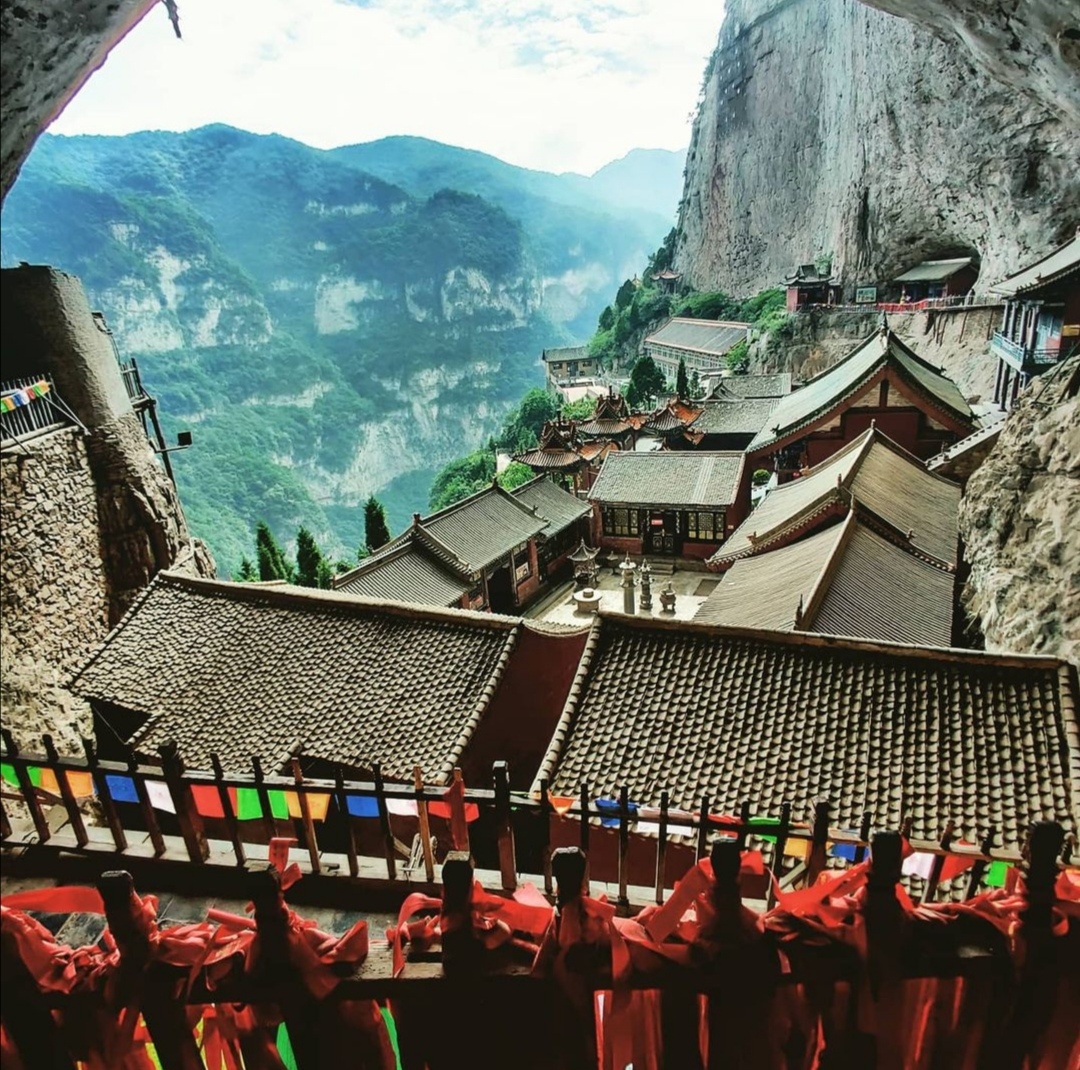
Before going back to Pingyao, after a long day of walking and exploring, you can grab something to eat at the quite modern-looking skyscraper hotel, where you can also stay for the night, if you decide to spend more time on the mountain. I definitely wish I could have, but my itinerary had Xi’an pinned as my next location to visit the following day.
An overnight train from Pingyao to Xi’an was leaving around 00:30, and after a day on the mountain, I was really looking forward to getting some rest. Compared to around 10 high-speed trains leaving for Xi’an, there is only one sleeper train that leaves Pingyao every night. Most people take the bullet train, which means that passengers on an overnight train do appreciate a good night’s sleep, especially those who decide to travel in a soft sleeper car, given that there’s usually only one. Also, compared to high-speed trains, overnight trains look a bit outdated. However, as always, I find a lot of charm in my overnight travels. It’s my time to wind down, jot down some notes, gather impressions about different places visited, or discoveries made.
My compartment was far from luxurious and I missed having a private bathroom. But, knowing that in every city I’d normally head to the hotel first, I wasn’t too bothered. Everything else you need will be provided. I noticed that on Chinese trains soft sleepers had these really soft cushioned mattresses, with lots of smaller cushions for back, in order not to lean against the hard wall. With curtains on the window and plastic flowers on the small table, you get sort of a home-like feel.
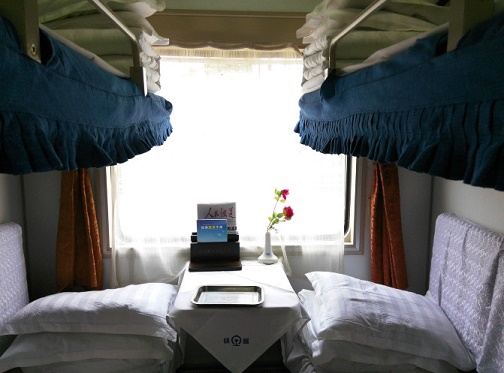
In the soft sleeper car, there are squat and sitting toilets, you can find double wash basins on one end and if you need some hot water, the electric water boiler is on the other end. Located in the central part of the train, the soft sleeper car is always close to the restaurant where you can have breakfast in the morning, or dinner, depending on the time of your travel. Selection of food prepared is limited, so you might want to bring some of your own food on board. If you want a late-night snack, you can always get it from a food trolley. Your luggage can be placed in an overhead storage bin or underneath the lower soft sleeper berths. All in all, with bedding sets, basic facilities needed for a comfortable travel, and even decorative accessories, it was a tranquil and pleasant ride.
It was nice to come back to Xi’an, and since I visited on my Silk Route journey all those main points of interest not to be missed in this city, this time I could do things at a slower pace and deepen my understanding of Chinese culture a bit further. I decided to take a traditional Chinese calligraphy class at the Tangbo Art Museum because I always appreciated Chinese calligraphy, despite the fact that I’ve never been able to read it. In parks in China I’d see older people writing characters on the sidewalk with a huge brush dipped in a bucket of water, wondering what the finished piece is saying. Still, more important than understanding was the energy felt at the moment of writing, changes of speed and force in the handling of the brush. This creates a rhythm that observers follow, almost like the moves of a dance.
The art in the Tangbo museum is representative of centuries of Chinese history, focusing on the period when Xi'an was the imperial capital. You are introduced to the history and evolution of art, including the vivid posters made by local artists during the cultural revolution. For me, the most interesting part was the calligraphy lesson and learning more about this ancient dance on paper.
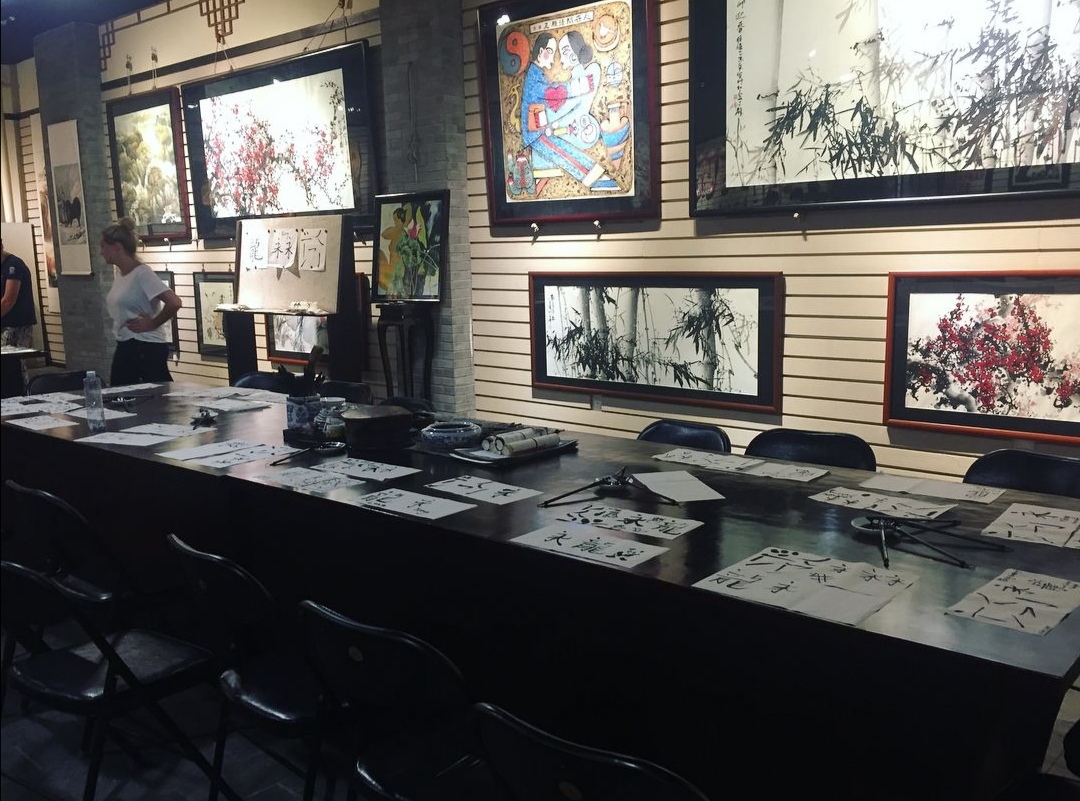
To be able to compose poetry and write calligraphy was an ideal most learning Chinese strived to achieve. Brush, paper, ink and ink stone were called the four treasures of the scholar studio. Calligraphy has a long history that recognizes several styles (or scripts) that developed over time. In the oldest style, which is almost 4000 years old, characters were written with straight lines, having easily recognizable shapes. For example, the character for a tiger reminded in its shape of this animal. Several hundred years later, the characters have evolved into a completely abstract shape. You notice how each character fits neatly into an imaginary square, each stroke is executed carefully. When written quickly, strokes blend together and the character becomes almost illegible, but very dramatic. Many calligraphers favor this style, because of its expressive qualities. The last style to be developed originated around 2100 years ago. It is the style used in everyday writing, even for neon signs you find in bustling cities.
All these styles are still practiced today, which makes Chinese the oldest writing in continuous use. With a history spanning almost 4000 years, not every written Chinese character is a piece of art, although to us it might appear to be. It takes many years of training and copying of ancient examples to become a calligrapher. When executed by a true master, calligraphy is not only beautiful writing, but the way it is written offers a glimpse of the character and temperament of the artist. Calligraphy is a noble art in China and since the seventh century it had a role to determine most talented and suited people to enter the government circles and progress in society, which is why it has been held in high esteem for a long period of time. Even today, person’s handwriting is extremely valued because it reveals proper education, character, and personality of that person.
“I have no desire for wealth or noble rank. My only love is for those letters from the brushes of the men of antiquity.” – Mi Fu (1051-1107), a Chinese painter and one of the greatest calligraphers of the Song dynasty.
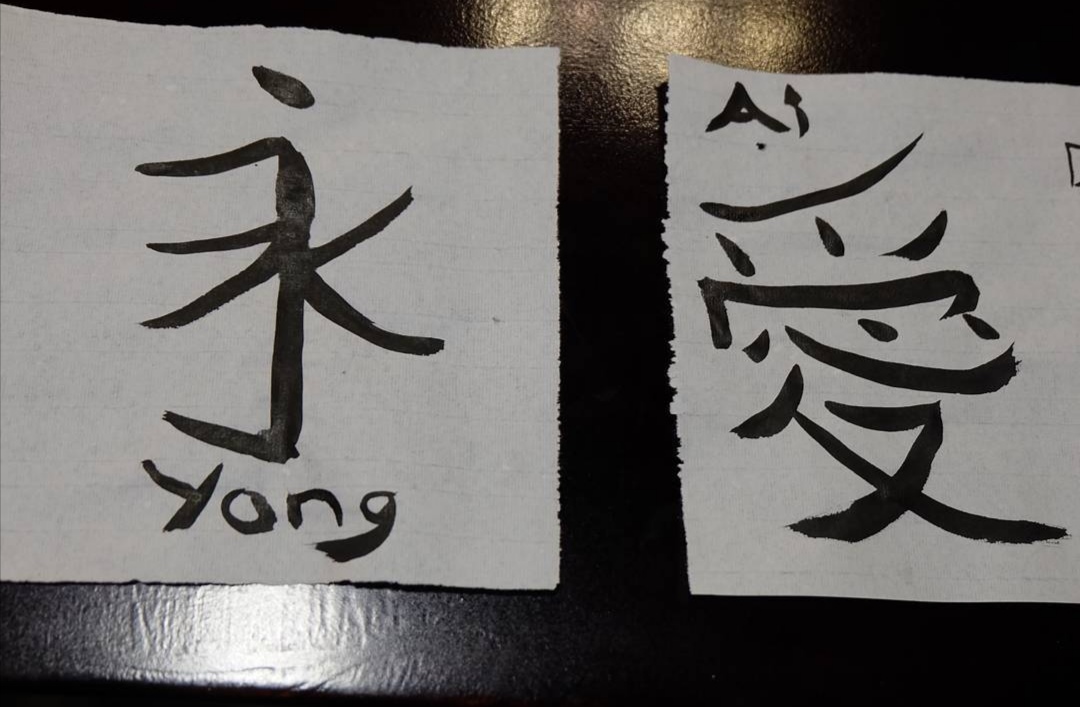
I really enjoyed the calligraphy lesson, where, step by step, we learned the basics of symbols, how to hold the brush, apply the ink, and the basic strokes. This experience really made me appreciate the beauty of calligraphy because writing Chinese characters, although it was a lot of fun, was far from easy. By the end of the lesson, I only hoped no one would judge my character or personality based on my reproduction on paper.
My afternoon and evening were reserved for visiting Huaqing Palace, a complex of Tang dynasty styled palace with imperial hot springs. Located at the foot of Lishan Mountain, this resort is famous for the classic Tang architecture, historical events that took place there, and the love story between the emperor Xuanzong of Tang dynasty and his consort Yang Guifei.
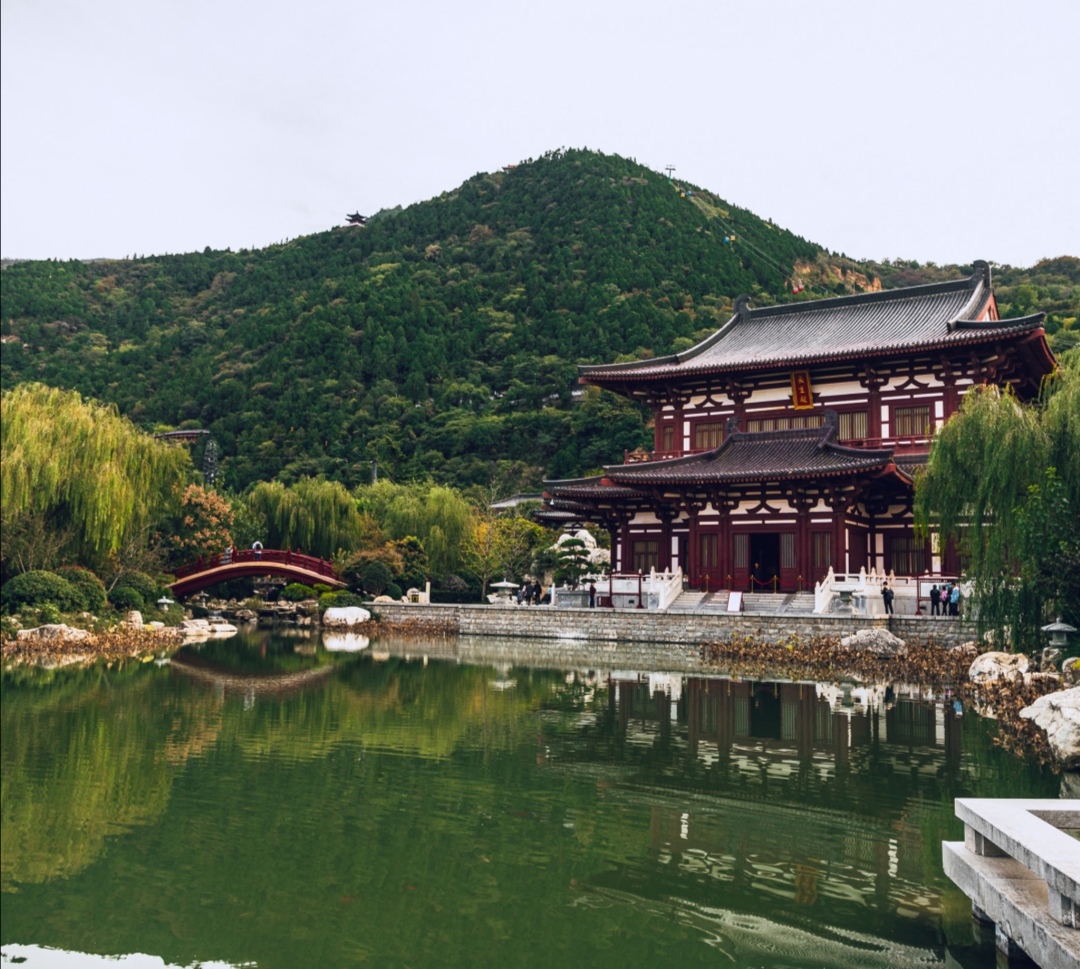
Yang Guifei was the favorite concubine of emperor Xuanzong with whom the emperor used to come to Huaqing Palace in winter. However, after 44-year long reign, a rebellion started, and the concubine and emperor were forced to flee. Unfortunately, on their way to Chengdu, Yang Guifei was forced to commit suicide by the imperial order made by the guards who thought she was the cause of the aroused misfortune. The emperor was forced to permit that, and this tragic moment was immortalized in a narrative poem “The Song of Everlasting Sorrow” by the poet Bai Juyi. In the evening, you can stay and watch the performance that brings their story to life.
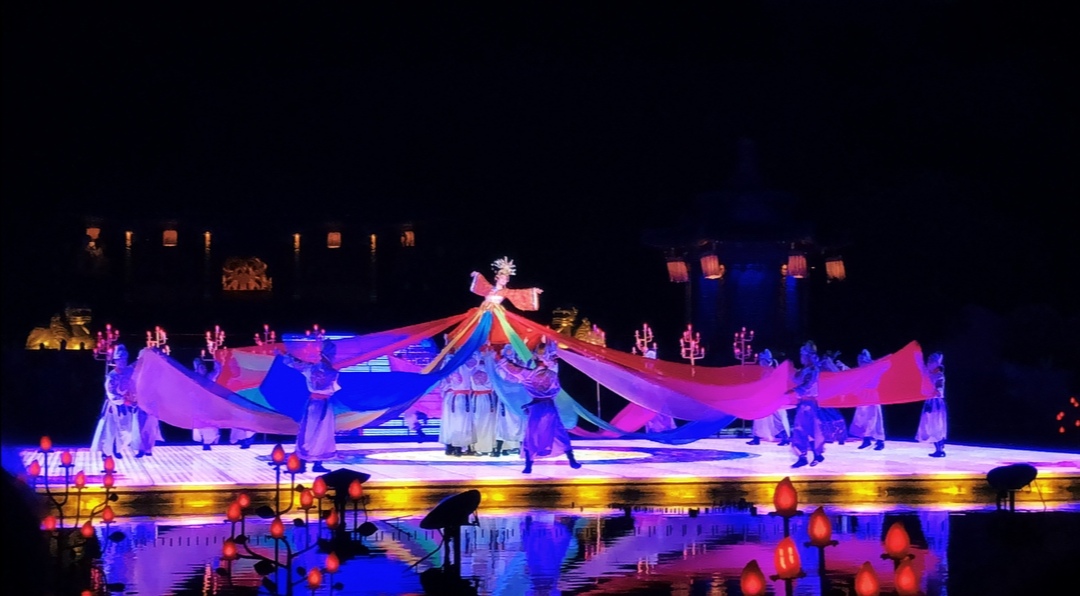
With the Lishan Mountain as the background, you get to see quite an impressive historical show performed by 300 professional actors and actresses on the stage on the Nine Dragon Lake. Using hi-tech equipment, the 700-square-meter LED screen, and the underwater stage that can move up and down, in ten scenes you get the feel of the rich and prosperous culture during Tang dynasty. Tang styled dance, classic Chinese music, poetry narration, amazing costumes, set design, and effects made this show worth coming to Huaqing Palace.
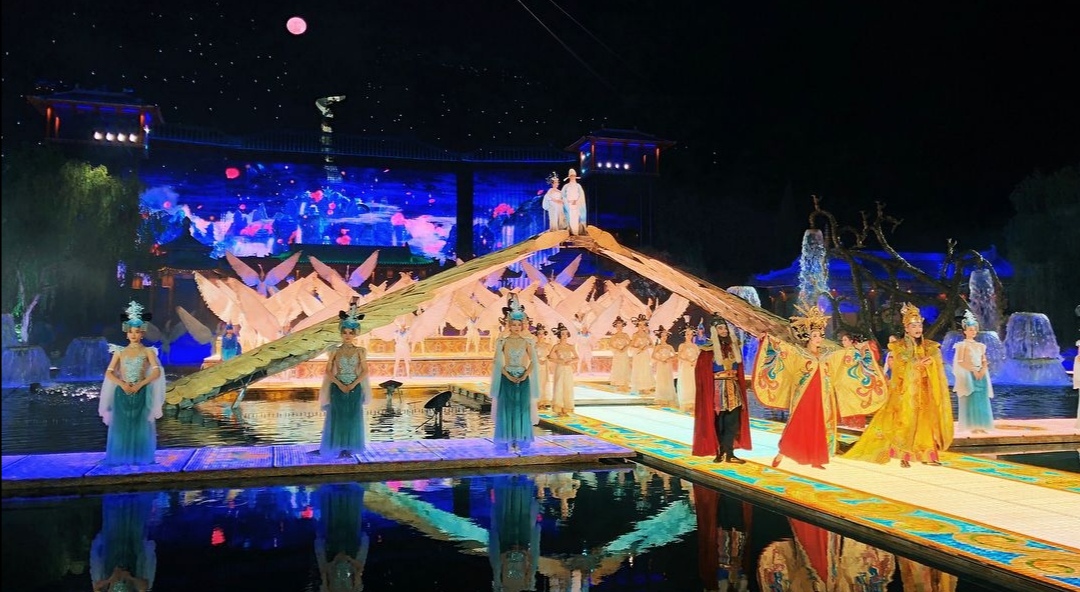
Although I stayed only one day and night in Xi’an, both experiences have been truly rewarding and one of the best ones I had on my trip. The following day it was time for me to catch the bullet train to Lanzhou. In approximately 2.5 – 3.5 hours the high-speed train covers the distance of 568km between these two cities at the speed of 250 km/h. Xi'an - Baoji Railway has been in service since 2013, but it was a new high-speed railway linking Baoji city with Lanzhou, the capital of neighboring Gansu Province, that connected China’s northwest Gansu and Qinghai provinces, as well as Xinjiang Uygur Autonomous Region, with the national high-speed rail network in 2017. This new route also marked the expansion of a high-speed rail line along the ancient Silk Road.
China’s high-speed rail progression since 2008 is nothing short of astounding. The state has allocated 550 billion dollars to its current five-year rail system extension plan (2016-2021), placing particular emphasis on high-speed lines. By 2019, modern railways have spread all over the country, reaching out to the farthest parts of China. If we take a look at the Beijing-Shanghai high-speed train, only this line now connects a quarter of China’s population.
I had three hours to enjoy the most luxurious, fully reclining business-class seat on a high-speed train from Shaanxi province to Gansu province. While enjoying the view of villages, fields, and mountains, or watching a movie on a flat screen TV, you can count on some free snacks, drinks and a meal. The VIP treatment is secured, starting from the VIP lounge at the train station that you can go to before departure to the VIP service and comfortable ride provided until you reach your destination. Not all high-speed trains offer business class, but for such a treatment it’s worth checking which one does before you book a ticket.
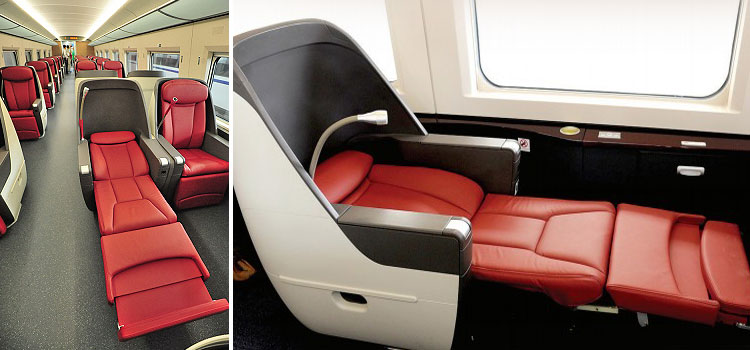
I arrived well rested in Lanzhou, so I was eager to embark on a new journey immediately after I’d checked in at the hotel. I was about to visit Bingling caves, some 70km south-east from Lanzhou. I had a private car arranged prior to my arrival to Lanzhou, so the driver had already been waiting for me in a lobby. The drive was quite scenic, with many twists and turns through terraced fields, and final descent to the reservoir and its canyon backdrop.
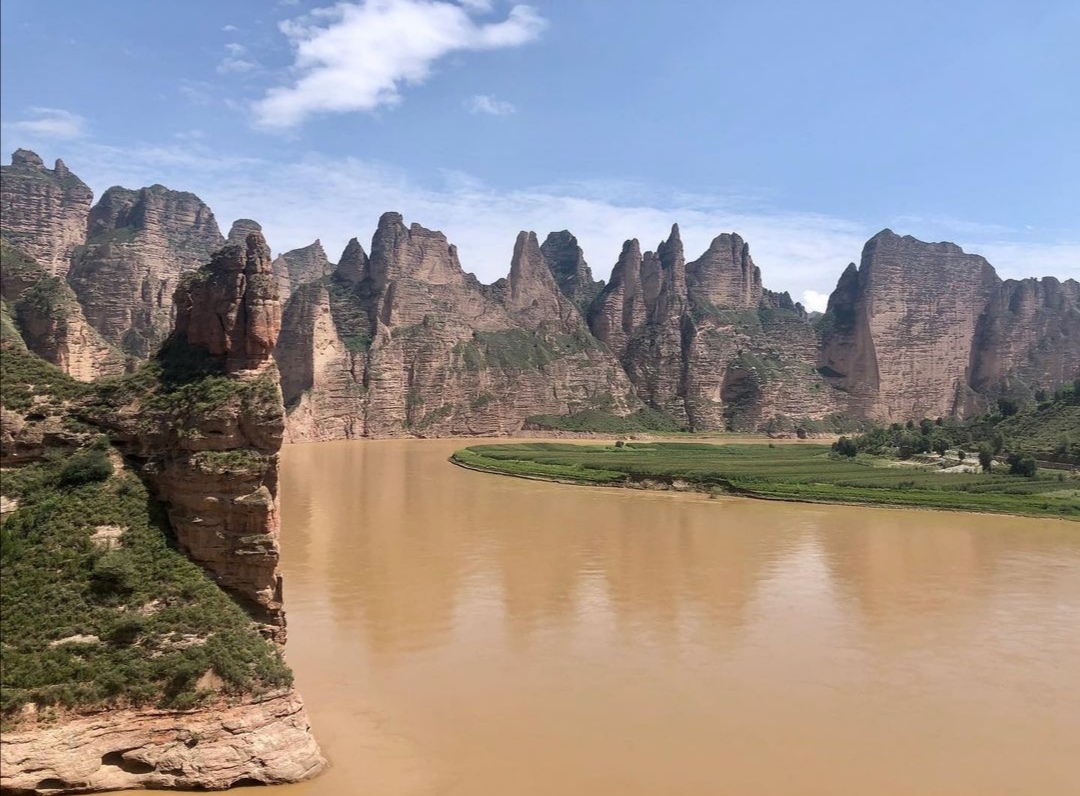
After an hour and a half to reach Liujiaxia and another 30 minutes by speedboat ride through the Liujiaxia reservoir, I reached Buddhist Bingling caves situated on the bank of the Huange He (Yellow River). Translated from the Tibetan language Bingling means "Caves of the Thousand Buddhas", although there are 183. This landmark is also called the Bingling Temple and Bingling Grottoes. The construction of the cave complex was a work in progress for more than a millennium, with each cave resembling a miniature temple filled with Buddhist symbols. They house about 700 statues made of stone, 80 statues of clay, various carvings, paintings, and frescoes. The largest statue of Great Maitreya Buddha found in the Bingling caves, and the main attraction worth the trip from Lanzhou, is 27 meters in height.
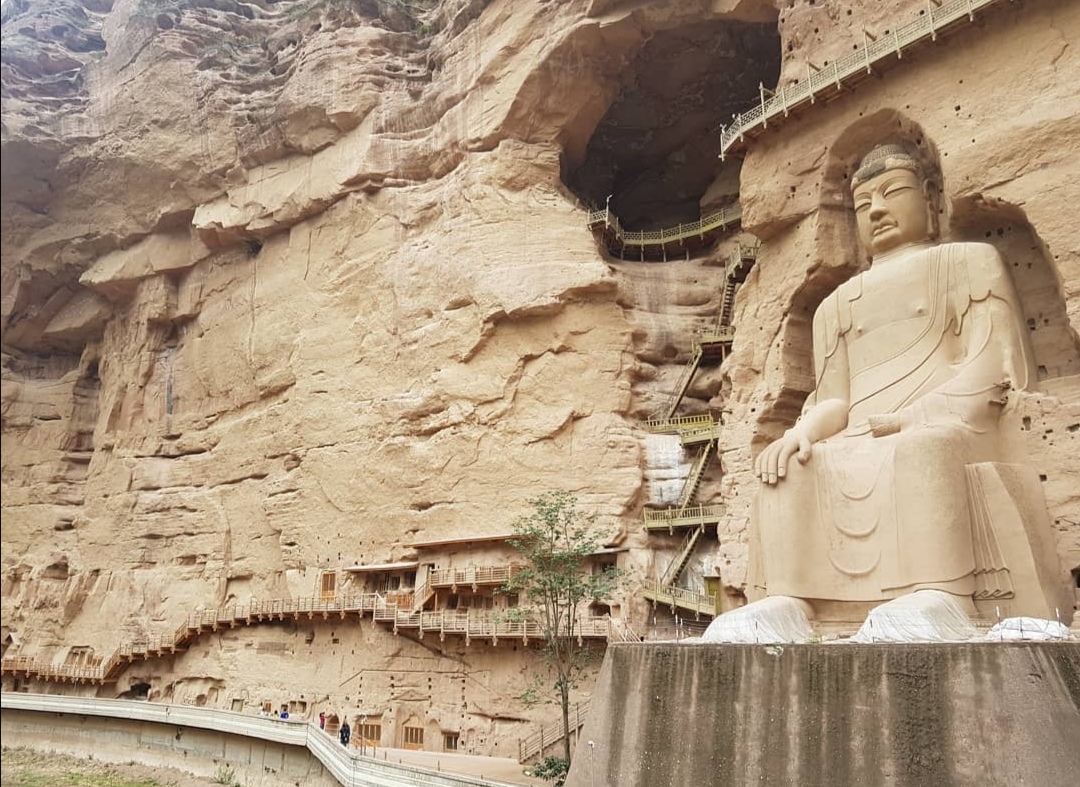
The history of this place is tied up with the history of the Silk Road. It is said that early Han Dynasty rulers (206 BC – 220 AD) wanted to initiate trade and find allies in the West, which is why emissaries were sent to western countries. Eventually, they succeeded in opening trade on the northern Silk Road routes that passed through the region of the Gansu. Among other things, one of Han emperors who lived in the first century was curious to learn more about the main religion of Central Asia. With Buddhist scriptures and Buddhist monks who came back with one of his advisers sent to Central Asia, Buddhism became popular. This led to the people near the Silk Road accept Central Asian and Indian Buddhist teachings, as well as build Buddhist temple sites.
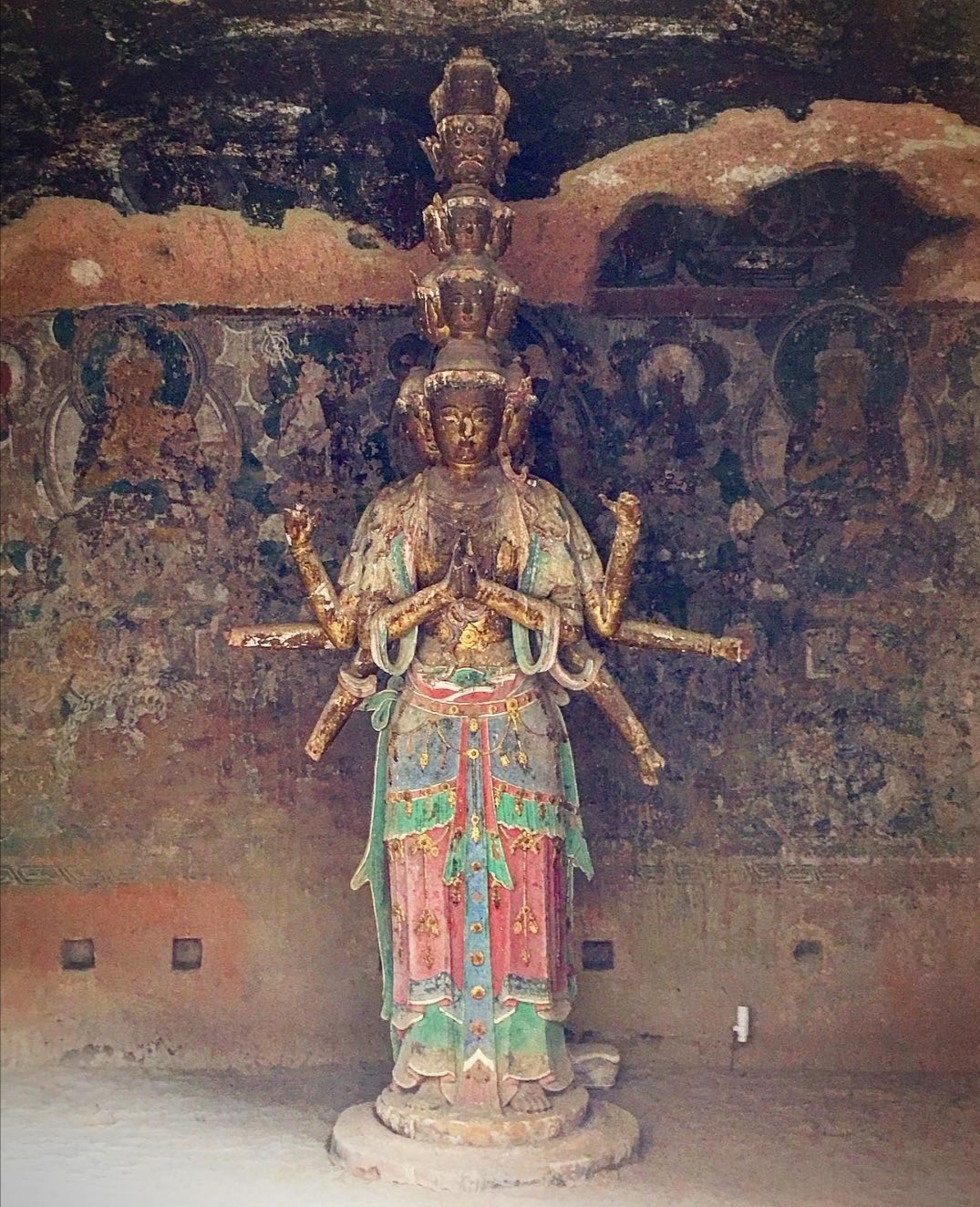
The artistic style of Bingling Temple’s religious art is known for the fusion of Han Buddhist and Tibetan Buddhist styles. There are some of the earliest Buddhist carvings showing Indian features and costumes, and numerous murals including a variety of texts and pictures impressed on that reflect the thriving of Tibetan Buddhism. Most of the Buddhas are made in seated position while there are also reclining statues, all very interesting to have a look at.
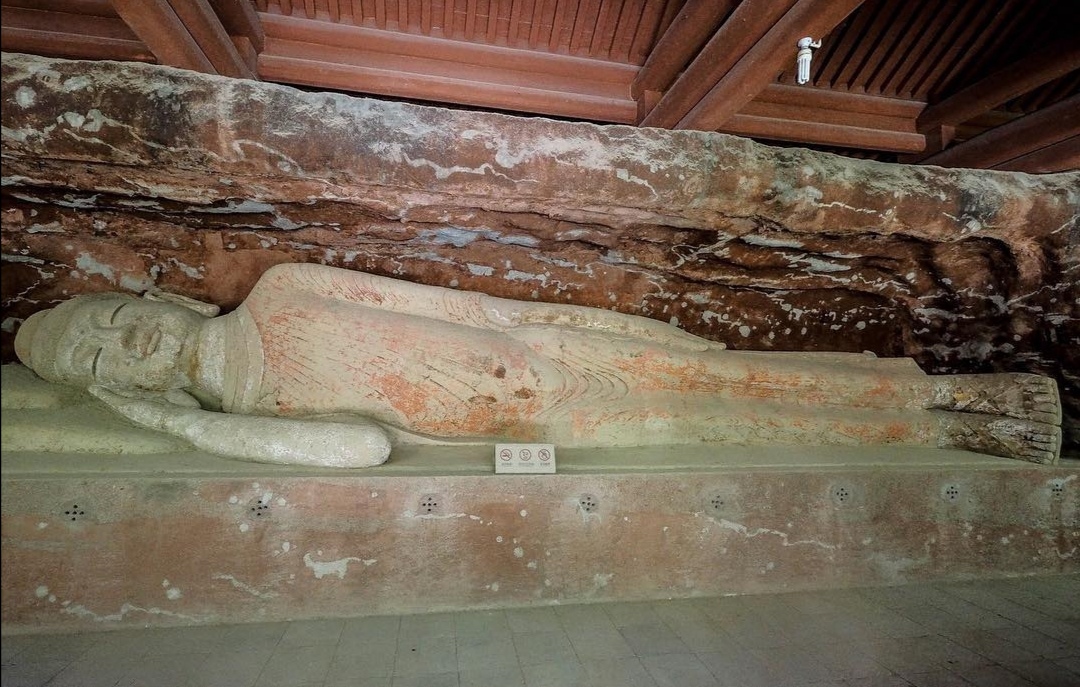
Despite its remote position and time needed to be reached, the ride to and back from the Bingling Temple was worth it. Back in Lanzhou, I was just in time to grab my late dinner at Zhengning Road Night Market. As a famous snack street in Lanzhou, it attracts many people every day to taste local specialties and lots of photographers excited to capture all that food on camera.
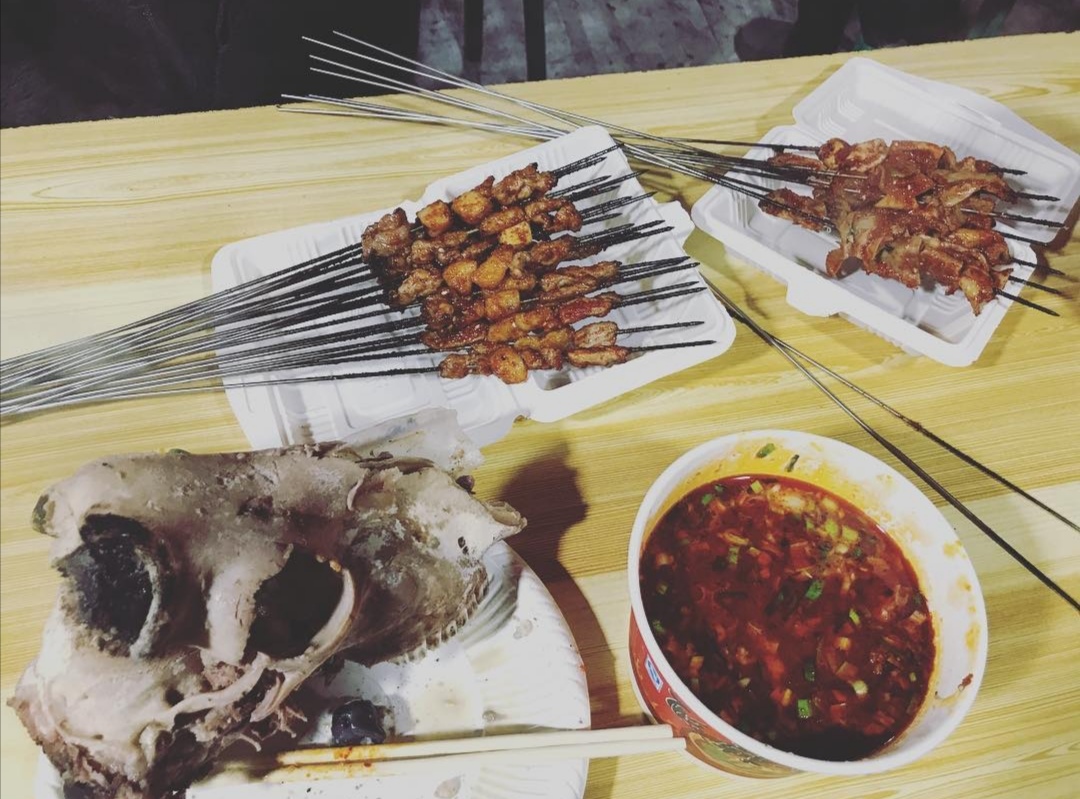
Although the market is only 250m long, endless smells and tastes can be found in a very colorful, vibrant environment. Whether you decide to grab a snack from one of the food stalls or eat in a restaurant, the chances that someone will speak English are pretty low. There’s plenty of fried, grilled, roasted, and boiled food to choose from, so if you don’t want to experiment with food, pick what looks familiar to you. Still, don’t be surprised to find out that somehow you’ve managed to order sheep head to go with your soup, which as it turned out served as an interesting prop in the picture.
The next day I had a private walking tour to the bank of the Yellow River where Yellow River Mother Sculpture, a Lanzhou’s landmark is located.
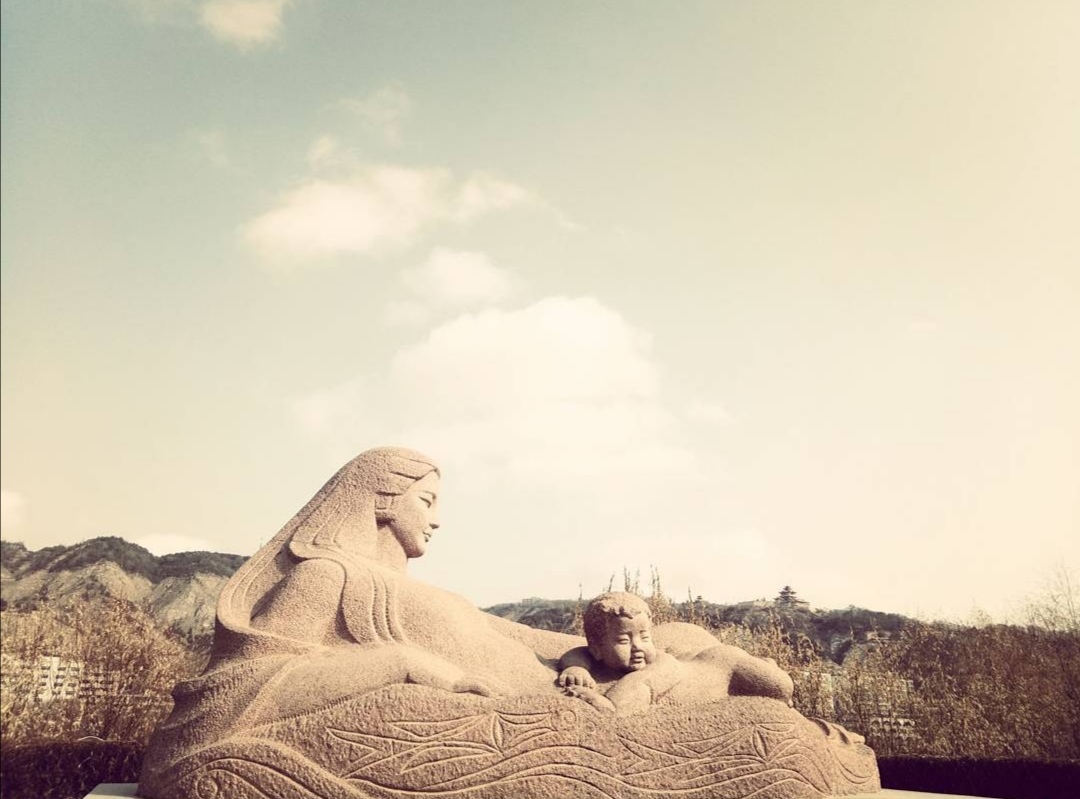
The sculpture was nice, but it didn’t really take my breath away. What I enjoyed more was hearing about why the Yellow River is considered the "cradle of Chinese civilization", and often called the "Mother River". Just as other ancient human civilizations originated in river basins, the Yellow River basin was the birthplace of northern Chinese civilizations and the most prosperous region in early Chinese history. Apart from providing fertile soil ideal for cultivation and farming, communications facilitated by waterways allowed for the civilization to develop.
The Yellow River, which springs up in the Bayan Har Mountain Range in Qinghai province, runs 5,494 km across northern nine provinces. On its way it picks up an immense load of silt that colors the water and gives the river its name, before it flows into the Bohai Sea. Its waters and the rich soil it carries bring the agricultural abundance needed to support China's enormous population.
Unfortunately, the frequent flooding and shifting of the river caused considerable inconvenience to people, and harnessing the Yellow River posed a great challenge to all Chinese emperors. Approximately 1,600 floods with twenty-six shifts along its course that swept entire villages away earned it also a less positive name "China's Sorrow”.
The river represents to this day the symbol of the Chinese nation, the spirit of its people and the Chinese civilization. The Yellow River has been an inspiration for many artists, as well as common people. Later that night on the train, I found many poems written about the river and important roles it played in history. I thought that a sentiment towards the river and what it represents for the Chinese people were best felt in these lines from an Ode to the Yellow River:
“To the Yellow River, hurray!
Cradle of Chinese civilization, the icon stay.
Five centuries of ancient culture, starts
Your birth originates down history charts.
Countless heroic tales are narrated,”
…
“And on your banks, these acts are enacted.
Our great national spirit will in future,
Grow and develop under your nurture.
Heroes and heroines of our nation:
Will take you as their role models,
Defend with great determination, a bastion.”
I was slowly drifting off to sleep in my soft sleeper compartment, in an overnight train to Chengdu Railway Station. I caught a 6.30 pm train at Lanzhou Railway Station, which gave me plenty of time to go over all the plans I’d made for Chengdu and do some reading. The boarding process went smoothly as soft sleeper ticket holders have boarding priority. Another advantage for passengers in the soft sleeper car is on arrival reminder. That means that you cannot miss your stop, as the train attendant will come to your compartment to give you back your ticket and remind you that your stop is approaching. This can be quite useful when your final destination is not the last stop on the train route.
Compared to high-speed trains on other routes, the high-speed train from Lanzhou to Chengdu takes around 7 hours. The plan for this high-speed train travel though is to take only 4 hours by the end of 2020. Anyway, spending 11-12 hours in a lockable compartment providing a quiet travel environment, with comfortable berths to spend a night in, the main light and personal reading light provided, power socket to ensure your laptop and phone don’t run out of battery, sounds much better than 7 hours spent in a seat.
I was really looking forward to visiting Chengdu, and I had many things I wanted to see in the capital city of Sichuan province. In ancient times, Chengdu was called Western Capital and known as the "Country of Heaven" for its abundant farm produces. It is one of the country's leading rice and wheat growing regions, also known for its deep connection to tea. Chengdu is said to be the birthplace of the Chinese tea culture, so being a tea lover, I was excited to find out that Chengdu had more teahouses than any other city in the world.
Chengdu is China’s seventh largest city and home of some 9.1 million people. Over the last decade the city is said to have quite changed, becoming a futuristic city with its contemporary, avant-garde architecture. This big city is very vibrant, with lots of museums, galleries, restaurants and shops to be found. When you first arrive, you notice that it is full of modern buildings and wide avenues bustling with life. As you get to know it, the city will reveal also its traditional ancient streets, well preserved old temples, and monasteries. In this city, so rich in culture, there is something to be found for everyone. You can only lack time to see it all.
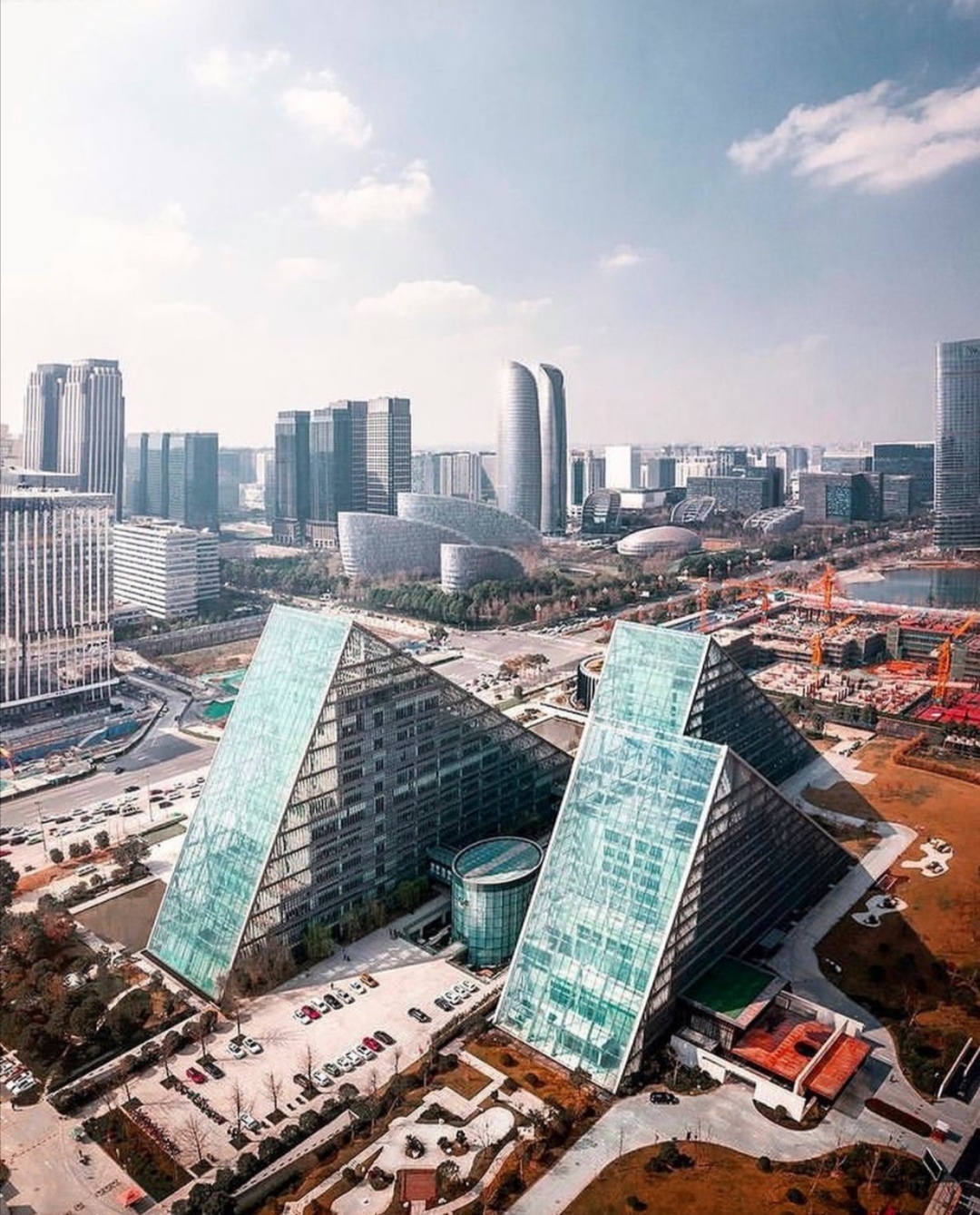
Chengdu is also home of the giant panda and at the Chengdu Research Base of Giant Panda Breeding Center you can see them in their natural environment. China is now the only country where pandas still live in the wild. The government has worked hard to prevent its national pride from becoming extinct. Extensive resources have been put into restoring the pandas’ forest habitat and reintroducing them to the wild. The pandas live safely here and are provided with conditions essential for successful procreation. Special care is taken of cubs to ensure that they survive because if the giant panda population is to be sustained, captive breeding programs are crucial, especially because birth rates in the wild are extremely low.
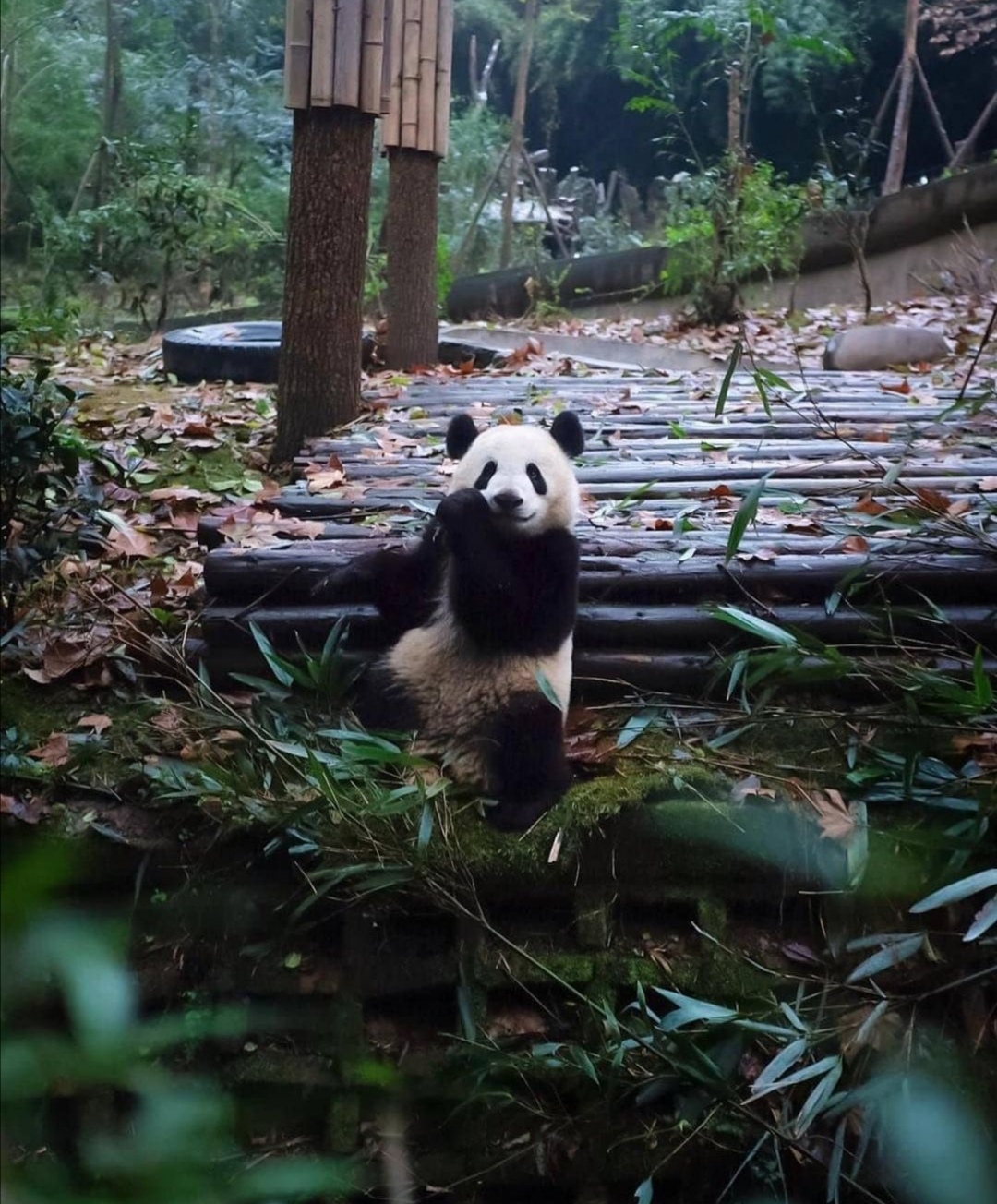
For me, a private tour of the Panda Breeding Center was more than just a visit where you take hundreds of photos of these adorable animals eating bamboo and scratching their butt cheeks. I wasn’t surprised to find out that pandas had deeper meaning for the Chinese. My attention was drawn to the panda’s coloring, a living symbol of China’s past, an allusion to the home country where Yin and Yang are balanced opposites. Black and white, light and dark, day and night, sun and moon, sky and earth, heat and cold. People working at the center believe that they must follow the laws of nature to achieve harmony and balance. Their aim is to allow the giant pandas thrive on this planet along with us because relationship between animals and humans, humans and all nature are considered to be made in heaven.
There is a saying in China: “If you choose your field of work from 360 options, do your job with interest and responsibility. If your heart isn’t in the work, then on no account should you do it.” At the Chengdu Panda Breeding Center everyone takes their job seriously. The panda is considered a national treasure, and once born, pandas are the property of the People’s Republic of China. Zoos can rent them from the state but at the cost of over million dollars a year. Pandas are guarded like the most precious jewels, and in 2016 the panda was removed from the red book. Officially, it’s no longer an endangered species, but it is still vulnerable. There are still many threats once released into the wild, one of them being poachers who hunt them for their bones, paws and pelts, and the other being deforestation.
I learned that the giant panda’s ancestors were carnivorous, but about two million years ago they gradually started eating bamboo. Scientists suppose they stopped eating meat and started eating bamboo because their gene receptors mutated, meaning meat was no longer tasty to them. Because bamboo is such a low calory food, to get the nourishment they need, pandas spend half their lives eating bamboo and the other half digesting it. As a result of all that bamboo eaten, the animal produces up to 20kg of droppings every day. But as I was told, when you stink of poo, it means that you’re doing a good job.
I was quite pleased with the tour. It was fun, informative and it definitely changed the way I looked at this animal that has been around for 8 million years. The rest of my day I spent exploring Chengdu’s historic alleys - Kuan Xiangzi (Wide Alley) and Zhai Xiangzi (Narrow Alley), designed during the Qing Dynasty (1644-1912). These two alleys, along with the more recent Jing Xiangzi (Well Alley), have been completely restored to their former glory to showcase and preserve the city's rich historic and cultural roots.
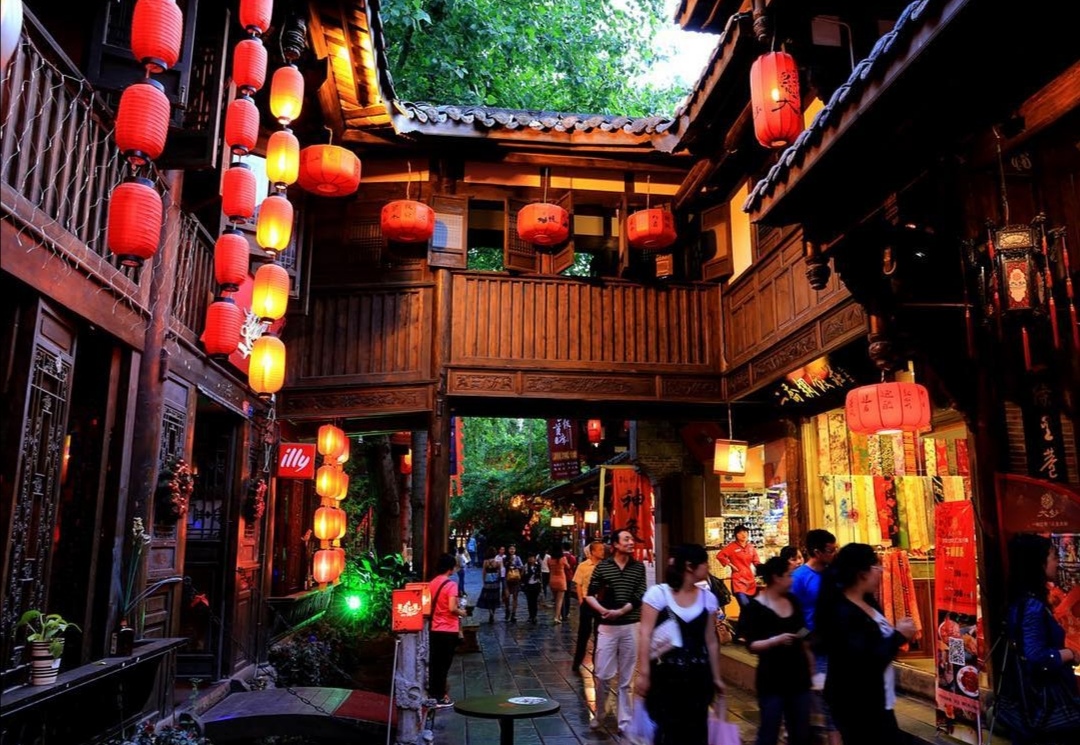
Many traditional stores, workshops, restaurants, and traditional teahouses are lining the alleys. Trying different snacks is also possible, but beware, because the food is known for its spice.
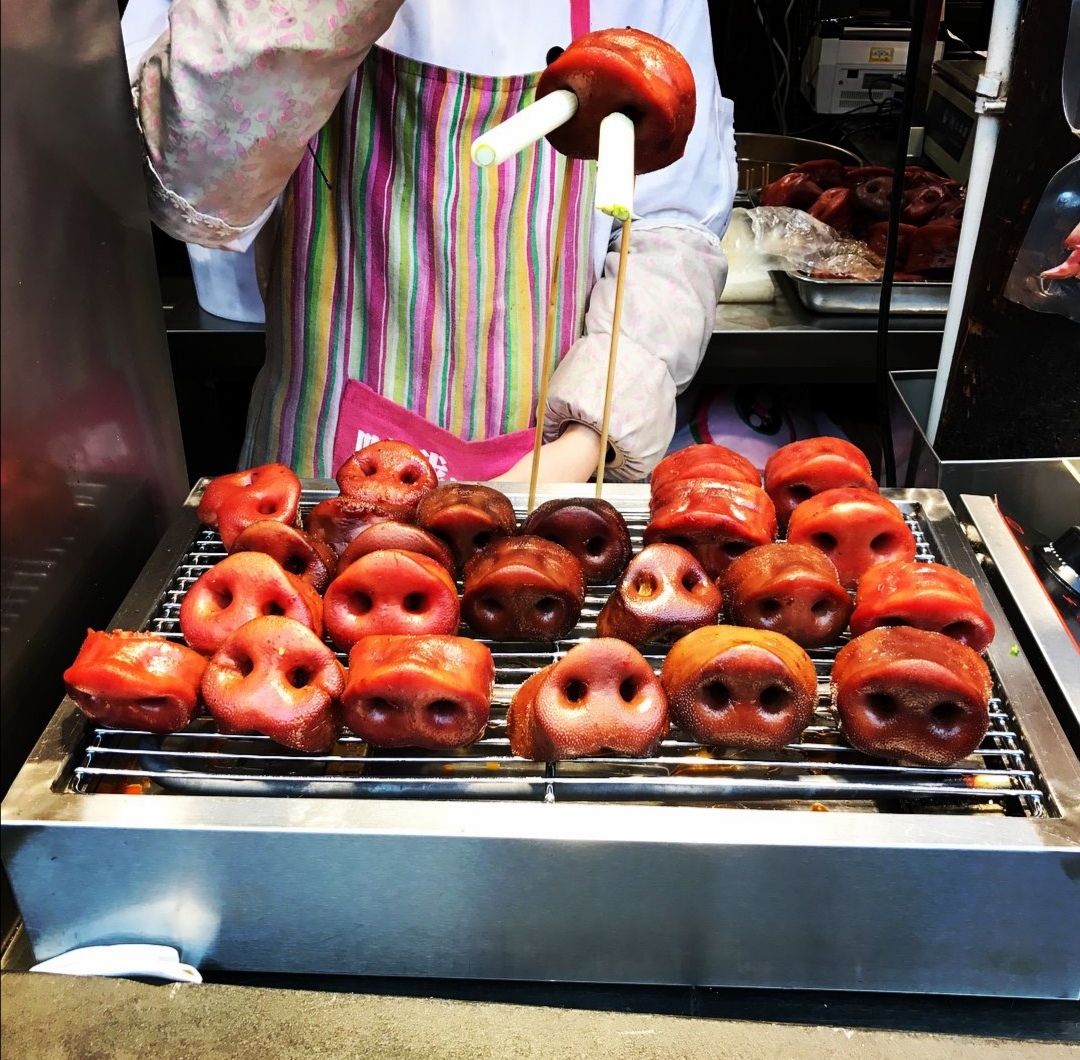
You can watch many Chinese shadow plays, puppet shows and calligraphy demonstrations. Jing street is a good spot to enjoy Sichuan opera, an art form of the Sichuan province including one of the greatest acts known as “changing faces”. It is a technique of changing face masks amazingly fast and a top secret known only to top artists who can change as much as 8 masks in the blink of an eye. Along with Chinese mask changing mysterious technique, get ready to witness some serious fire breathing too.
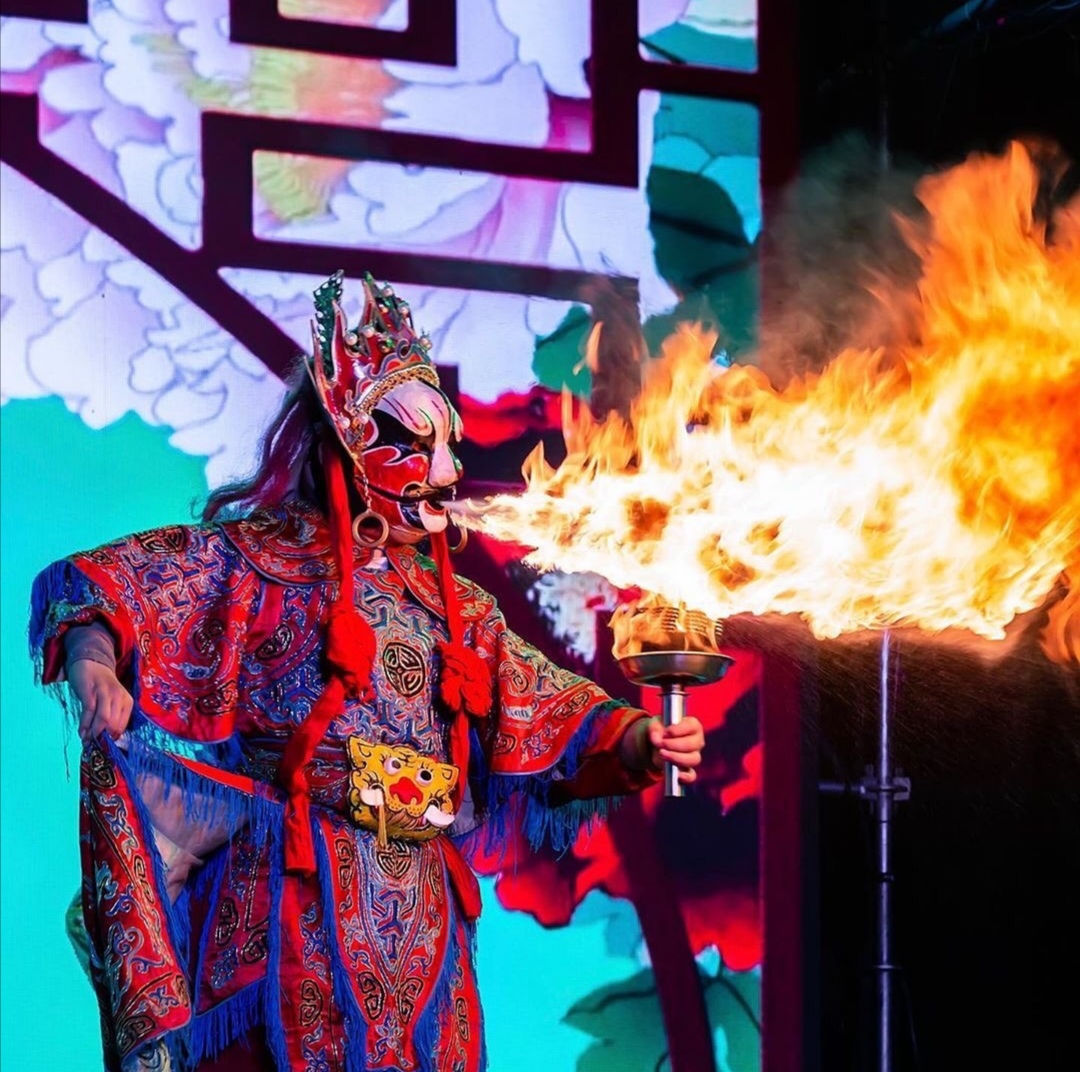
At this point I’d seen two operas, one in Beijing the first time I visited China and one in Chengdu. Both times, I couldn’t stop comparing them to the experience of watching European opera. In Europe, when you think of opera, you imagine great tenors, polyphonic choirs, and huge orchestra filled with dozens of musicians. Chinese opera is so different to European, with squeaky voices, piercing sound of instruments, and the deep symbolism hidden on the Chinese stage. Every color on actor’s face has a special meaning, every hand and leg gesture, walks and glances, each prop is a symbol familiar to Chinese audience.
During the performance, I mostly felt lost in translation while trying to understand actor’s roles, especially since the same actor can have many. In those moments my mind would wander off, thinking about actors who are seen as heirs of tradition. Their main task is to preserve Chinese culture and history. Their movement, make-up, costumes, singing, and acting are a collection of traditional methods used to present the original play based on Chinese history to the audience.
In China, love for this theatrical genre is often inherited. There are even opera kindergartens in Beijing to which parents send their children to start accumulating knowledge and skills needed for the opera as early as possible. The love for theatre is passed from generation to generation, which is believed to bring harmony to family. It’s interesting that the canons of Beijing opera date back to Confucian ideology, which determined human behavior and family. Consequently, if families are in harmony, society is stable. I realized that the more I was discovering about China, the more similarities and connections I was noticing between different elements of Chinese heritage. With every new place I visited, new lessons on balance, harmony and spirituality waited to be learned.
I left Chengdu early in the morning because I wanted to visit Leshan Giant Buddha when it was less crowded. After an hour and a half, I finally reached the giant stone Buddha that took 90 years to carve out of the side of a mountain during the Tang Dynasty.
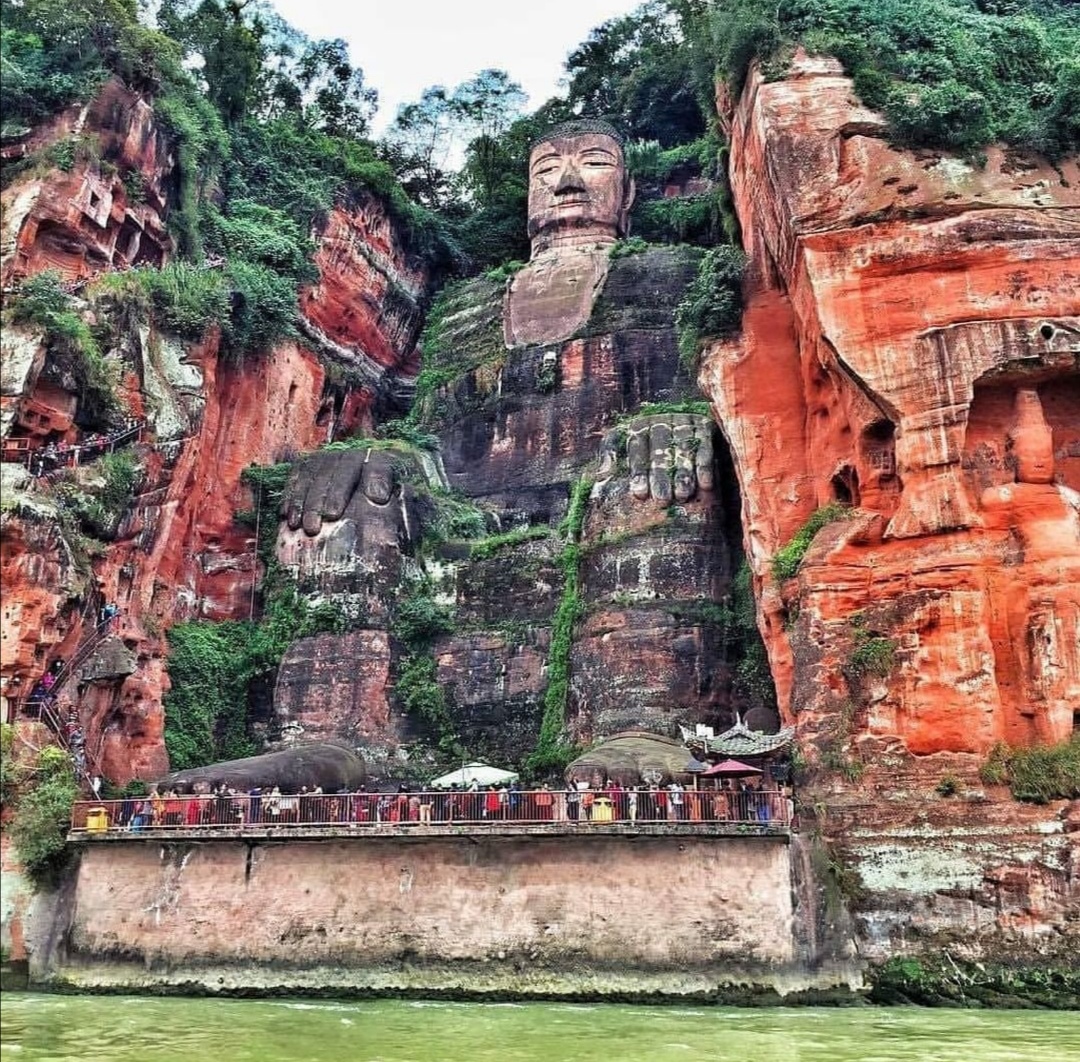
With a height of 71 meters, its head reaching to the mountain top and its feet standing next to the river, the Buddha was believed to protect local people living near the three rivers (the Min, Qingyi, and Dadu rivers) from the threat of floods. You can choose to climb up to the mountain, which may take about 2 hours, but to avoid crowds, I decided to go on a boat cruise instead.
Listed as a UNESCO World Heritage Site in 1996, this giant Buddha is the tallest sculpture in Leshan. All other structures or buildings built are lower, which is a way for local people to show respect for the Buddha. There are many mysterious legends about the Leshan Giant Buddha carved in the 8th century by the Buddhist monk Hai Tong. Those legends include stories of the Buddha crying, smiling, closing and opening eyes, having a halo, all of which were connected to some important events or periods that marked the era.
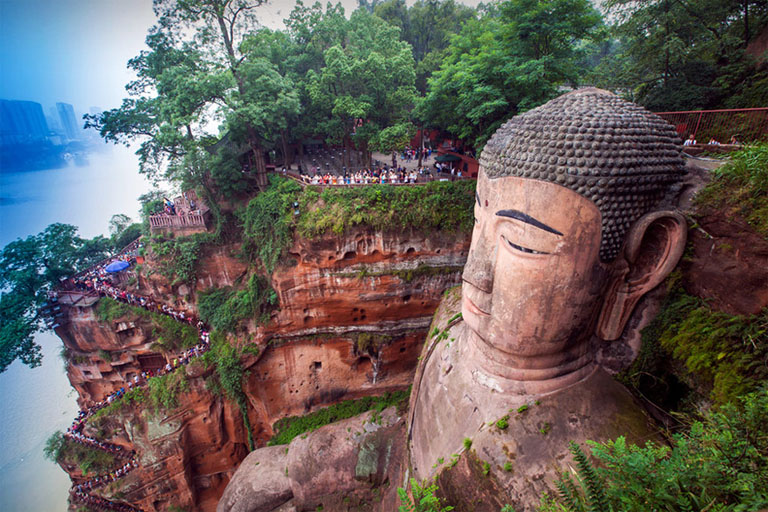
From the Leshan Giant Buddha I headed to the Mount Emei, one of the four sacred mountains of Buddhism in China and the birthplace of the Emei School of Chinese Kung Fu. Determined to experience Chinese kung fu, I’d signed up for a lesson at the Emei School.
I had some theory learning first, before doing training with my teacher. The first thing I learned was that martial arts can be internal and external. External studies defensive and attacking techniques. They have a specific goal to win a fight. The main focus is on developing physical strength and strikes speed. Internal is different, tai chi being the most ancient one. Anyone who masters it becomes agile and fluent like water. The Emei School combines the “hard” Shaolin and “soft” Wudang styles, trying to seek a balance between toughness and tenderness, external force and internal strength.
I was curious about tai chi because I told my teacher how much I enjoyed watching the figures rotate slowly and with grace. When seeing it in films or even people in parks practicing, their flowing motion simply mesmerizes with amazing lightness. It feels as if you could watch them forever. He explained to me that tai chi is intimately linked to the Taoist religion and one of many branches of Chinese wushu, a broad term applied to the countries’ martial arts. Wushu consists of two characters, wu meaning martial or combat, and shu meaning technique. Tai chi is now practiced all over the world, but few aspire to master it in all its complexity. He smiled when I asked if those few are actually the ones we see in films showing monks or warriors who can fly. I guess this was a common question made by Westerners and said that wushu is much more than just “flying”. Wudang wushu focuses on strengthening health. This approach allows a person to learn to control their inner energies, to work in harmony. Shaolin school is about internal softness and external hardness, and the Emei style is a combination of both.
I was shown the weapons used in Emei martial arts including a sword, spear, cane, as well as hidden ones, such as the hairpin and the needle. The teacher showed me how to practice chi, an internal energy that needs to be controlled. It’s amazing that in China there is a whole branch in medicine dedicated to the study of chi energy. Later that night I was thinking about Chinese kung fu. For me, it had always been just a sport, nothing more. Yet in China, this martial art is no national dance nor exercise routine, it carries the message that we improve ourselves through our daily routine. Practicing wushu looks for constant improvement of body and soul. If you work towards perfection, you toughen yourself and strengthen your chi.
It is said that a special bond between a teacher and students is made, an unbreakable, lifetime bond. My teacher saw me off with the message they valued more than anything – “enjoy each day”. At first I was surprised because I expected to hear a piece of wisdom I’d never heard before, but then I realized that there was nothing more important than to enjoy and seize every day. That was exactly what I intended to keep doing on this trip. I spent the night in the village of Baoguo, located just at the foot of the mountain, because I still wanted to explore this sacred mountain next day and take a walk above the clouds.
Climbing to the top of the mountain can be done on foot but bear in mind that it’s a 3100m high mountain, so you should start hiking well prepared. If not, there is an eco-bus and later a cable car that takes you up to the Golden Summit, with a towering 48m high golden statue of Samantabhadra Bodhisattva and the bronze Huangzang Temple, the first temple established on Mount Emei dating from the 1st century.
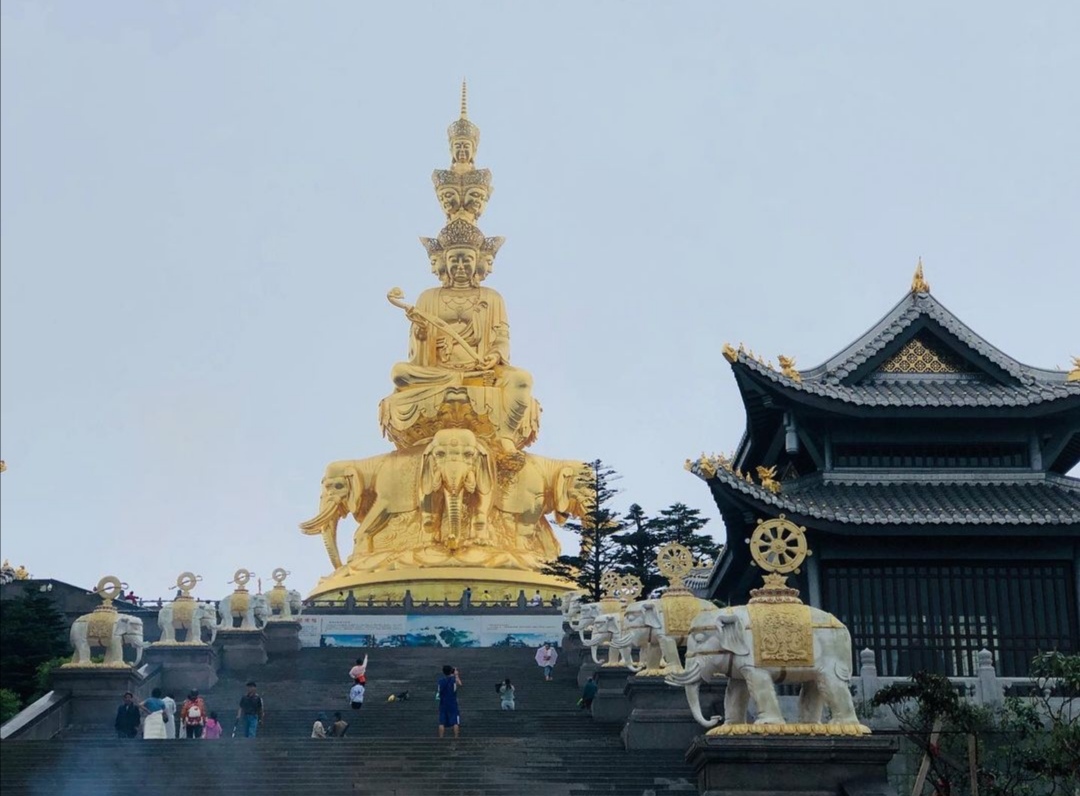
Take time to enjoy Buddhist architecture and tradition. Enjoy panoramic view of Mount Emei and surrounding. With a sightseeing platform at the height of 3,078 meters, and clouds lower than the peak, the scenic views are spectacular. In clear days, you can see The King of Sichuan Mountains – Mount Gongga (7556m) and if lucky, enjoy the rare wonder of clouds sea.
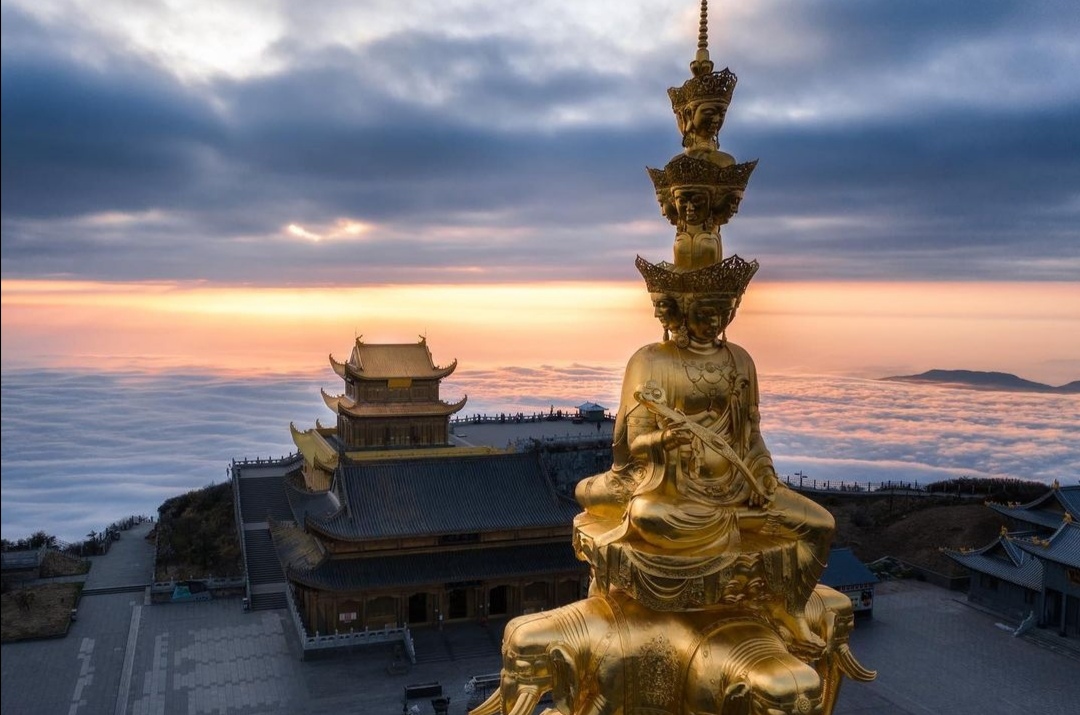
After a whole day on the Mount Emei, it was time to get back to Chengdu where I spent the night before catching a daily high-speed train to Kunming. Unlike other routes, this one didn’t offer any overnight trains at the time of my visit due to the railway interruption caused by rain. So, the following day I was heading to Chengdu East Railway Station, knowing in advance all the procedures that I got to rehearse over the last few weeks. I had my documents prepared, I went through security and luggage checks, went straight to the VIP lounge to kill time before going to the ticket checking gate and with a priority boarding ticket, get on my train as one of the first passengers to be welcomed on board.
You can expect high speed trains in China to be equipped with advanced facilities and good service to make your journey more convenient and comfortable. There are different places you can put your luggage onboard, racks and special luggage storage areas. Also, the air-conditioning, plugs to charge phones or laptops, rotating seats, and most importantly western-style toilets. Business class seat passengers can count on even more complimentary services including meals during dining hours, drinks, snacks, slippers, blindfolds, earplug, blankets, etc. If you wish to have a true sightseeing experience while being on the train, the business class seats can be turned 180 degrees and adjusted to face the window.
After some nice views along the way and an early lunch I had on the train, I arrived in about 6h at Kunmning South Railway Station. Kunming is the capital city of Yunnan Province in China, known as the City of Eternal Spring. Many people see it as a transit city, on their way to explore other scenic areas and Yuanyang Rice Terrace located some 366 km to the northeast of Kunming city.
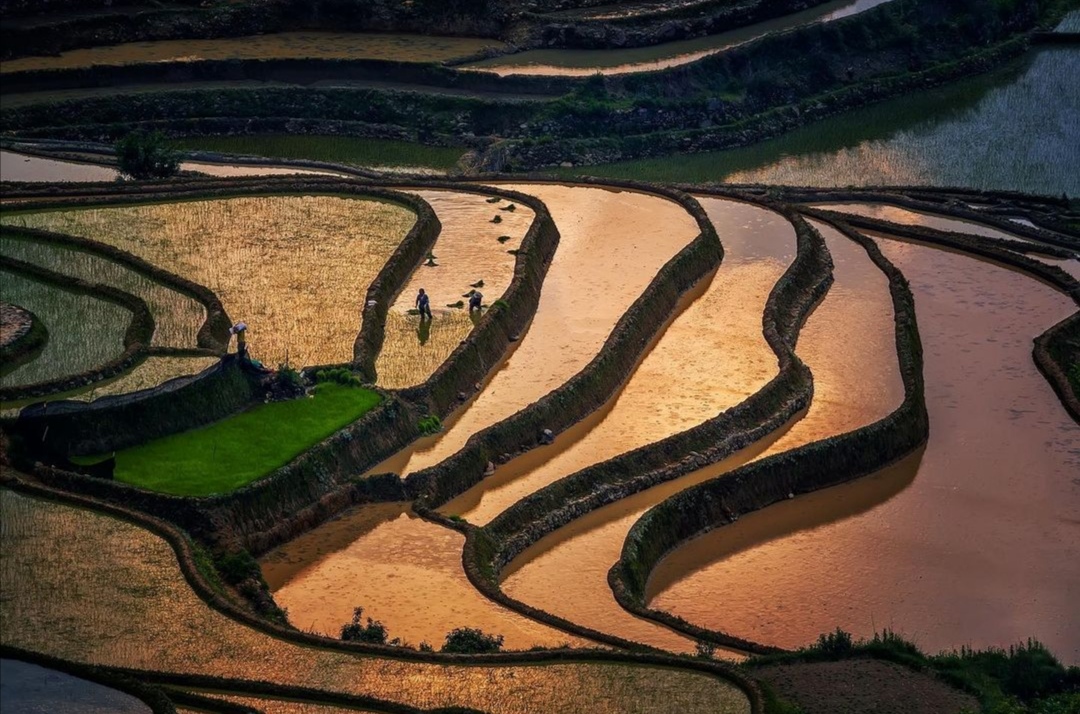
I’d only seen pictures of this rice terrace as its location was too far from Kunming to visit (this time), but all pictures surely looked spectacular. There are over 3000 steps of terraces built on the cliffs of mountains above 2000 meters. Hani people, the ethnic minority in Yunnan started building them thousands of years ago. Yunnan province is also home to 26 ethic groups, which I tried to get a better understanding of at the Yunnan Ethnic Village. I had only a day and a half in Kunming, so I didn’t have time to do or see much, especially because most sites required half to one day to be spent on location.
I spent the afternoon exploring the Green Lake Park in Kunming. The presence of the seagulls in the park was a sign that the fall was about to end, and that winter was coming. A flock of seagulls from Siberia spend their winters in the city of eternal spring, enjoying its pleasant climate during the winter months. The bread many people throw them is sufficient to initiate a feeding frenzy, all in attempt to get a good picture with seagulls, which reminded me of people feeding pigeons in St. Marc’s Square in Venice. I’m not a fan of birds flying around my head, so I wandered away from the crowd, finding other activities much more interesting. There were a lot of people at the park, families, friends catching up over a cup of tea, and elderly people dancing in groups. For them, it was just another regular day, and for me, it was a sight I started getting used to.
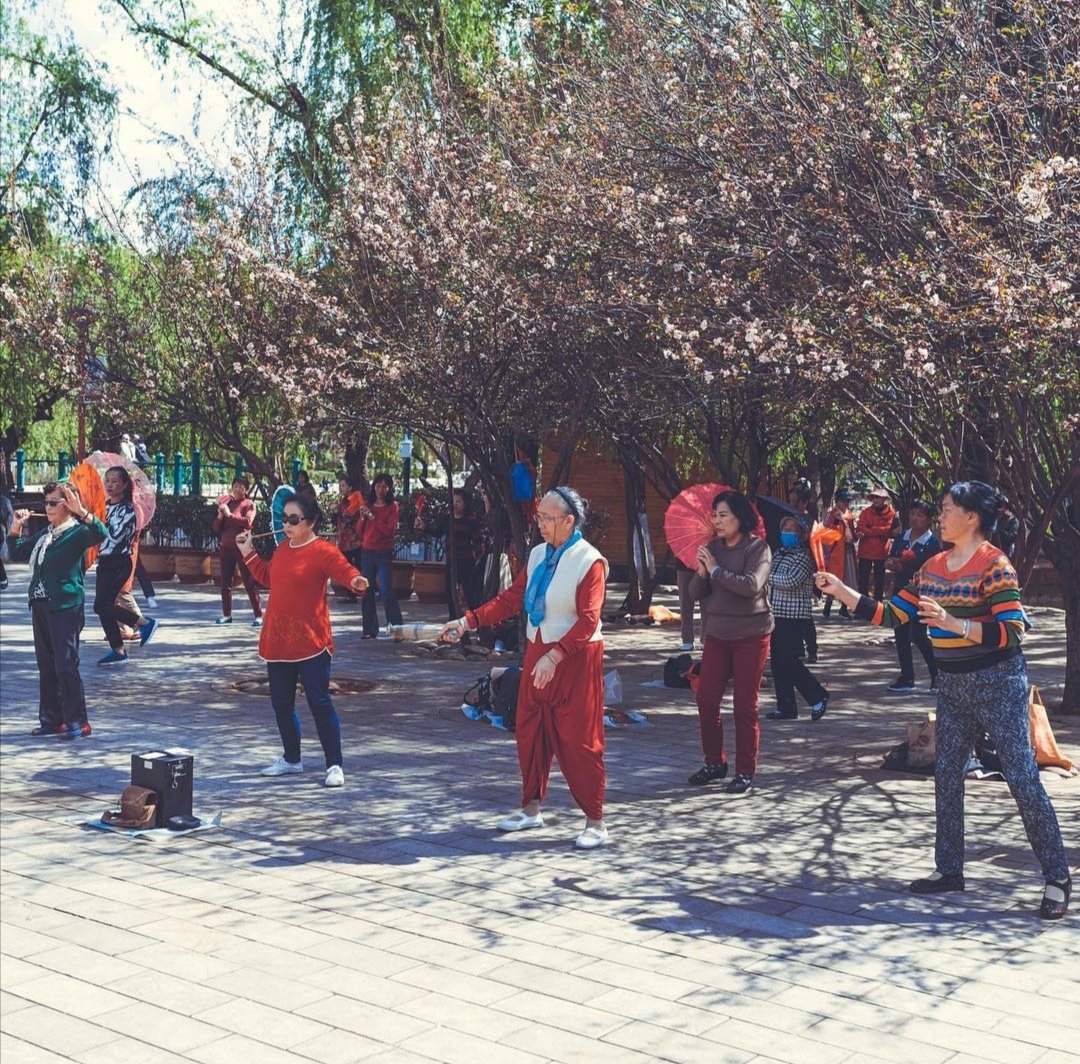
While walking around the park, I came across a group of people looking for suitable matches, for themselves or their children. No dating apps, only a scroll of paper with all the details listed, such as their age, occupation, and even their zodiac sign. Some use zodiac animals to determine whether their personality is compatible with potential partners because each animal is attributed a set of certain traits. I thought that was just insane. The only thing I knew was that with a start of each Chinese New Year a zodiac animal is changed, and that there are 12 animals.
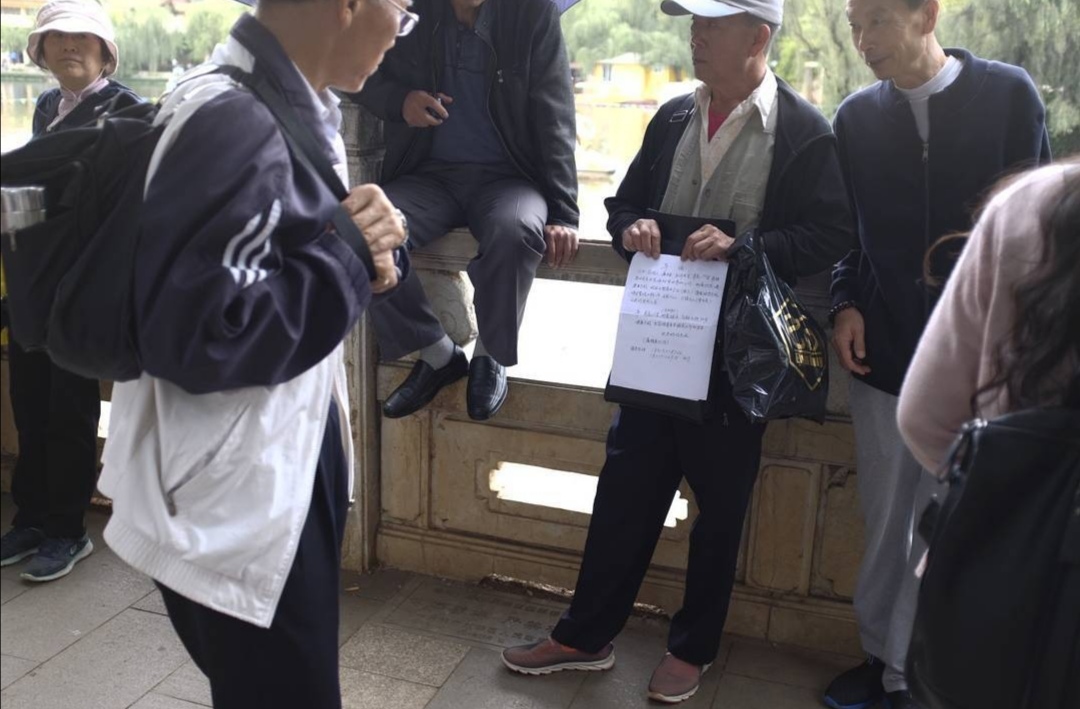
Curious to find out a bit more about it, I wasn’t surprised that China’s zodiac was yet another insight into the complex world of Chinese culture. The signs have been used as a way of dating years in a 12-year cycle of the Chinese lunisolar calendar. Furthermore, the traditional Chinese zodiac clock divides the day into 12 two-hour intervals. Everything starts with a rat and 11:00pm to 1:00am interval is the hour of the rat, followed by next animal in a line up. The stories related to the zodiac animals are different and some theories indicate that they originated along the Silk Road trade routes, representing animals introduced by Indian Buddhists. Other theories come from folk stories about the Jade Emperor who invited all the world’s animals to a banquet, yet only 12 came. Or another one that the Buddha himself invited all the animals to protect his palace, but only the first 12 that finished the race proved to be the worthiest. Those 12 animals are the ones China’s zodiac knows today.
Different beliefs, but also positive and negative traits underpin each animal. Not to sound disrespectful, but I did take a look at the animal representing the year I was born in, and I didn’t really identify with any of the traits listed. However, the whole system does seem quite complex, and I’m not sure I understood half of it. I guess I decided to leave this gem of Chinese culture remain a mystery to me; otherwise, it would’ve had me lost in time too.
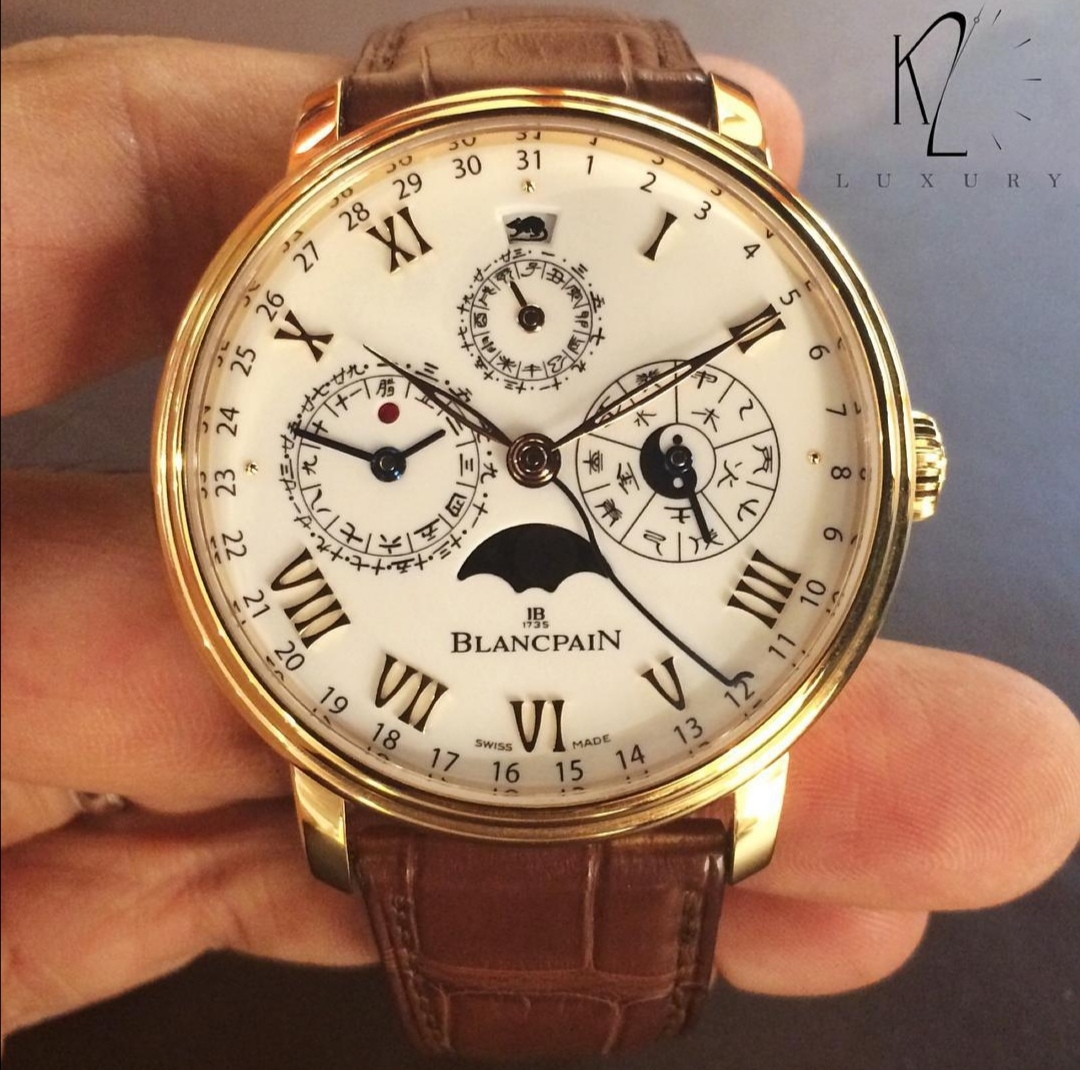
The next day I went to Yunnan Nationalities Village where each village represents a different ethnic group living in the province, offering a possibility to learn more about their traditional folklore. Once I got there I rented a bike, which allowed me to take a look at every village.
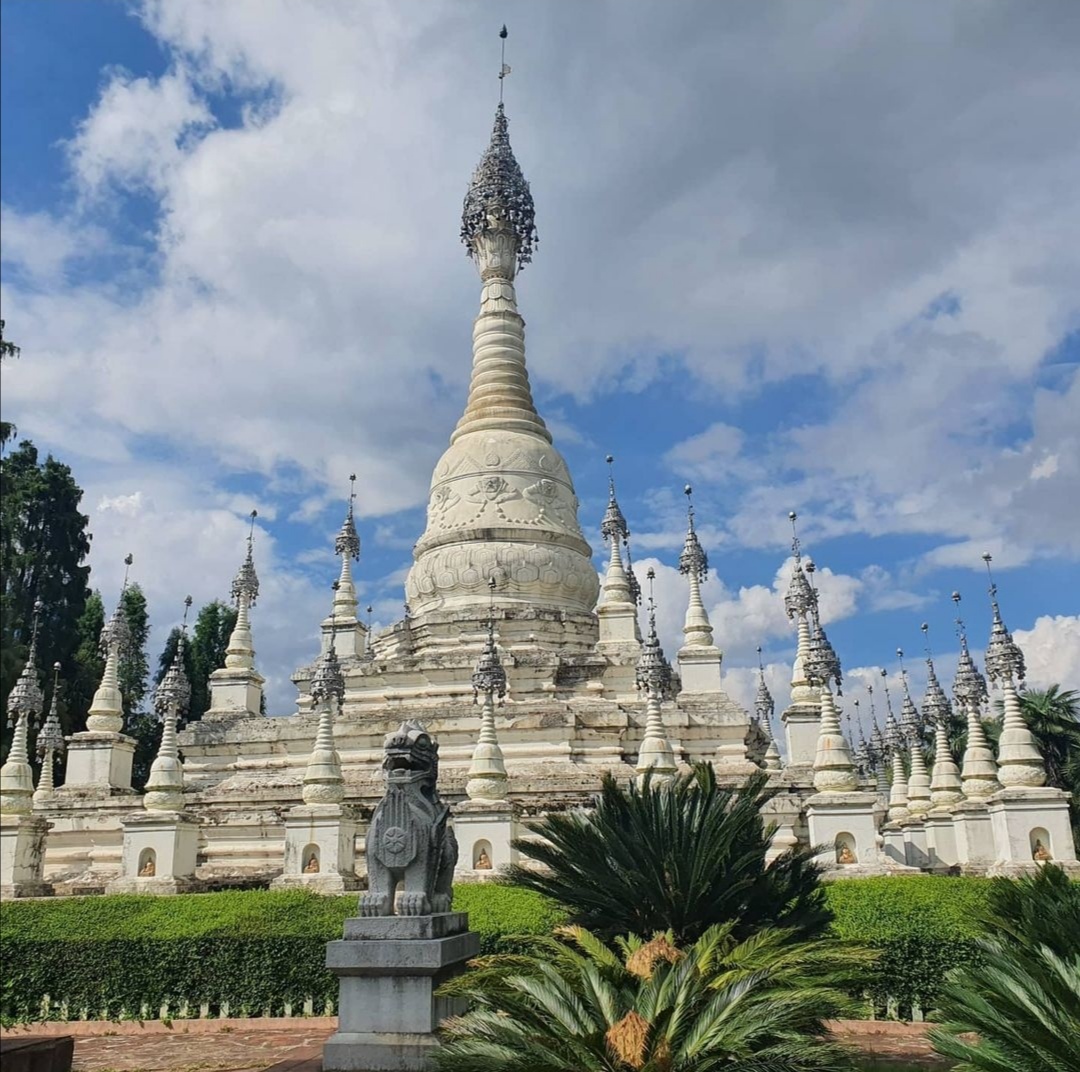
It was a unique opportunity to get a feel of these ethic groups’ way of living, as many live up in the mountains. From bamboo houses built on stilts and a sacred Burmese-style temple in Dai village to traditional Bai residential houses and the three white pagodas, each ethic group had a performance or some sort of exhibition that brought their traditions closer to visitors.
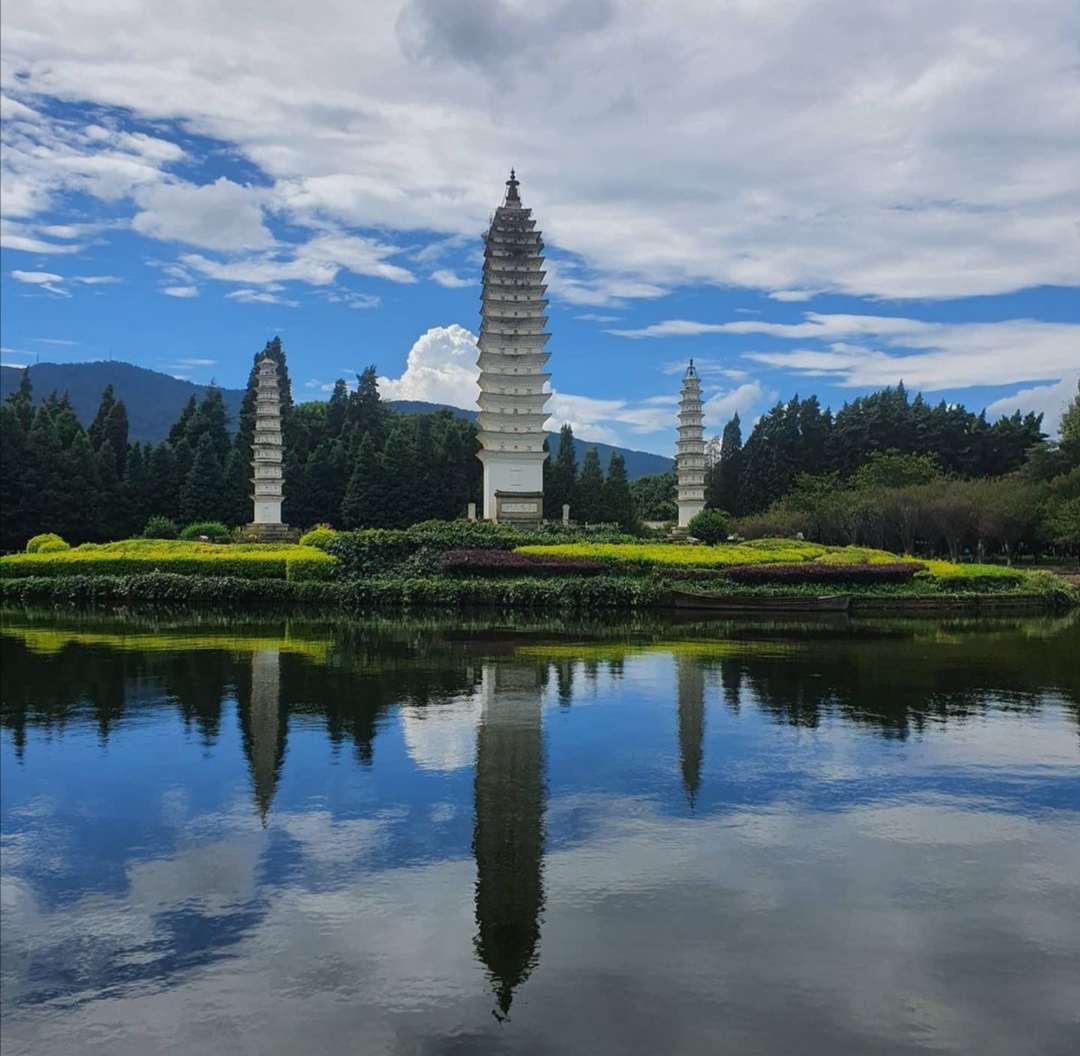
Bai people’s philosophy is reflected in their tea-serving tradition. The first cup of tea you’re offered has a bitter taste, the second sweet and the third is a mix of different tastes. The tea served symbolically represents our experiences in life, our ups and downs, sending a message that hard moments are followed by better things in life. In Yi village you’ll learn about Yi people’s respect for tigers, finding them engraved in the wall, and see a totem column erected in the center of the Solar calendar square.
The Yunnan Ethnic Village gets you immersed into a colorful myriad of people, ethnic constructions, and costumes. There are different performances taking place in these villages, from singing, dancing, painting to making food and clothes. It’s impossible to see them all but be sure that whichever one you do get to see, it will be a memorable one.
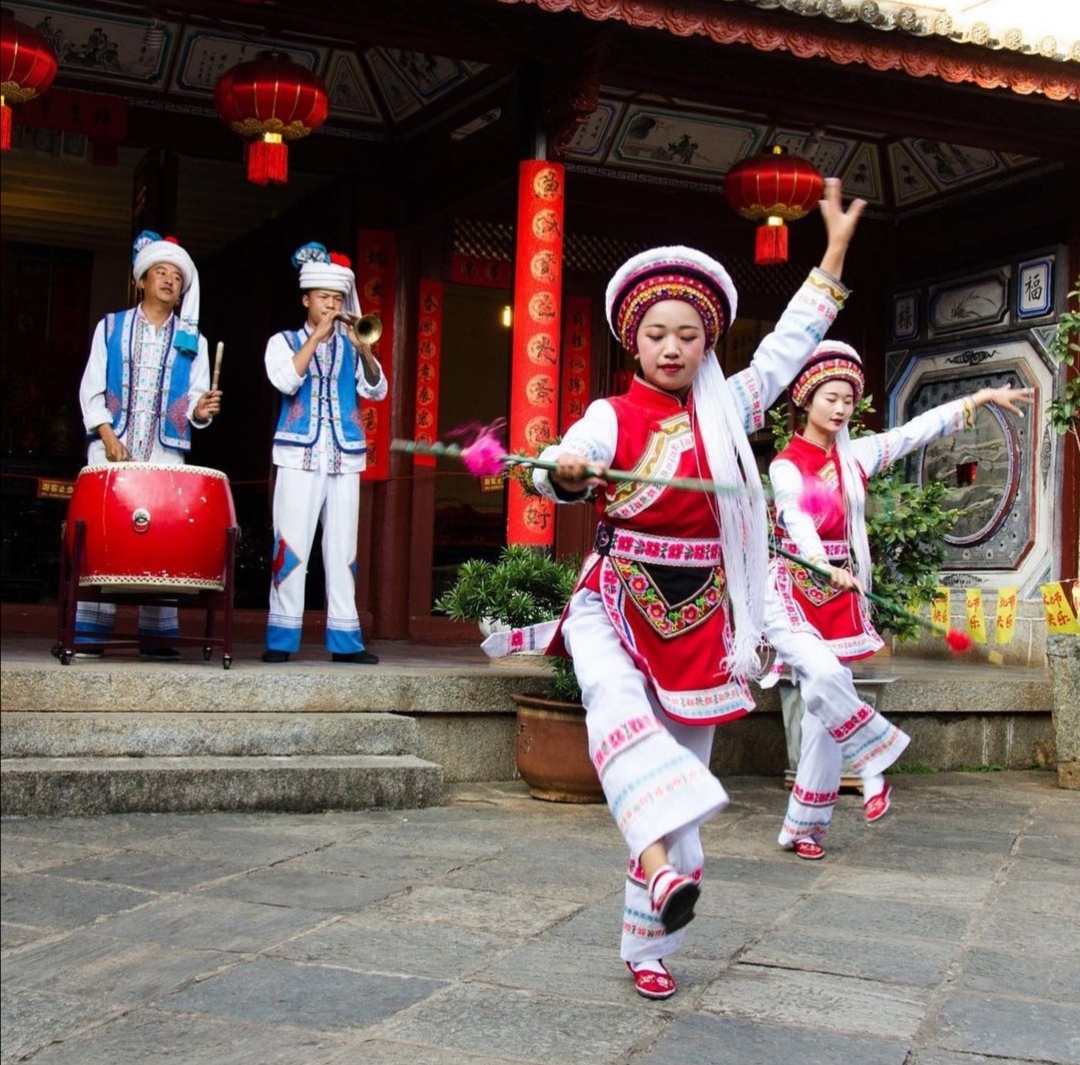
An overnight train from Kunming to Guilin supposedly takes around 18h but the ticket offered was the one with transfer, which I didn’t fancy at all. Switching trains in the middle of the night, or early morning was out of question. So, I took the G bullet train at 7.30am, which was the fastest one (four and a half hours) compared to D trains that cover the same distance in about 7 hours. As soon as I found my VIP seat, it didn’t take much to doze off in a comfortable reclined seat, snuggled under a blanket. The mornings were so foggy anyway that I didn’t feel I was missing much in terms of scenery. When I woke up, we were crossing one of many viaducts high speed trains run on.
These viaducts are all the same, no variety in design to expect or look for, as there are only two standardized options of either 24m or 32m long bridge beams. However, they are built to save farmlands and help trains move across rivers. In terms of construction, each beam is produced in temporary factories set up along the future railway, plus it gets transported no more than 8km. Tracks and embankments are also all standardized, allowing producers all around China to simply apply copy paste principle when making the necessary parts. It is these standardized construction techniques that, among other things such as labor and local sources used, cut the cost. China’s plans about the bullet train system though go as far as building first underwater high-speed route. The project with the aim to move the bullet train system under water was approved in 2018, and the tunnel is supposed to connect Ningbo, a port city south of Shanghai, to Zhoushan, an archipelago off the east coast. In years to come, I’m sure we can expect more news and surprises coming from China.
I wanted to stretch my legs a little bit, so I thought I’d use a five-minute break once we pulled into the Guiyang train station. Some people got off the train to buy food from platform vendors, for which they had only few minutes. I found the food service on high-speed trains much better than the one offered on overnight trains. As a business-class ticket holder, all the food, drinks, and snacks are included. Also, a special attendant is assigned for business class, making sure you have everything you need. If you travel first or second class, you can always go to a dining car. All the food provided on generally all trains was mostly Chinese style. Porridge, steamed buns, boiled eggs for breakfast; spicy meals like steak with pepper sauce, beef curry, diced chicken, or steamed pork with vegetable, with soups and noodles for lunch and dinner.
Also, there are food trolleys selling packed meals at meal times, as well as snacks and packed fruits at all other times. Other options include buying food from platform vendors or have food delivery service booked online two hours before your train’s departure. This means that your food will be delivered straight to your seat once the train pulls into the station. However, for this you need to know Chinese and have the food apps installed on your phone. This service is available in bigger railways stations, and I noticed that it was the preferred one among the travelers. It’s funny that all the tips for the Westerners, that were food related, included the information on buying food from KFC and Mc Donald’s. Though, when it comes to trying to communicate your food preferences to the staff on train that hardly know a word of English, I understand why getting food from the aforementioned food chains might be less of a headache.
The food on night trains is not included in a ticket price, so you can either eat in a dining restaurant or grab some food and snacks from a food trolley. The food is not ready-made like on high-speed trains, but the selection of food prepared in the kitchen is often much more limited compared to dishes offered on bullet trains. What is the same though is the presence of water dispensers in all carriages, because in China hot water and noodles are everything.
Guilin is a popular tourist destination in South China's Guangxi Region said to have the most beautiful landscapes. There is a saying that “the scenery in Guilin is the greatest under heaven”, and the next day when I took the Li River cruise from Guilin to Yangshuo, the views definitely felt like being from another world.
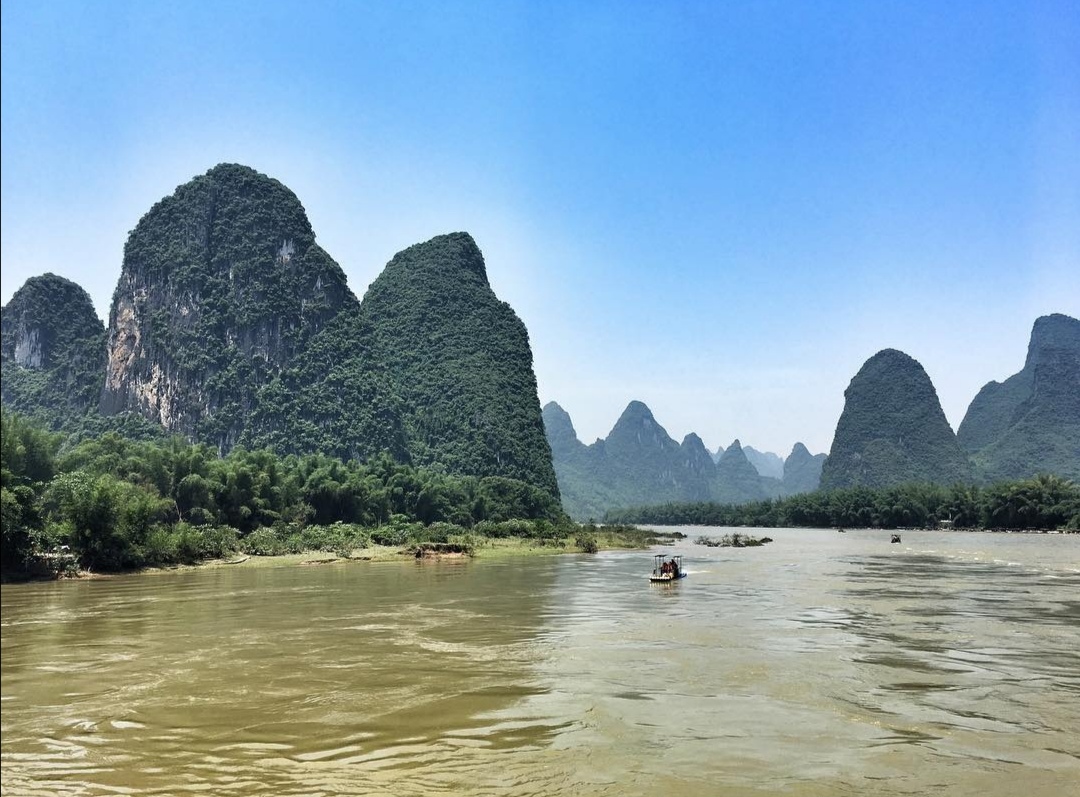
The karst scenery of green hills, the jade mirror-like water, craggy mountains appearing in layers, mysterious caves, buffalos grazing in the rice fields, a fisherman with his cormorants balancing on a pole, women washing clothes by the river with karst peaks in the background. The scenery that has always been an inspiration for poets and painters, is simply surreal. The scenery is also famous for being printed on the back of a 20 yuan note, but the note doesn’t do it justice.
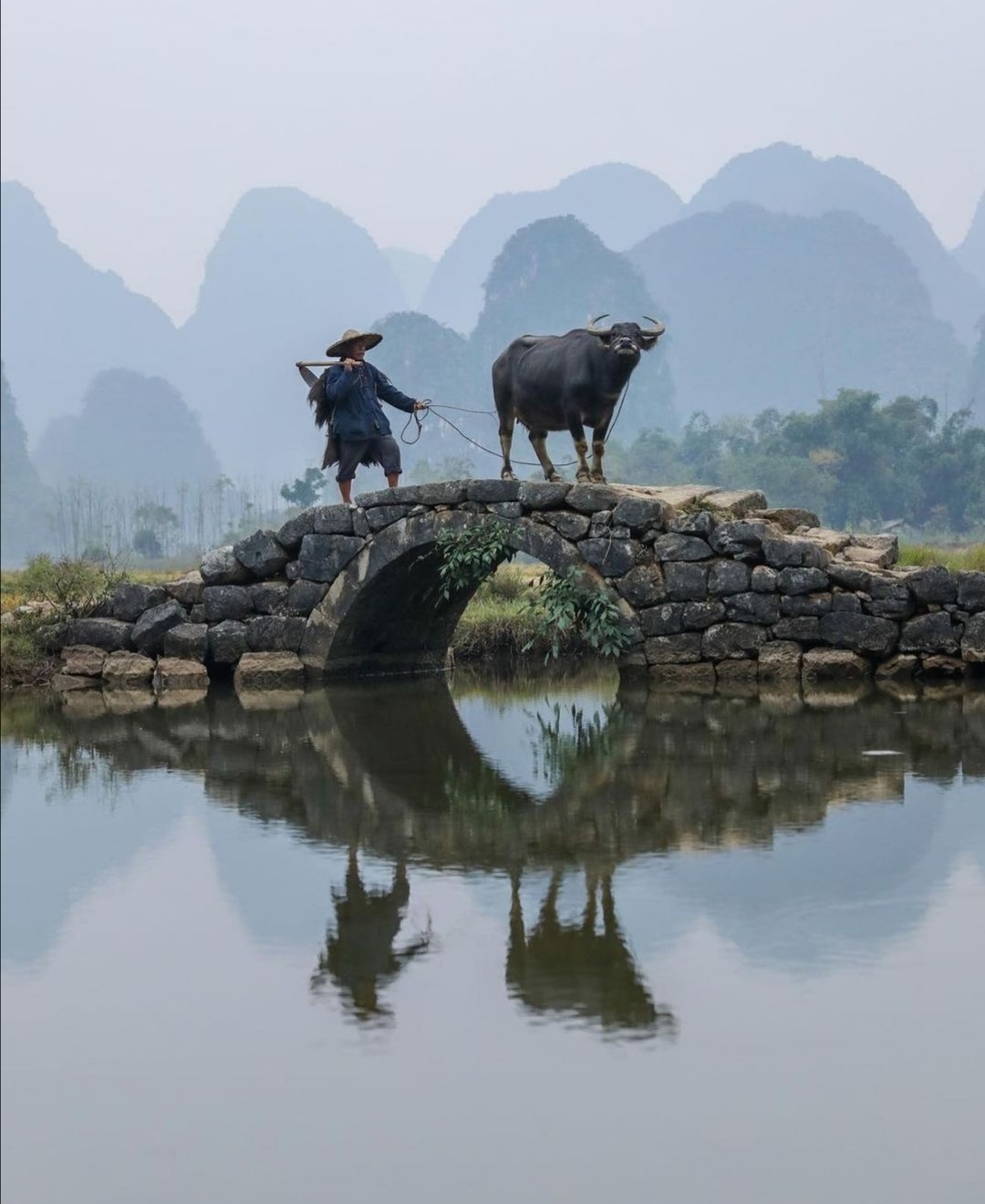

Four hours later I was in a small town of Yangshuo. I decided to continue exploring the countryside on a bike and get off the beaten track. While cycling through engulfing natural greenery, I saw some rice terraces and a tea plantation. These are maybe not the ones everyone comes to take a picture of, but to me it didn’t matter. I felt one with nature, farmers working in the fields, and villagers who would smile and wave back at me. I also passed by Yulong River, often explored on bamboo rafts. No matter how you decide to explore the area, I’m sure the experience will be quite unique.
It is no surprise that these locations have drawn many film directors. Guilin can be seen in “The Painted Veil” and “Star Wars: Episode 3”. However, once you’re out there, you realize you don’t need movies as this mystical land quickly gets you swept into your own world of imagination.
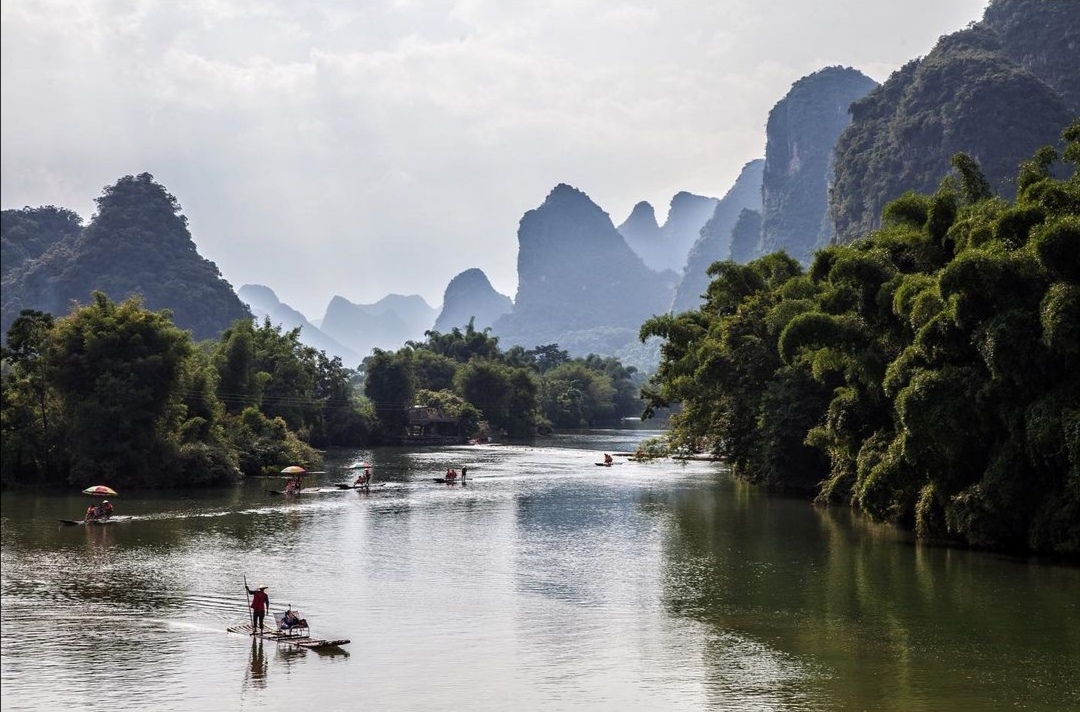
I wasn’t ready to go back to Guilin, so I changed my plans and spent the night in Yangshuo. I visited the Yangshuo’s West Street, which was far from what you’d expect from a small, quiet town during the day. With lots of bars and restaurants, loud live music and karaoke singing, this street seemed to have gathered everyone living in Yangshuo. I was surprised by the contrast. Tranquil scenery and quiet town during the day turned into a place to visit for a nightlife experience. I noticed that lots of bars and cafes had a European feel, menus came in English too, and English could be heard in every corner.
The street, although the oldest with a history of more than 1,400 years, is also called a “foreigners’ street”. Lots of tourists visiting, and foreigners living or studying here, explain this mix of cultures and western-style influence. The atmosphere was vibrant and colorful, lots of things going on at the same time. In Yangshuo you can try their famous local dish “Beer Fish” if you like spicy food. It was too hot for me to eat it all, as the fresh fish is fried in a wok along with beer, hot and green peppers, but few bites I had really tasted great. Also, a local snack you won’t be able to miss are rice noodles, topped with gravy, pickled vegetables, peanuts, and various types of meat. Guilin rice noodles can be found within 100 meters and at every corner of the city.
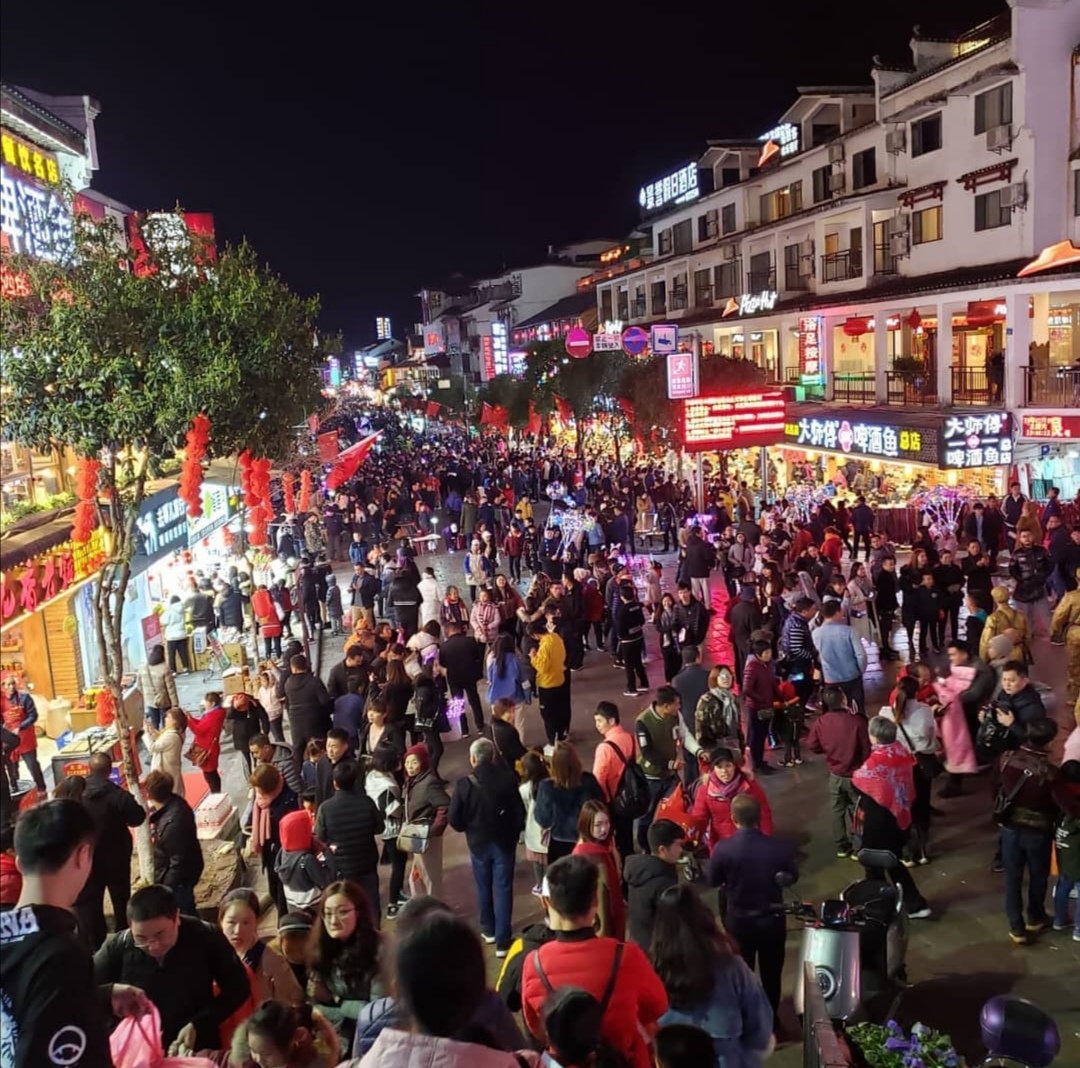
There are lots of things you can do in Guilin or visit around. Visiting Guilin Reed Flute Cave only 5km from the city center was an interesting experience. In this “Palace of Natural Arts” you’ll see an array of amazing rock formations, including stalactites and stalagmites, stone pillars and curtains, as well as different animal shapes created on the walls made out of limestone, which got worn down after countless years of water erosion. Although each cave’s interior is a world of itself, you always know more or less what to expect in terms of formations when you visit one. But in Guilin Reed Flute Cave, what strikes you first are the multi-colored neon lights that light up the entire cave. With a show projected on the ceiling of the cave and the lights that made the stalactites look like decorating lanterns, I could say that I’d never seen anything like it before. Also, the myths and legends told by the guide made me feel like I was in Ali Baba’s cave.
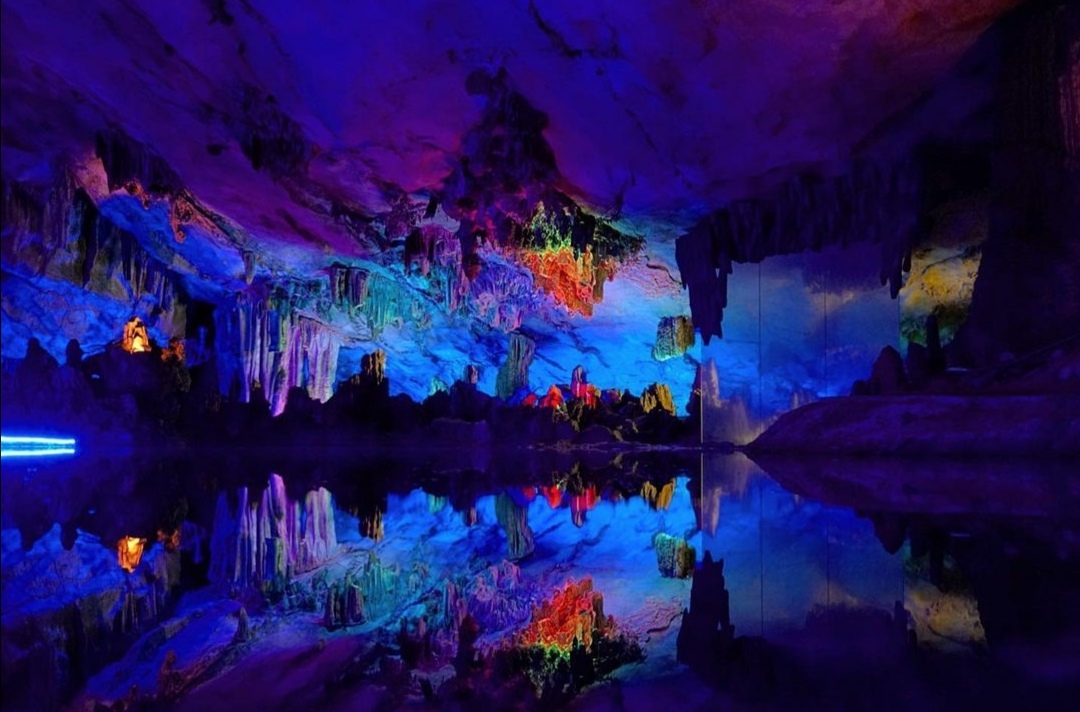
In China, they like to go big on lights and the sound and lighting effects they use. In Guilin there are various performances on the lake to watch that tell stories and legends through folk singing and dance. On my first night in Guilin, I headed to the Sun and Moon Towers on Fir Lake linked by a 10-meter glass tunnel under water. These Buddhist style pagodas shining silver and gold represent the bright future of Guilin.
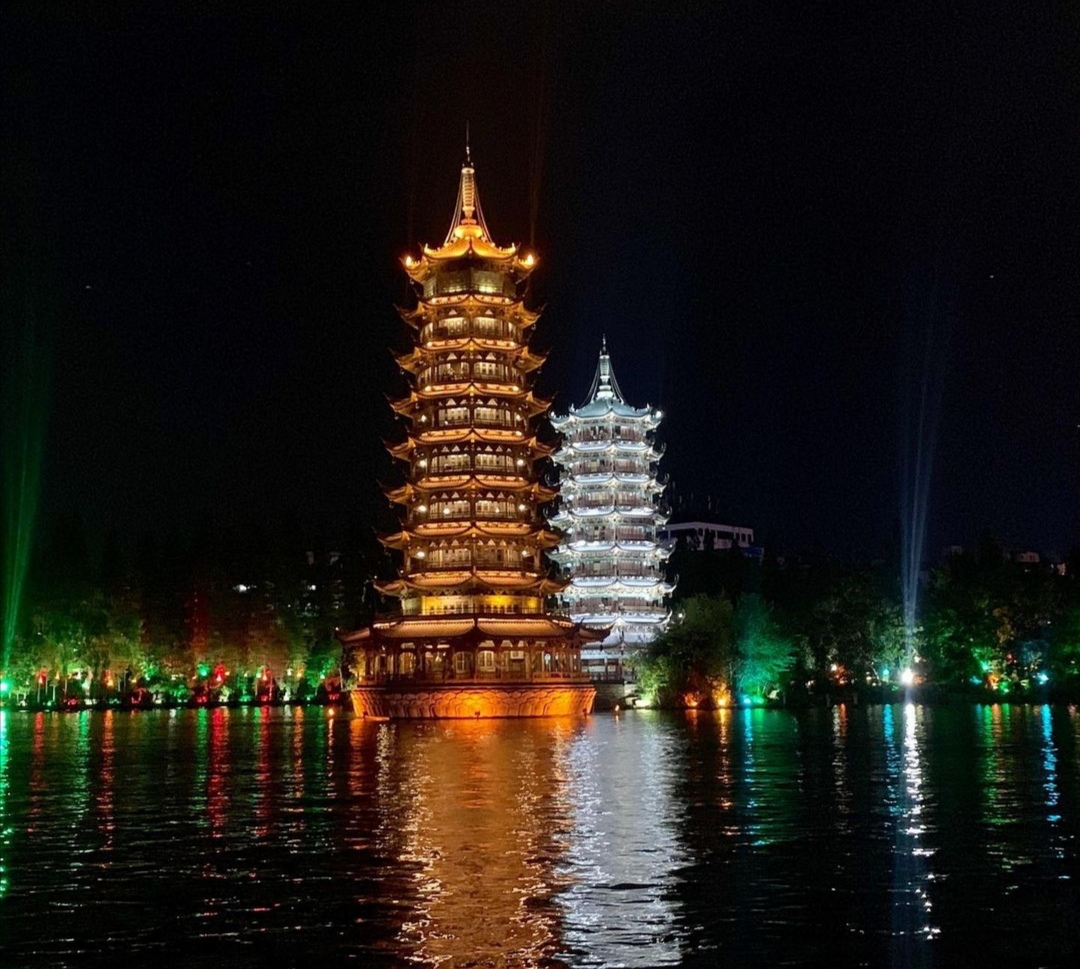
The next city on my route was Shenzhen and I was looking forward to getting there by an overnight train. You can take a bullet train and be there in 3 hours, or you can book a “hotel on wheels” and arrive in 12 hours. I had the whole traditional style soft sleeper booked, although I was hoping I’d get to travel at least one route in a new soft sleeper.
Unlike traditional soft sleepers that have 4 berths in a lockable compartment, China’s new soft sleeper types on overnight high-speed trains come with double-deck berths along the aisle. Arranged in parallel to the running direction of the train, each berth represents a small compartment equipped with a small table, a reading light and a power socket. The new soft sleepers look more updated than traditional ones and are 5cm longer. Given the fact that rarely someone books an entire soft sleeper compartment and that there are usually 4 people sharing it, the new style berths offer more privacy by simply pulling the curtain.
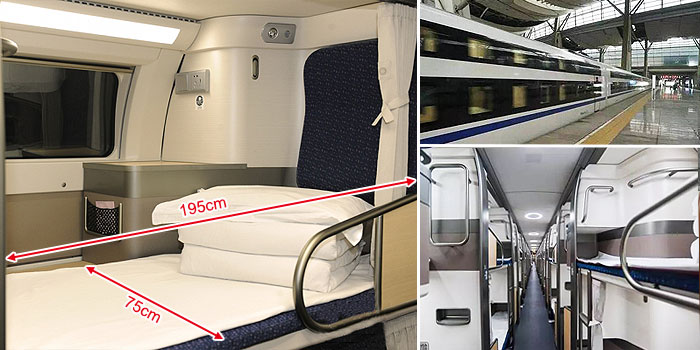
Disadvantages are that there is a small rack inside of a berth for passengers to put their luggage, so if you travel with a bigger suitcase or carry more bags, both passengers have only the space underneath the lower berth to store it all. Also, you can either lie or sit on your bed. If you need to stretch legs, you have the corridor to stand. When it comes to toilets, no matter what night train you book, make sure you always carry with you your toiletries for your pre-bed or morning routines, toilet paper, towels, soap, and slippers.
I was already accustomed to the homey feel and traditional looking soft sleepers. They weren’t luxurious, they were far from business or deluxe sleepers on some European trains. Still, they were the closest I could get to having comfort and privacy while traveling. My days were always filled with different activities and having a good night’s sleep between two destinations was a priority. A private bathroom would’ve made it a lot better, because you never know in what condition you’ll find the washrooms and toilets. Still, soft sleeper compartments are always a better option than hard sleeper open compartments for 6 people. Actually, for an overnight journey I wouldn’t even consider them as an option because beds are short and narrow, with just basic facilities and only squat type toilets provided.
With only few more cities to visit, I was getting closer to the end of my rail journey. I had a feeling that I was done with discovering ancient and rural China, and my arrival in Shenzhen proved me right.
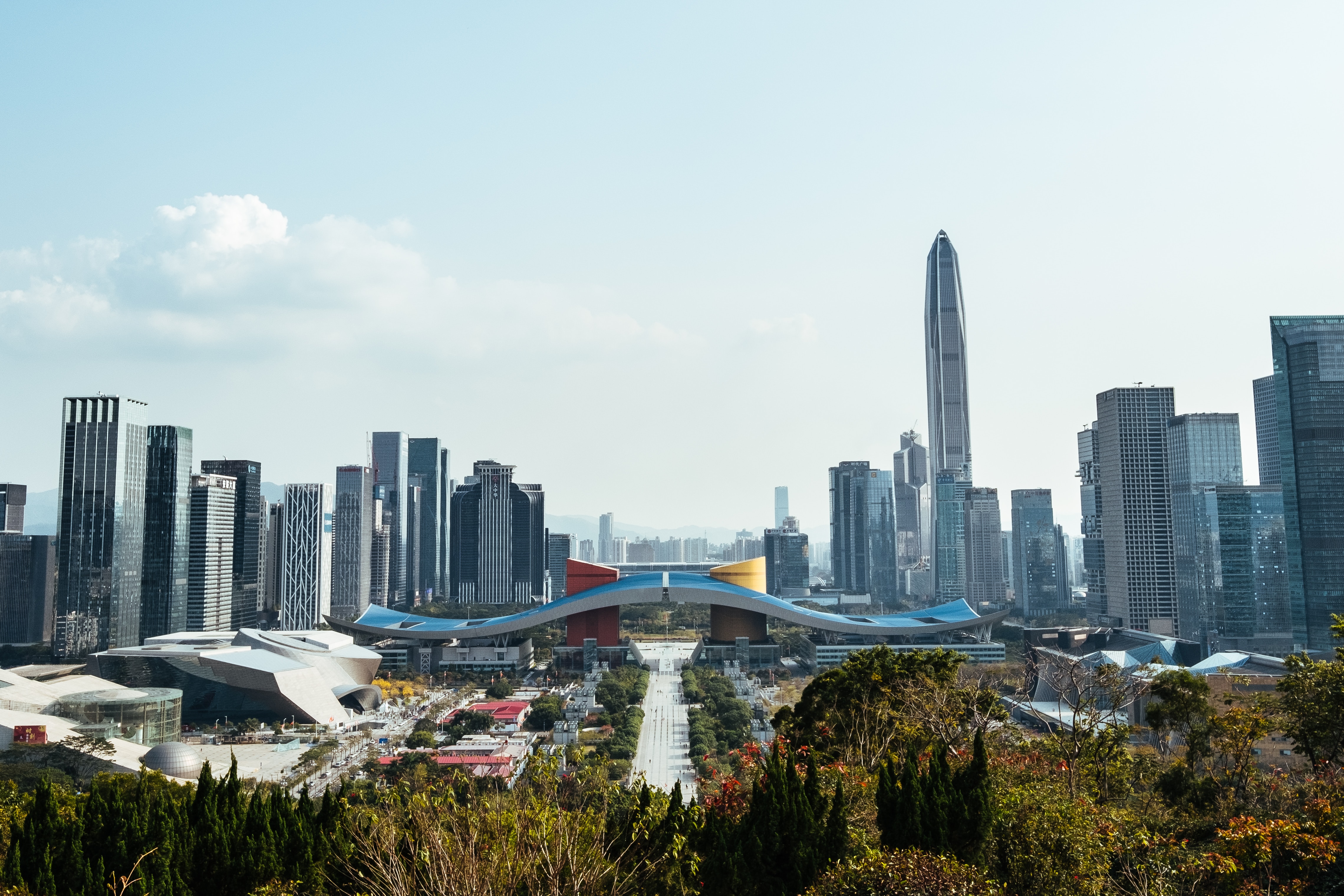
The city that was nothing more than a fishing village some 40 years ago now has over 12 million people living in it. It has become “the city of future” and home to some of China’s leading companies like Huawei and Tencent. Shenzhen and the surrounding Pearl River Delta have become known as “the world’s factory” because the chances of you owning digital devices made here are very high. You won’t find ancient temples in Shenzhen, but for the modern architecture lovers the city will be a paradise.
Dubbed the Silicon Valley of Hardware, this high-tech hub is not famous for its food markets selling spices but electronics market, Huaqiangbei being the biggest one, where you can find electronic appliances, and computer and electronic parts to make a product on your own; if you know how, of course.
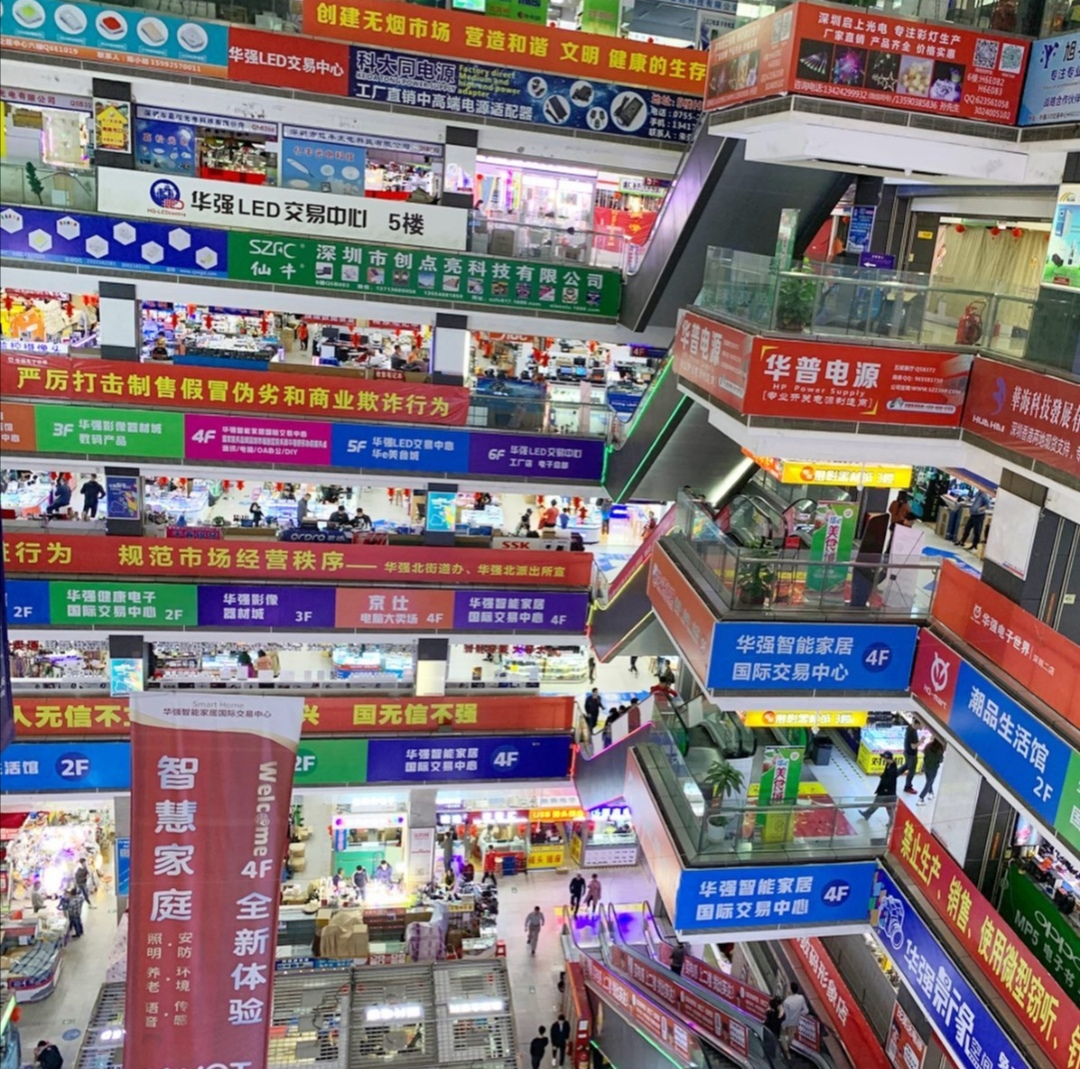
The city links Hong Kong, another equally bustling metropolis, to China’s mainland. There are three ways to reach Hong Kong, and vice versa. You can go by metro, high-speed rail or ferry, and you will have to cross the border before reaching the city on the “other side”. I was staying only one day in Shenzhen, so I didn’t include Hong Kong in my visit.
A big city, such as Shenzhen, couldn’t be visited in one day, so I decided to have at least a bird’s eye view of the city’s skyline. I headed to the tallest tower in Shenzhen - the Ping An International Finance Centre.
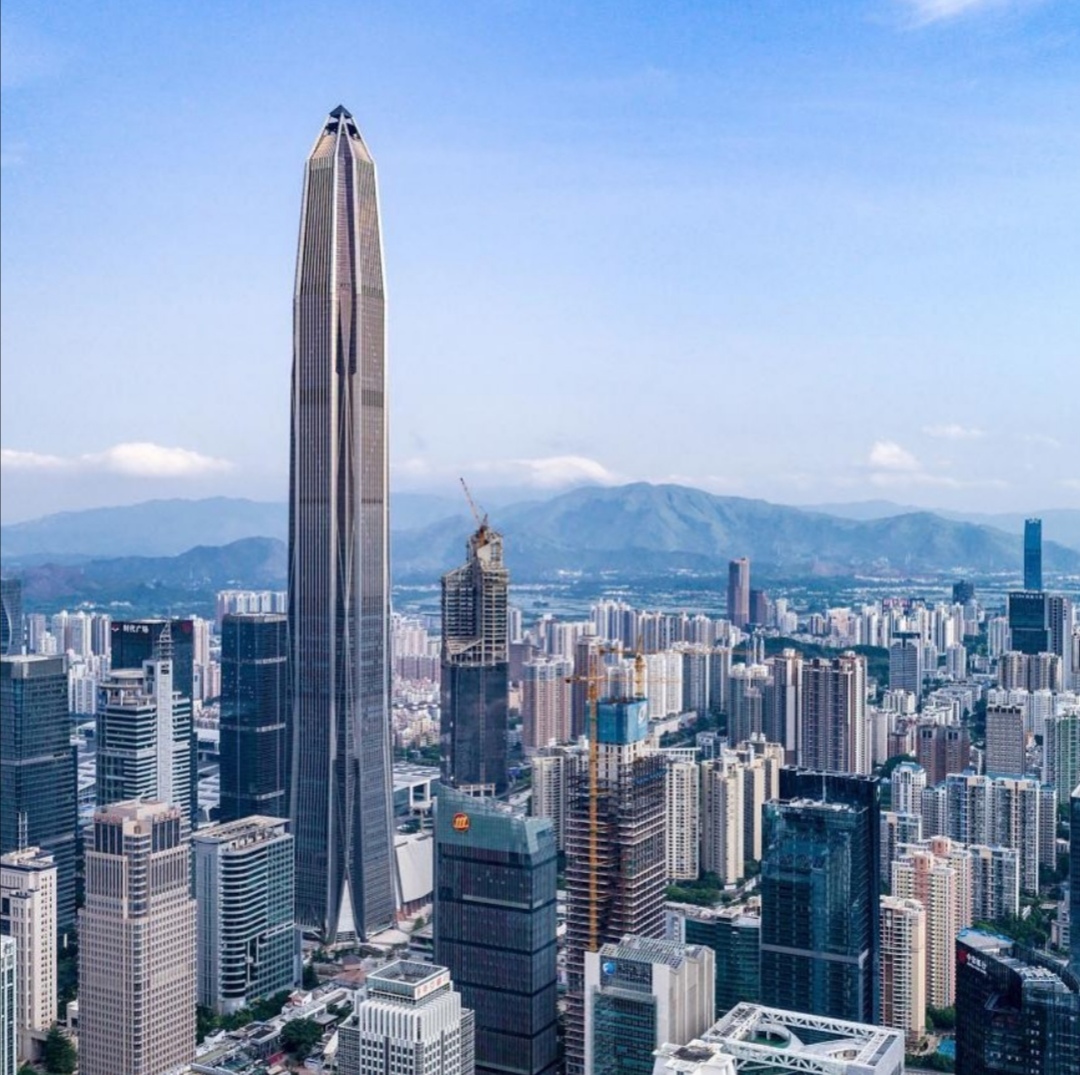
With a height of 599 meters, this building has over 100 office floors, and there’s a hotel and quite a luxurious shopping mall. I have to say that all of this was a big change of “scenery” after weeks spent in not so futuristic parts of China. When you pass the checkpoint of the Ping An Finance Center, you can first find the model of the tower and watch a short video about the Shenzhen’s development over the last four decades. After that, the high-speed elevator will get you in less than a minute to the top floor. The observation deck “Free Sky” located on the 116th floor occupies an area of 1400 square meters. With the floor to ceiling windows and glass floors, you can see not only the skyline of Shenzhen, but also of Hong Kong, the two cities in constant tech development race.
Other interesting facts about the building are that it is named after Ping An Insurance Company of China. The words Ping and An mean ‘safe’ and ‘well’. It is the tallest building in Shenzhen, the second tallest in China, and the fourth tallest in the world. When completed in March of 2017, its construction cost was estimated at $1.5 billion.
You can spend as much time as you want on the observation deck, taking a look at all sides of the city. I liked the view of the west side with Shenzhen Golf Club, a large green space, and Shenzhen Bay.
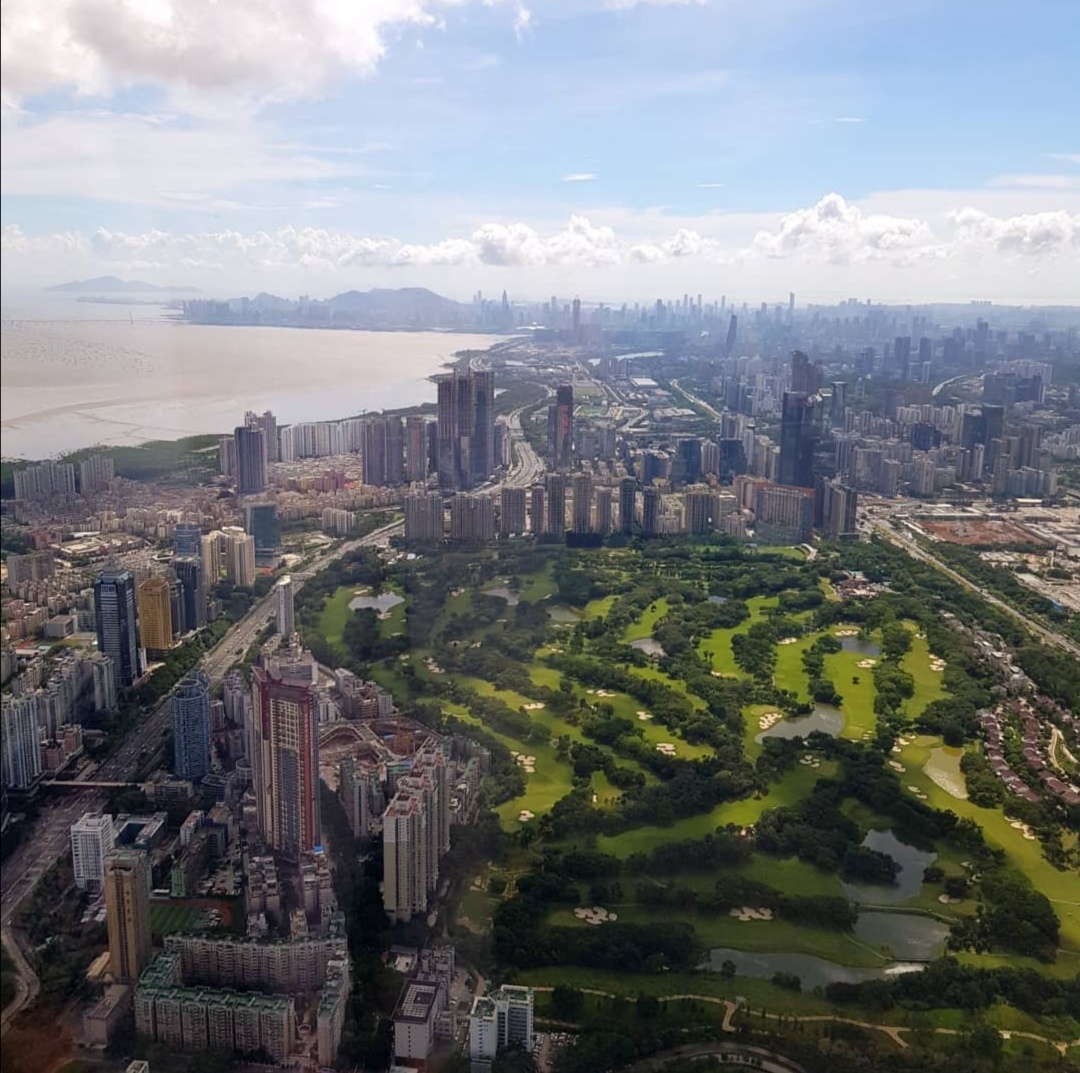
Shenzhen is also known as a shopping destination, where you can easily find imitation luxury goods such as Rolex watches, Gucci shoes, and Chanel bags. If you like to bargain and negotiate the price with vendors, there are numerous malls you can visit. I wasn’t really crazy about the idea of going to the mall, so after visiting the observation deck I found a restaurant where I could take time and enjoy having some dim sum and tea.
Guangdong province is the home of dim sum, where dim sum culture began in tea houses in the second half of the 19th century. Thanks to Silk Road travelers, the dim sum meals made of small plates of dumplings and other bite-size snacks spread throughout the country. Dim sum dishes are made with wide range of ingredients including seafood, meat, and vegetables, and can be prepared steamed, fried, or baked. Having dim sum is always accompanied by tea that you choose from a variety of different types. To get a refill, you need to signalize it by taking the lid off and putting it on the side of the teapot. Choosing dim sum dishes reminded me of eating tapas in Spain. It’s an experience that is fun, delicious, and always leaves you wondering if there’s a mix or a flavor you’ll be sorry if you don’t try.
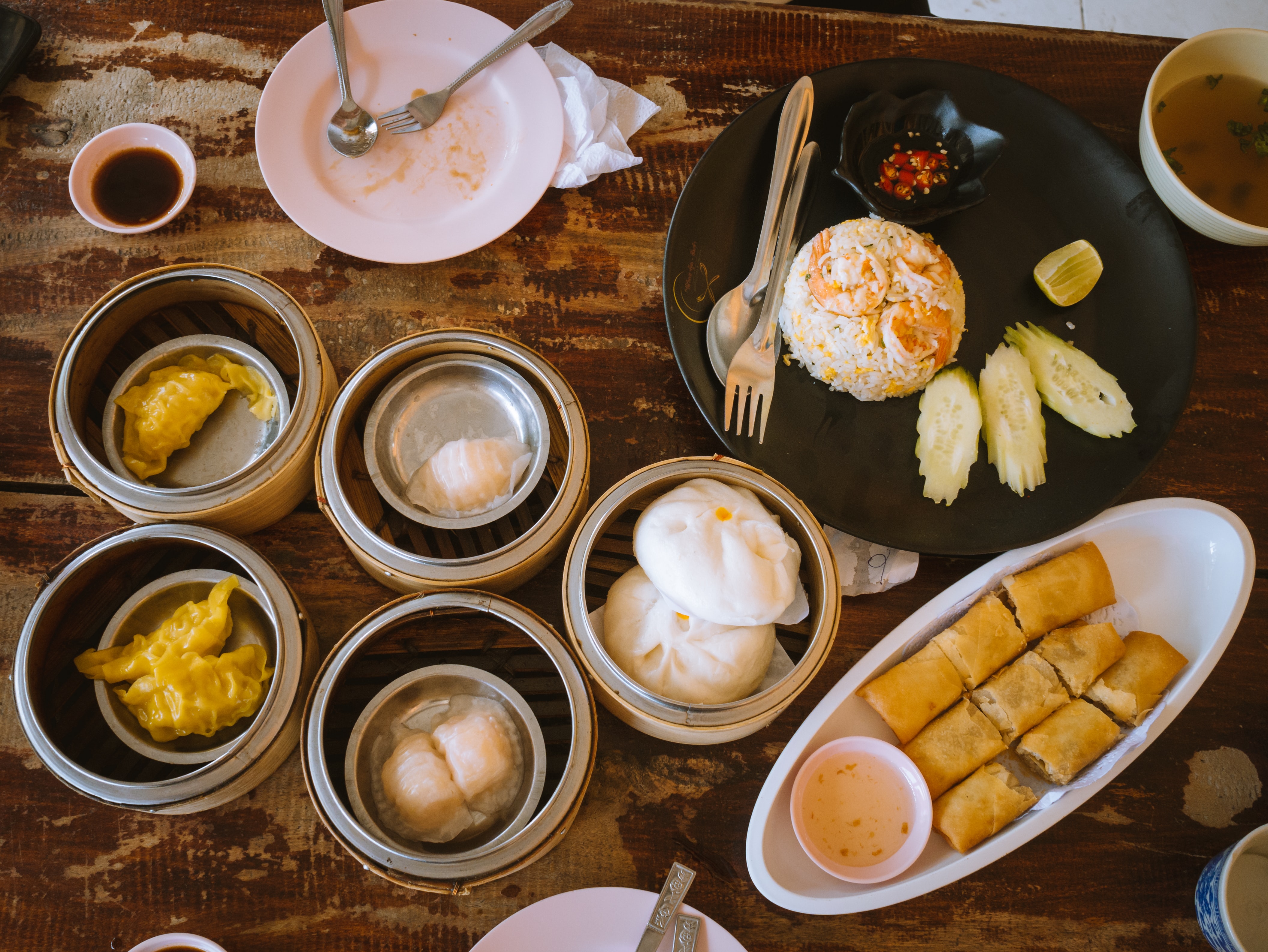
After all the food eaten, I took a stroll in Lianhuashan Park, a public, hilly green space in the same Fuitan District where I spent the whole day. The park is quite large, and it is the place for families and friends to enjoy, while having some nice views of the city.
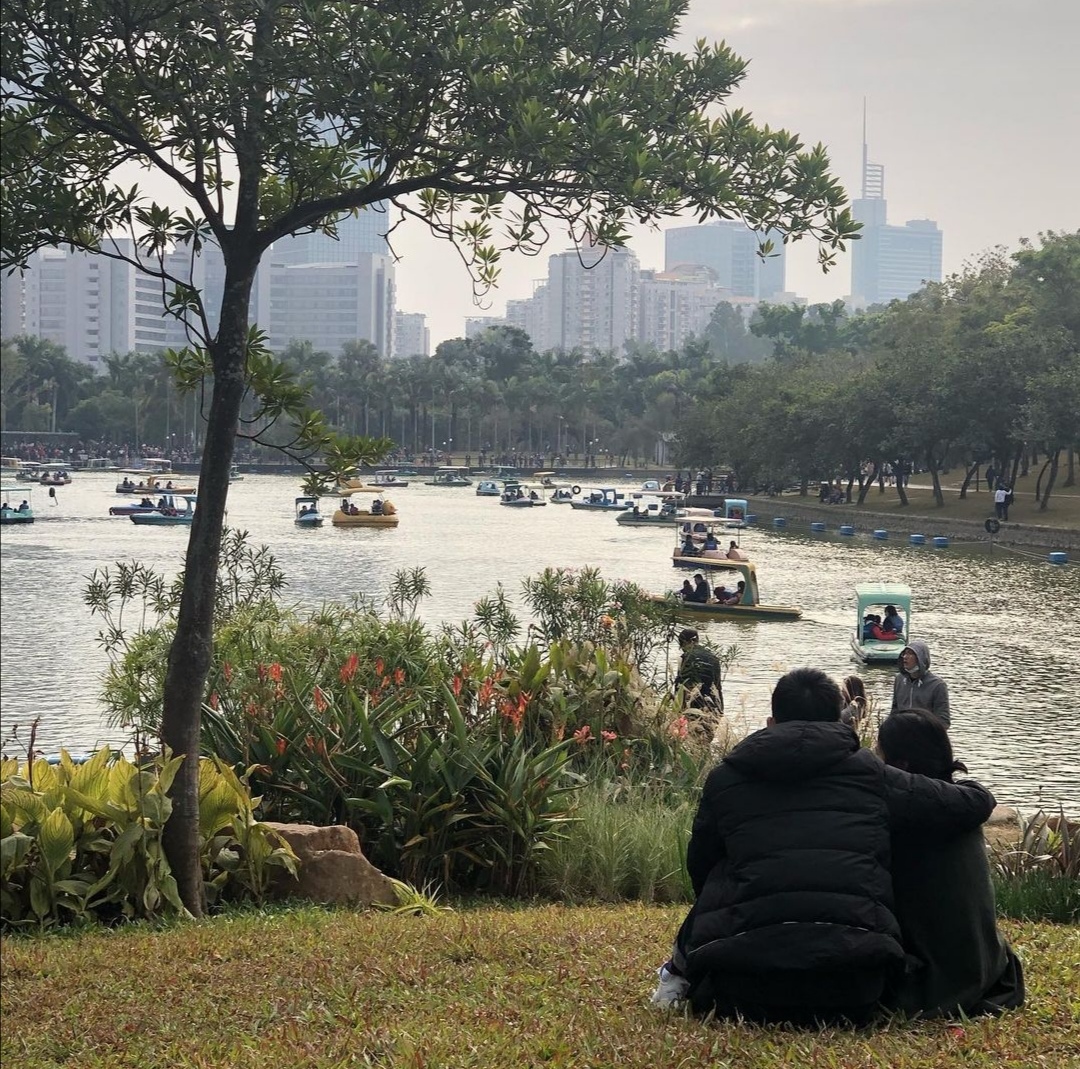
Back at the train station I went to the left luggage office first to pick up my bags. Although you don’t have to arrive at the train station as early as you’d normally do at the airport, still make sure you have enough time for everything. Especially in bigger cities where train stations are quite huge and with several floors to navigate, it might take some time to figure out which way to go or where a specific service you need is located. Sometimes the lack of English signs makes it even more confusing.
I was really excited about my last train ride on this journey because I was about to reach my final destination, Shanghai, after a night spent in a deluxe soft sleeper. Of all the trains booked on this trip, none had deluxe soft sleeper compartments, until this one. For the first time, I had my own private bathroom with a western-style toilet, and even toilet paper provided. Deluxe soft sleeper compartments have two berths, both bigger and wider by some 10cm than berths in a regular soft sleeper. There is also a sofa to sit on while drinking tea and watching Shenzhen disappear in the distance.
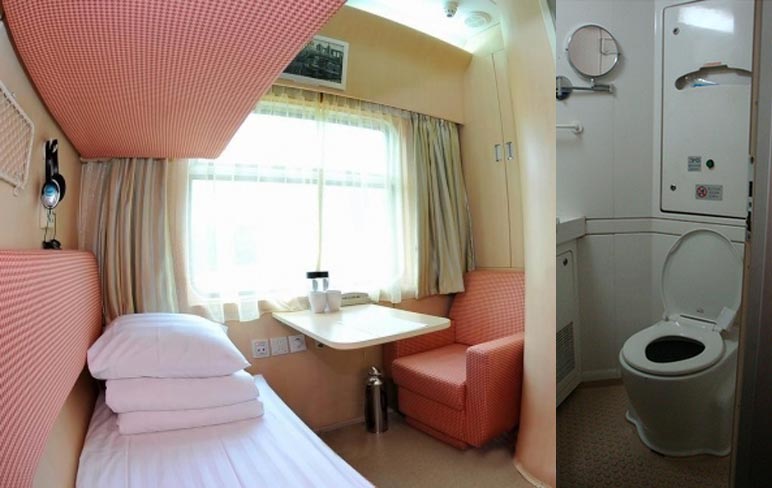
Clean and fresh bedding is provided, and above the sofa you’ll find a small closet if you wish to put some of your clothes in there. There’s also a TV, headphones, a table and sockets, as well as a trash can. The compartment offers more space and what I liked the most, apart from the clean, private toilet of course, was the “living room” area with the sofa as a central piece. Slippers, eyeshade and earplugs were provided, which was not always the case with soft sleepers I’d previously traveled in.
While I was enjoying a cup of green tea before going to bed, I was thinking about Chinese tea culture. While traveling through China, I realized that this hot beverage had been an inseparable part of China’s heritage and history. As for almost everything else of importance in China, tea also boasts the legend of its discovery. The history of Chinese tea is said to have begun with Shennong, a mythical sage healer and ruler of prehistoric China, also considered to be the founder of Chinese medicine. One day, while he was experimenting with herbs, a tea leaf fell into the boiling water, thus changing its flavor. The rest is history which led China become the earliest country in the world to plant tea and position itself as the homeland of tea culture.
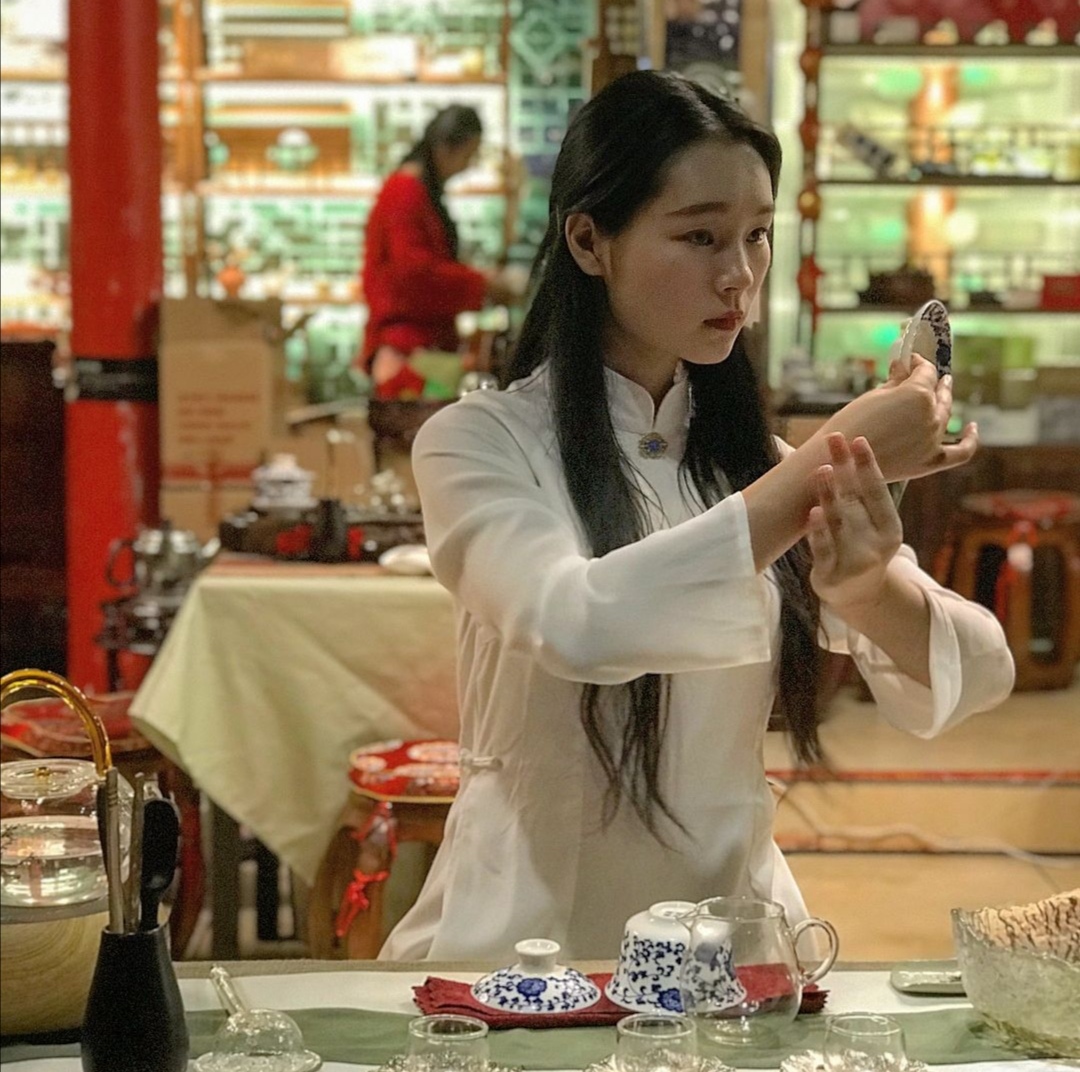
Back in Chengdu, the city that is one big tea house, I learned that Chinese Buddhist monks were among the first to develop the habit of drinking tea, making records of stories and poems in tea books. The custom of drinking tea later spread from China to other countries through cultural exchanges via the ancient Silk Road. This beverage nowadays is so widespread, but it wasn’t until my trip to China that I started making difference between tea drinking for refreshment and tea drinking with the aim to be in a harmonious unity with nature. In China, you’ll see people drinking tea all day. Tea is seen as a key to good health, but it is also a way to keep yourself calm and balanced. Everywhere I’d been in China, I had my tea served with respect, as if the act of serving it came from another level of consciousness.
After 11 hours on the night train, during which I had time for recapitulation of my experiences in China, I arrived in Shanghai. There was still one more place I wanted to visit before leaving China. It was Shanghai Museum and Jin Xiya’s Bamboo Carving Art exhibition.
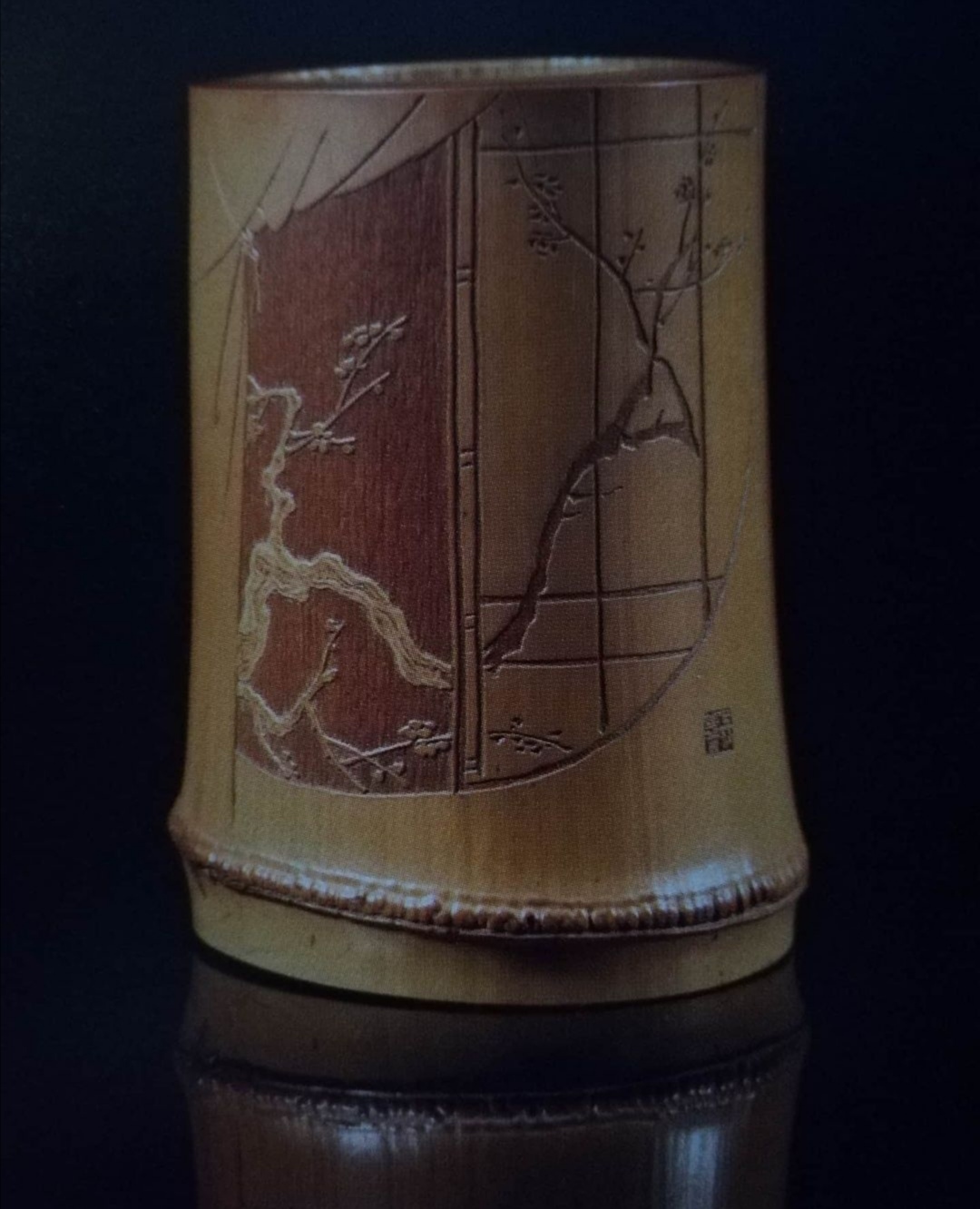
Carving is one of China’s oldest art forms. Turning bamboo, brick and wood into works of art is not less relevant today than it was in ancient times. While traveling through China, I marveled at different engravings that decorate ancient temples and traditional old Chinese houses. At the museum, you can have a close up look at some of the finest bamboo carvings.
In China, bamboo is a symbol of simplicity and rigor. Bamboo bends with the wind, but it never breaks. These are the qualities that bamboo carving artists are said to possess. Over the centuries, since it was first practices, this art form kept improving and developing. Victor Hugo once said: “European art is idealistic, while that of the east is fantastic.” And indeed, motifs carved on wood, brick and bamboo are usually scenes inspired by Chinese history, folk tales and legends. Works can be as simple as having a flower or a bird carved into a cup or they can be quite intricate, with calligraphy and poetry combined on a tiny little piece.
The Chinese art of engraving has become famous around the world and can be seen more and more at some of the museums on all continents. A hobby practiced by middle-class people has become over years a profession for artists who show their much-admired skill in art pieces some are willing to pay a good price for. Masters have developed over time their own techniques, built on talent, patience and an exquisite eye for details, that gets passed down through generations in order to keep it in the family.
My last day in China arrived, and as I was packing, I got caught up in my own thoughts trying to process this whole journey. I was pleased with everything I learned and saw, yet I couldn’t shake off the feeling that there were still so many places to visit and discover. It was like choosing dim sum meals. You know you can’t try them all, but you try to have as many as possible, hoping that you’ve selected the best ones. And China, with all its historical, cultural, mythological, religious, artistic, and futuristic layers, continues to be a mysterious world. A whole new world.
On one side I encountered China, a country of traditions and customs deep-rooted in ancient history, cherished throughout centuries to the present day. On the other hand, I saw China that already lives far in the future, with its goals set on technology development, rail speed, and the new branding presenting “Designed in China” to the world instead of just “Made in China”. I realized that the more I was discovering, the more questions I had. Yet, I had to admit that even if certain things didn’t make sense to me, they made perfect sense to Chinese people. For example, having only one time zone. For a country the size of China, one would expect at least several time zones. However, time always seemed to have run differently in China.
Today is the same – with Chinese New Year celebrated in February and the calendar with animal symbols. Towns that remain from ancient times, legends and folk stories that still live today in theatrical performances, either classical or combined with hi-tech equipment. Traditions and customs that are passed down from one generation to another as a way to keep people together, and to keep a memory of China’s heritage alive to this day. A country where community-based lifestyle exists alongside grand skyscrapers, in both big and small cities. Still, smaller cities by Chinese standards are still double in size compared to some big European capitals. A country where distance between cities is shortened by speed, allowing its people, even those living in the most remote areas, feel closer and more connected.
China is not the country you can really prepare yourself for before arriving, no matter how many guide books on China you have read. It is far away, it has a language so difficult to understand, and finding someone who speaks English will not always be an easy task. But what you will always find are some noodles to eat, just like with pasta dishes in Italy. Sometimes, they will be your safest choice in the markets selling dubious-looking food or restaurants where menu in English offers "Odd-Tasting Chicken" and "Twice-cooked Dork".
You will discover a highly collectivist culture that shows you how we’re all connected, to each other and to the community we are being part of. Travel experience in China also includes lessons on harmony and balance, which are sometimes expressed directly, and sometimes found in nuances of our response to outer world.
It is the outer world that keeps constantly changing. Many provinces in China have undergone a rapid urbanization that transformed local communities. Single-story houses got replaced by towering apartment buildings, changing the skyline of the city and the reality of people faced with modernization. Technology development goes hand in hand with regional advancement and growth. However, China’s past economic growth came at the cost of serious air pollution issues, imposing a threat on people’s health. The way forward has been laid out in the long-term “beautiful China” targets to be accomplished by 2035 in order to combat this problem and improve air quality in China.
Although when you arrive in Beijing, Shenzhen, or Shanghai, you see modern China in these “cities of future”, know that ancient and rural China also exists, awaiting to be discovered. All the legends, great emperors, temples on sacred mountains, the art of calligraphy, bamboo and wood carving, martial arts, and stunning nature. All these hidden gems of Chinese heritage are connected by trains – high-speed trains and overnight trains. The train was my ticket to a whole new world, and it was the best one I could ever purchase.